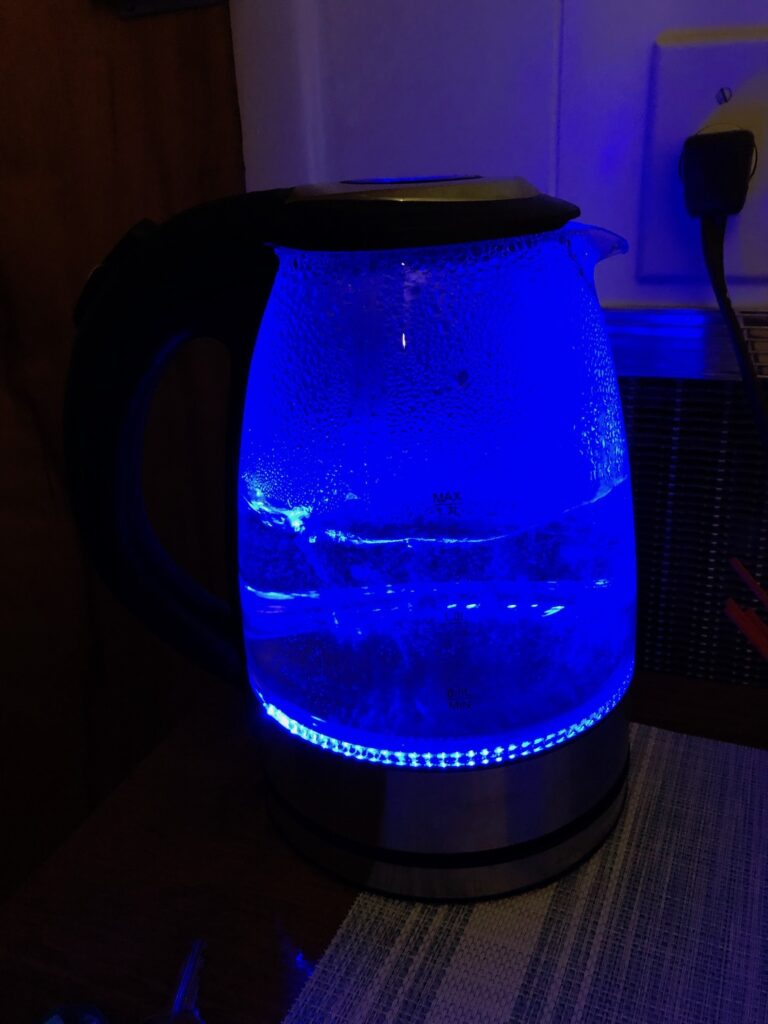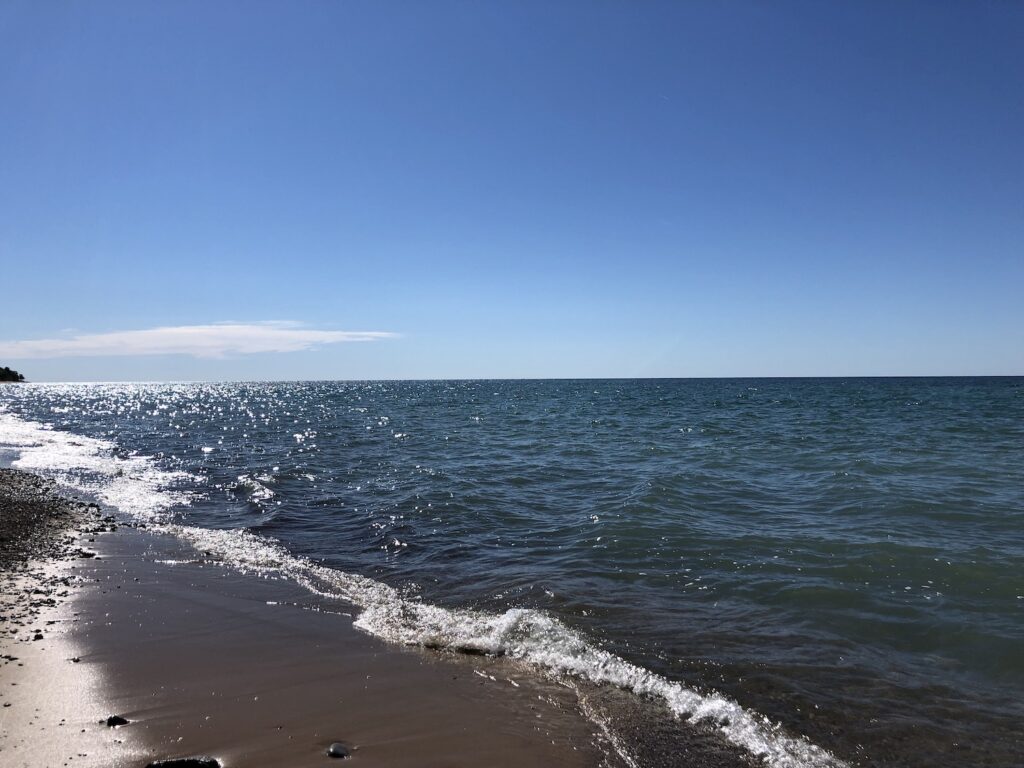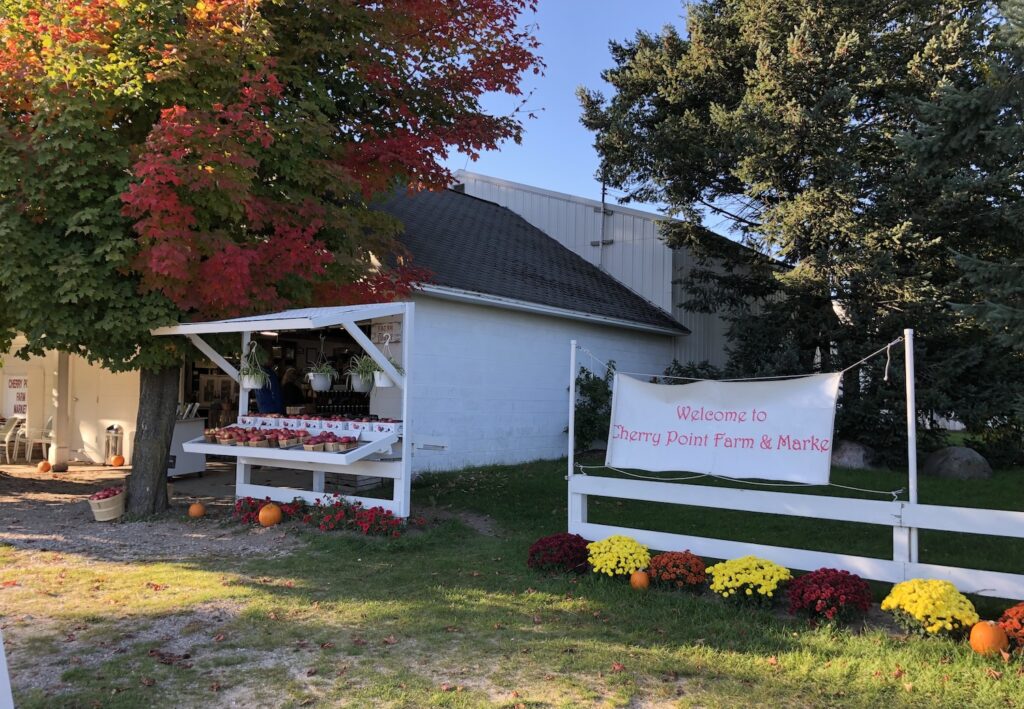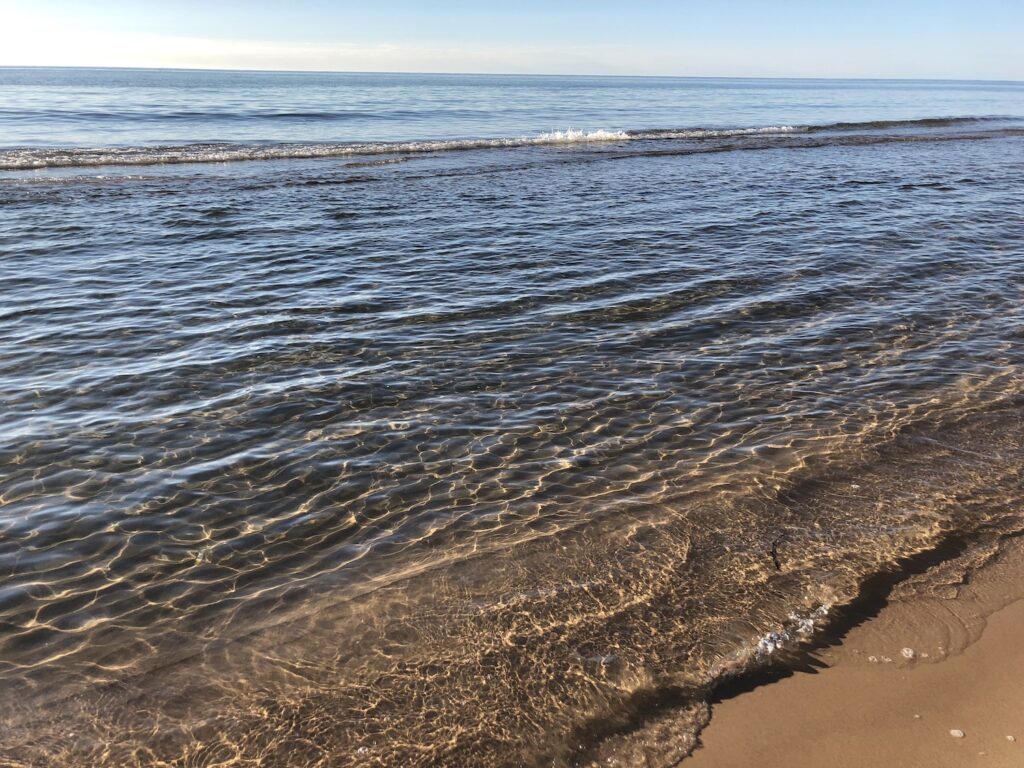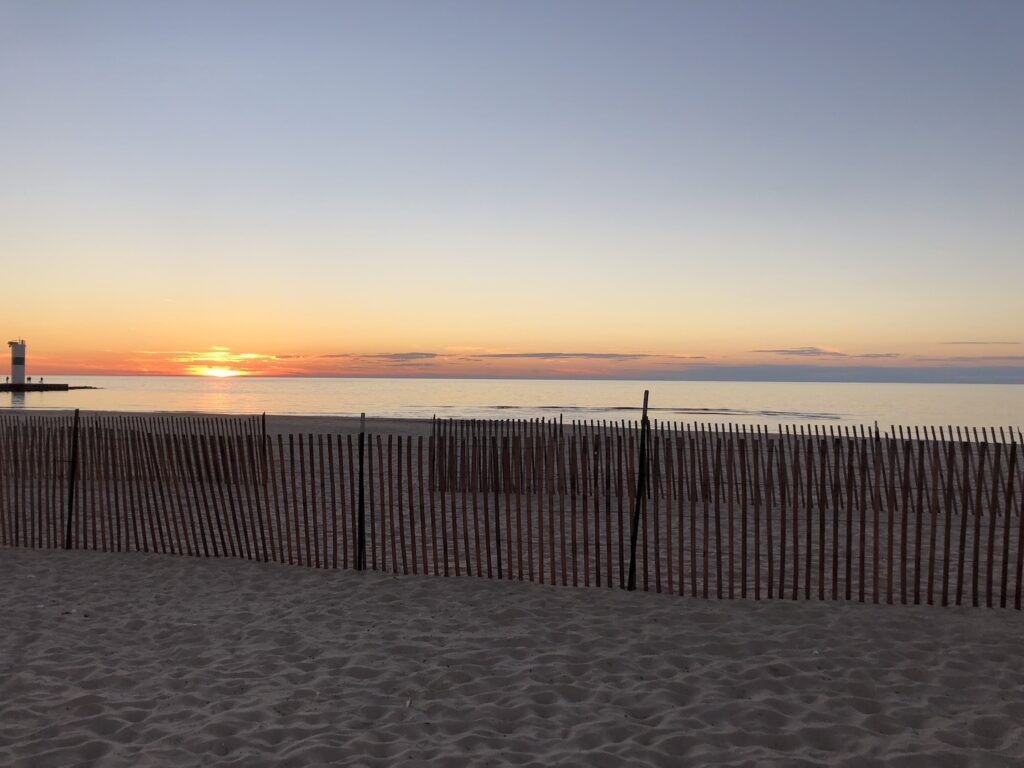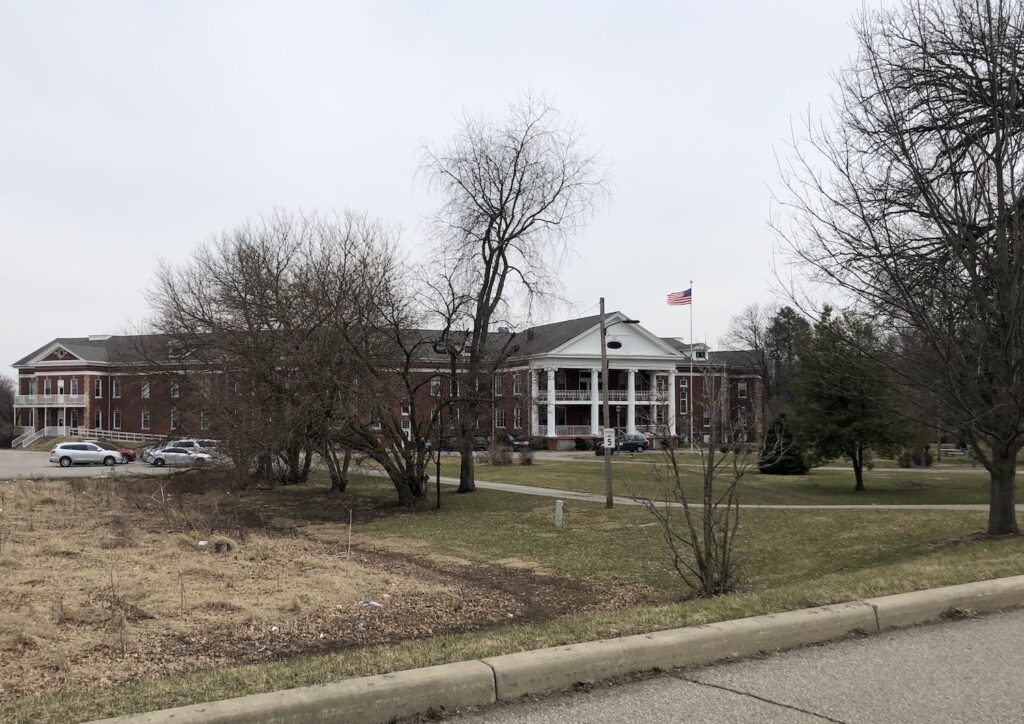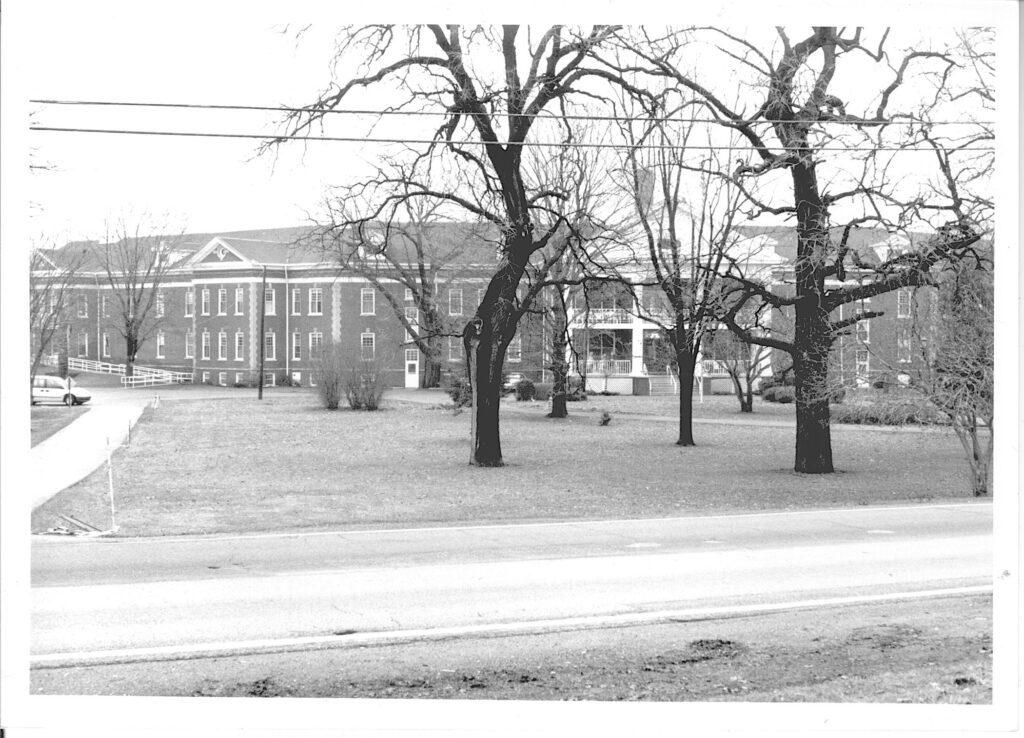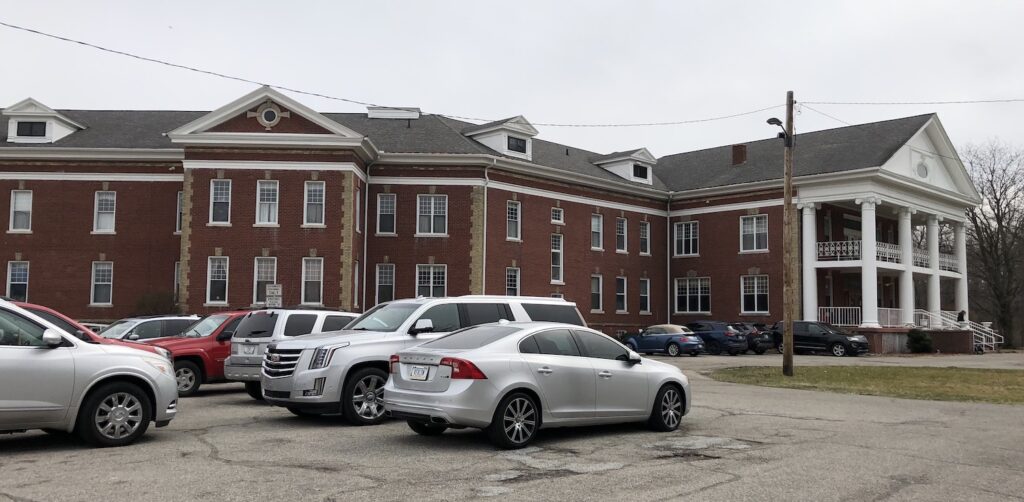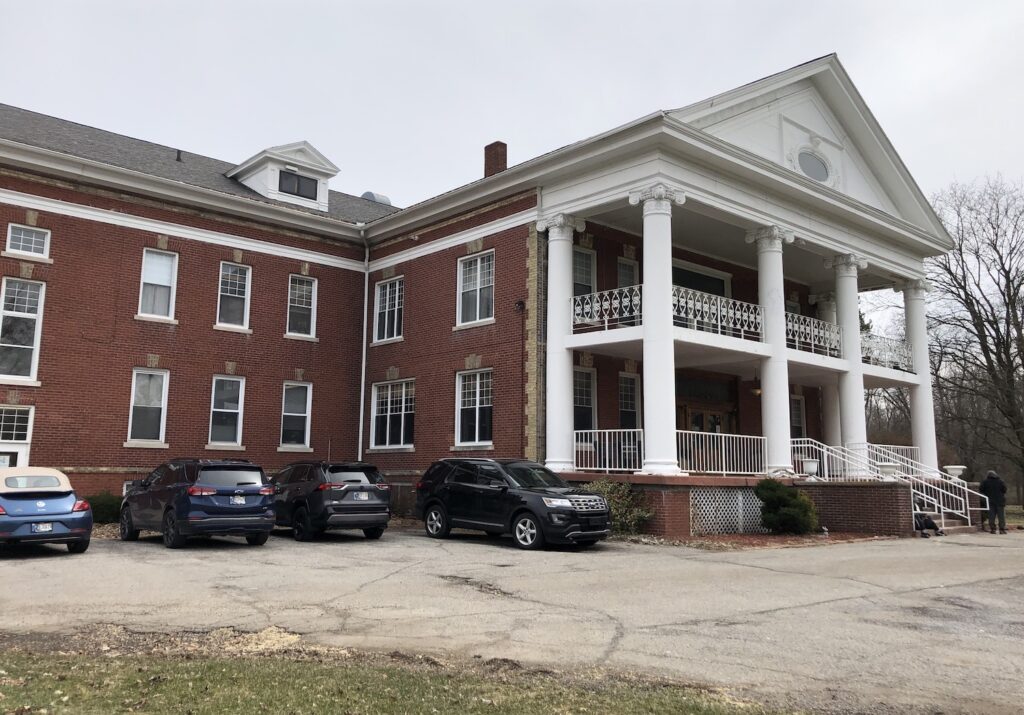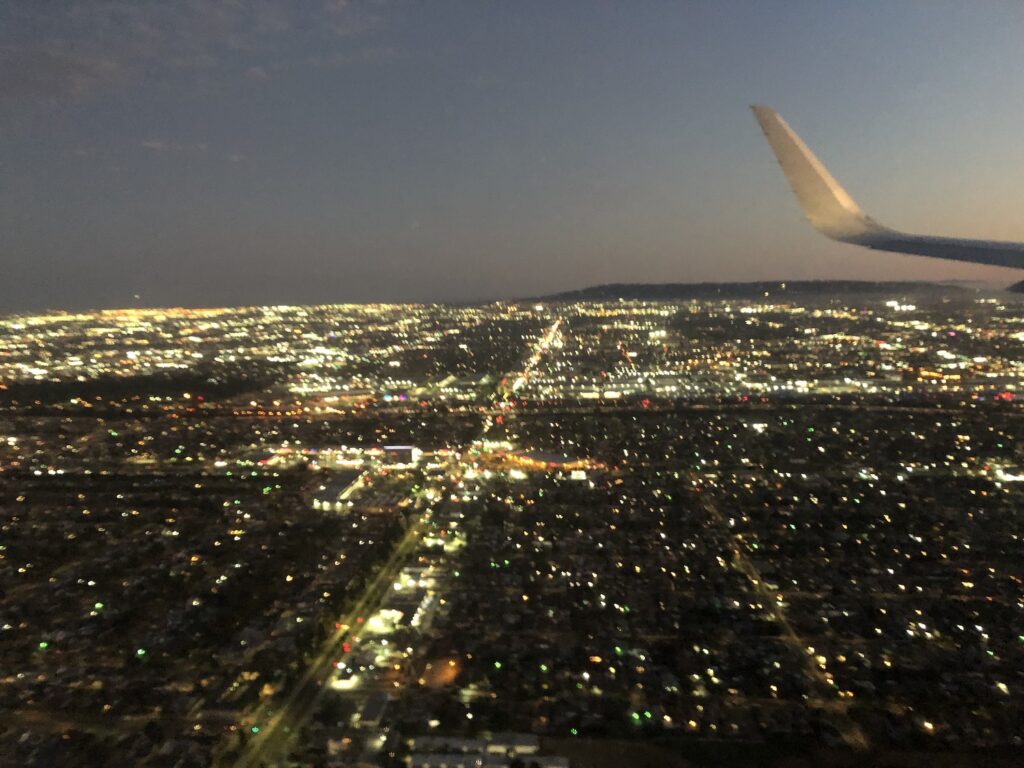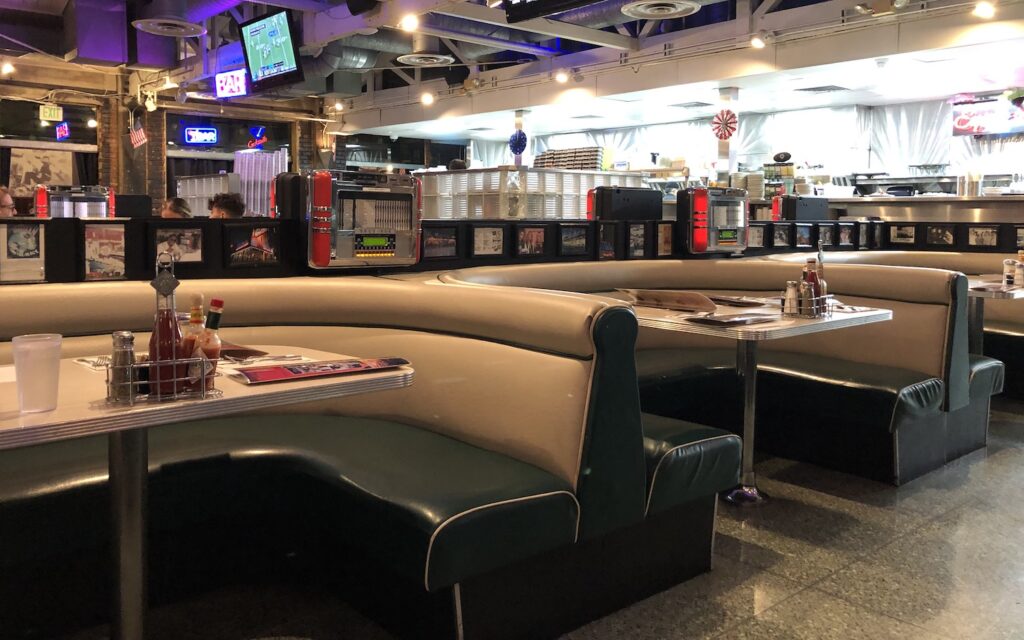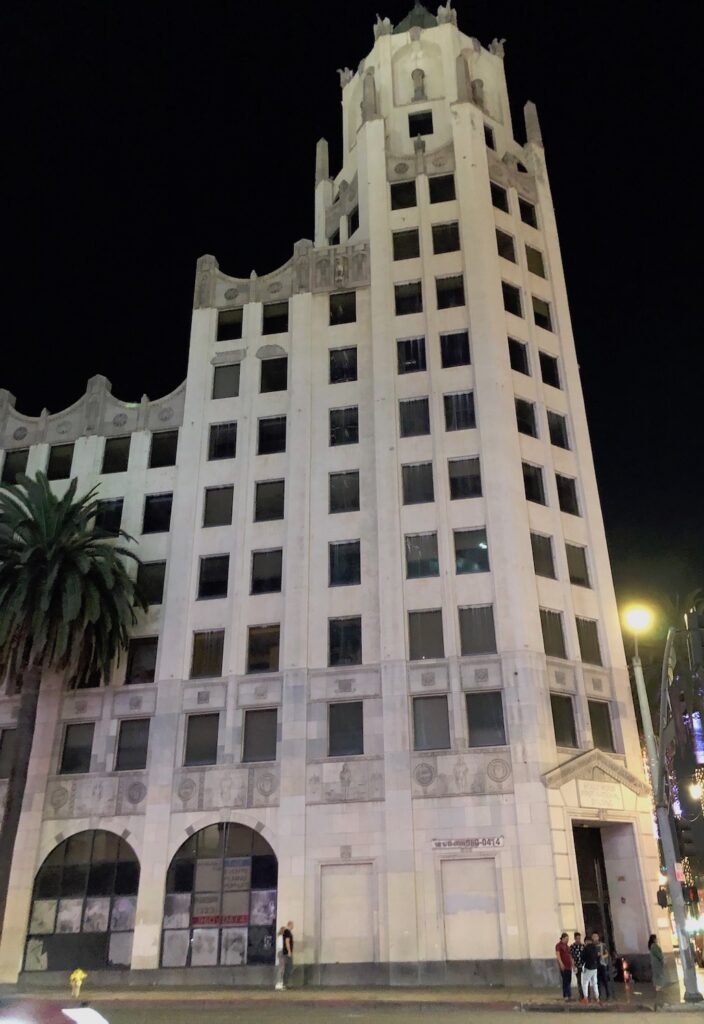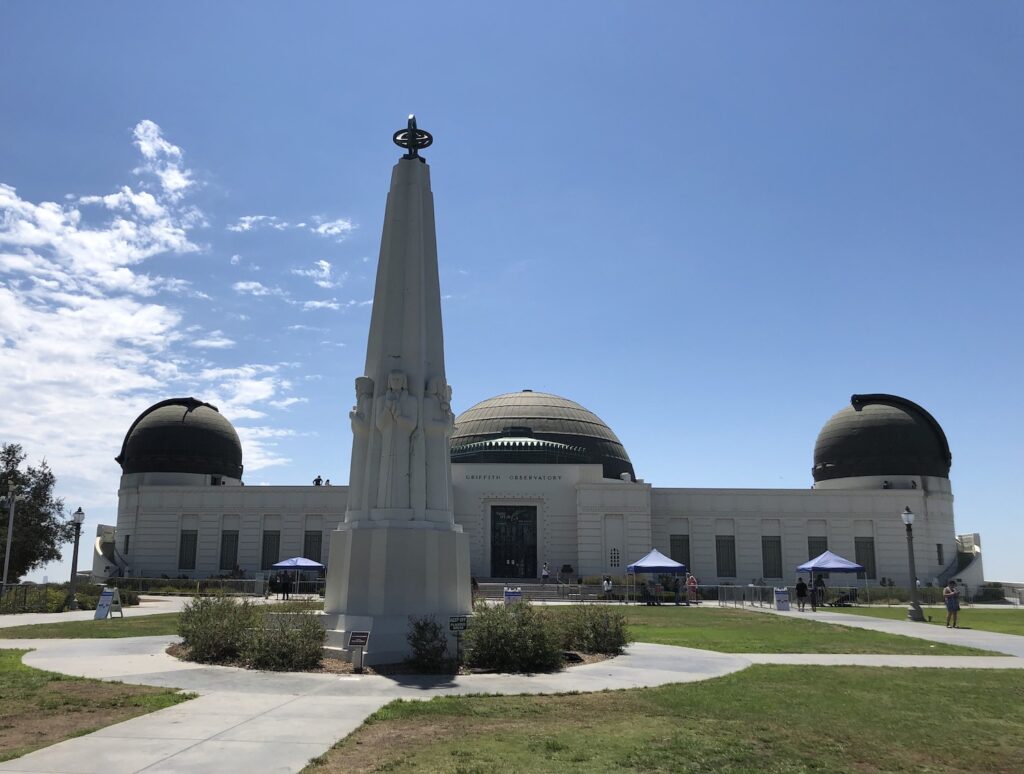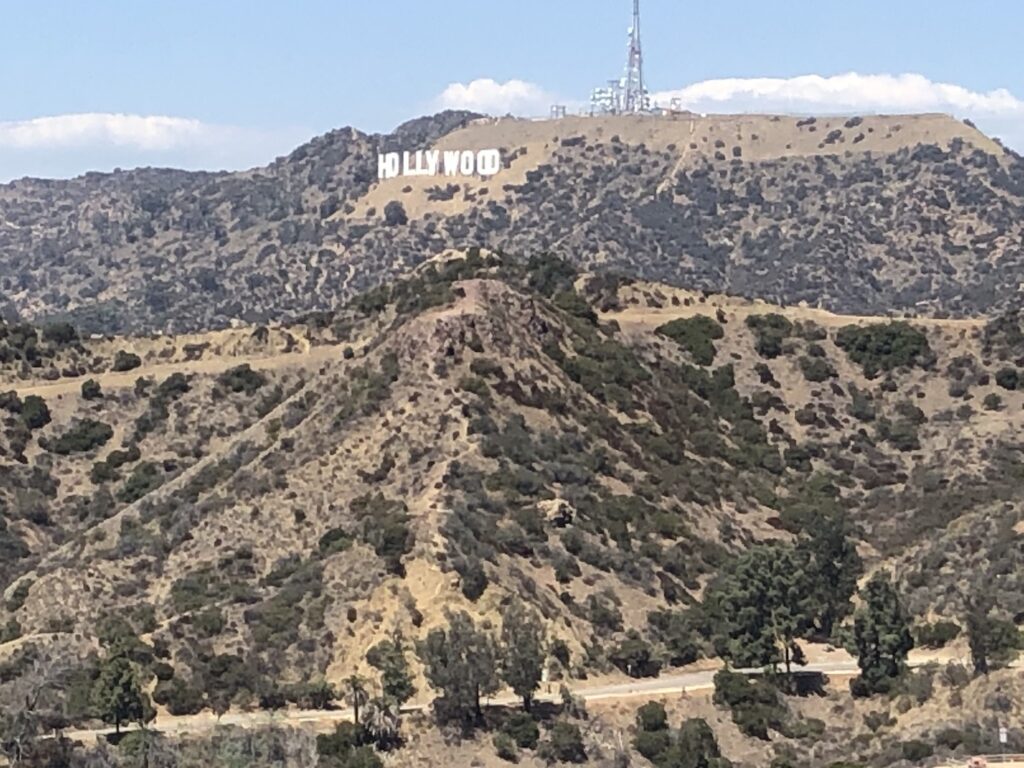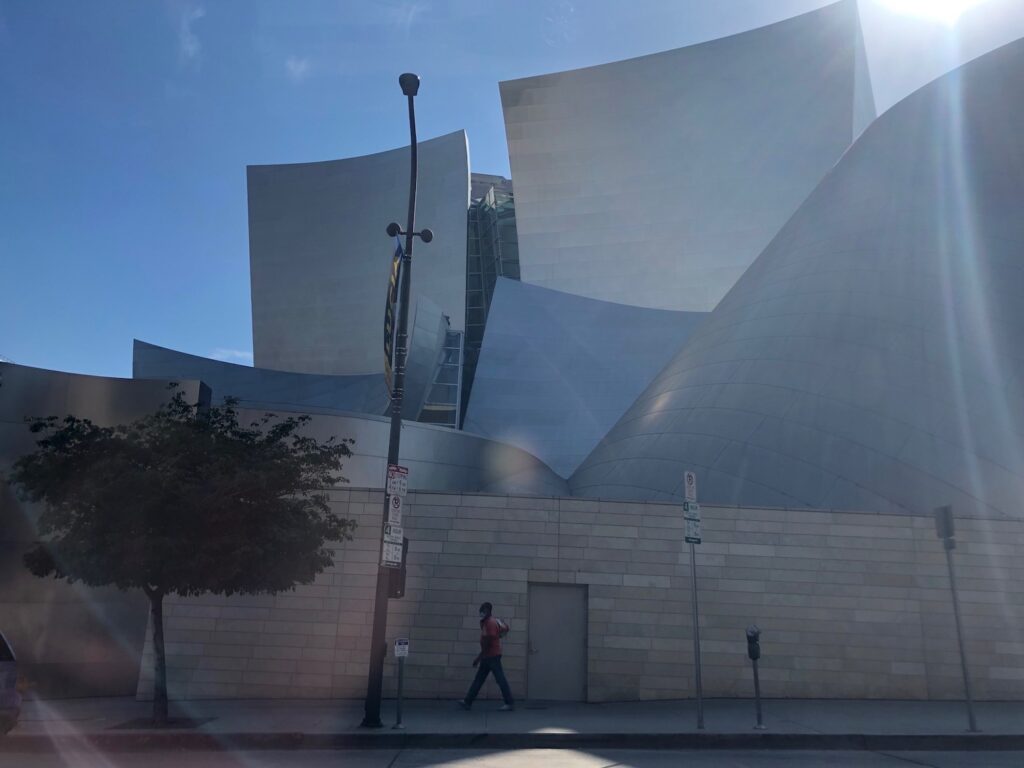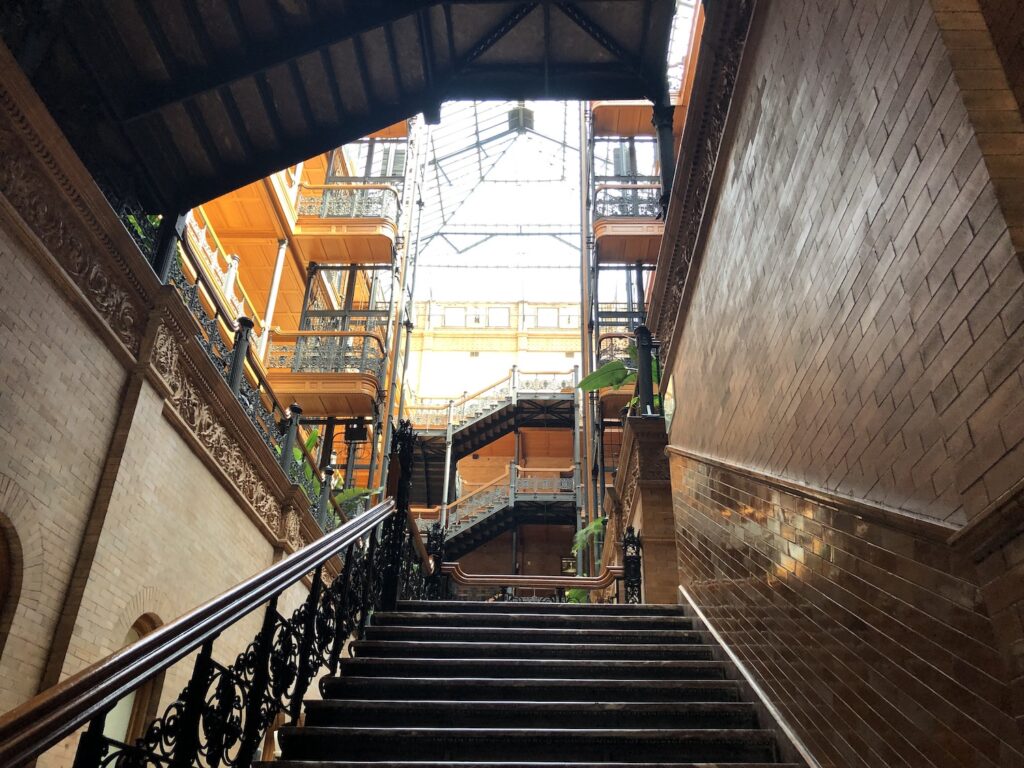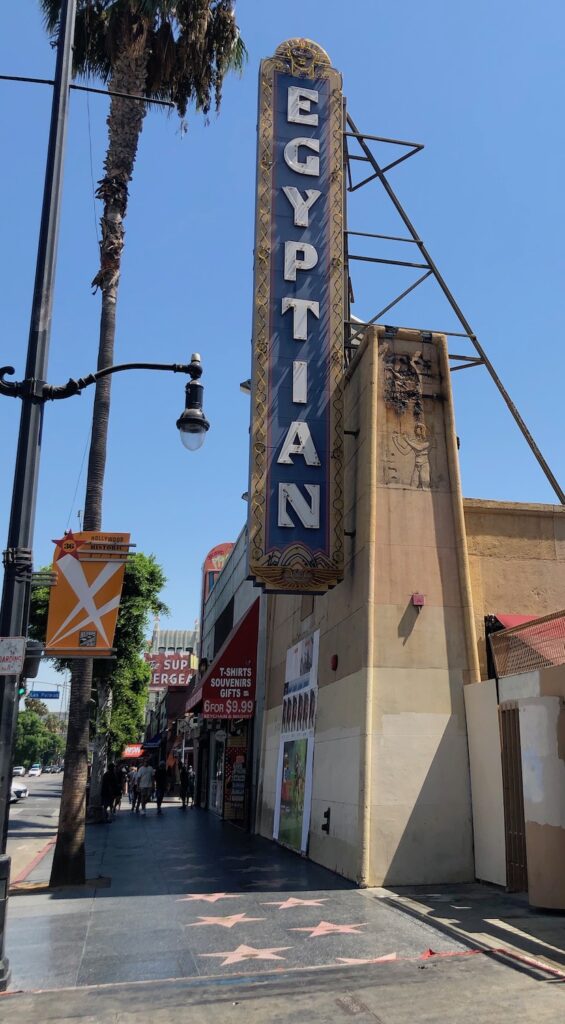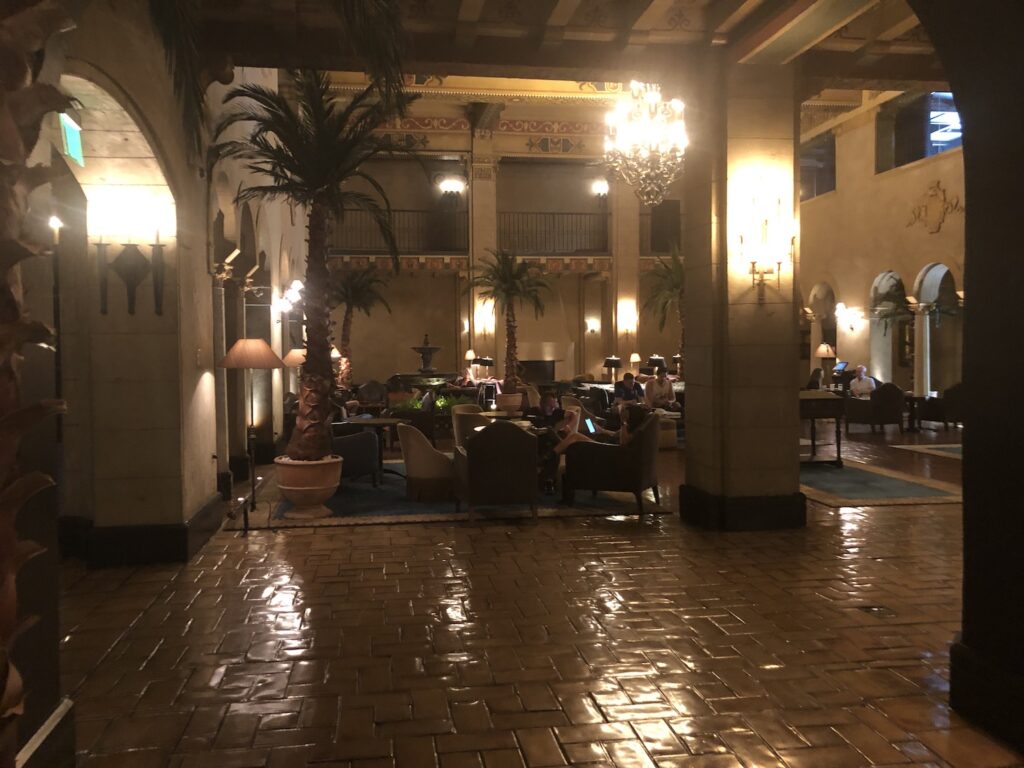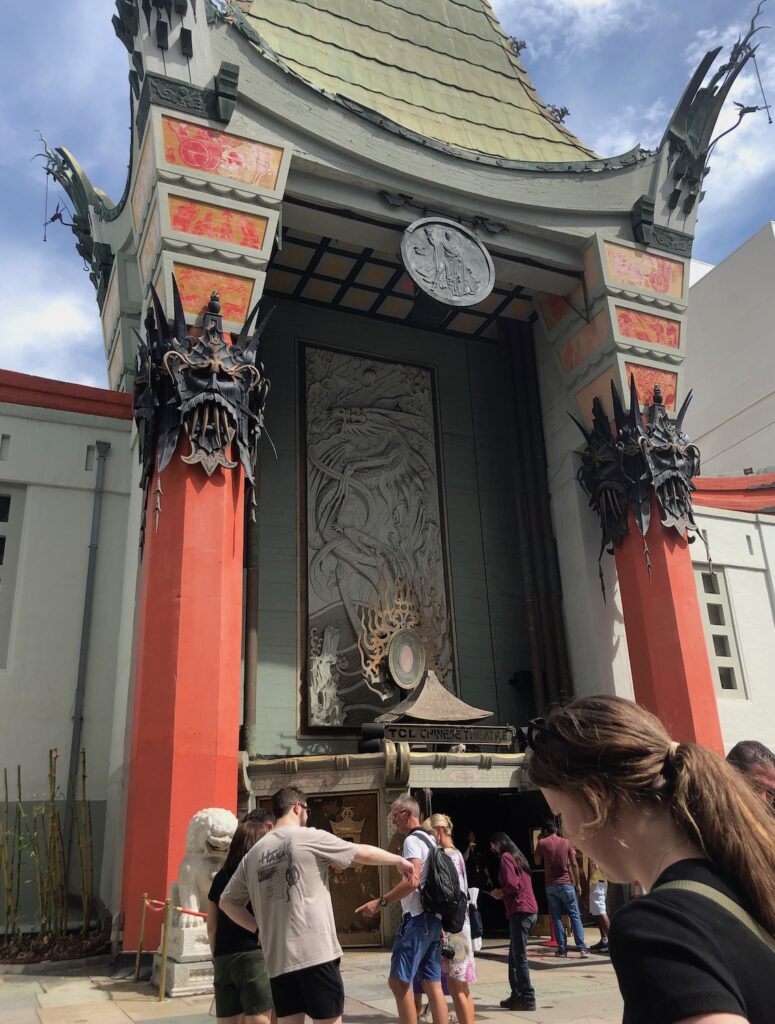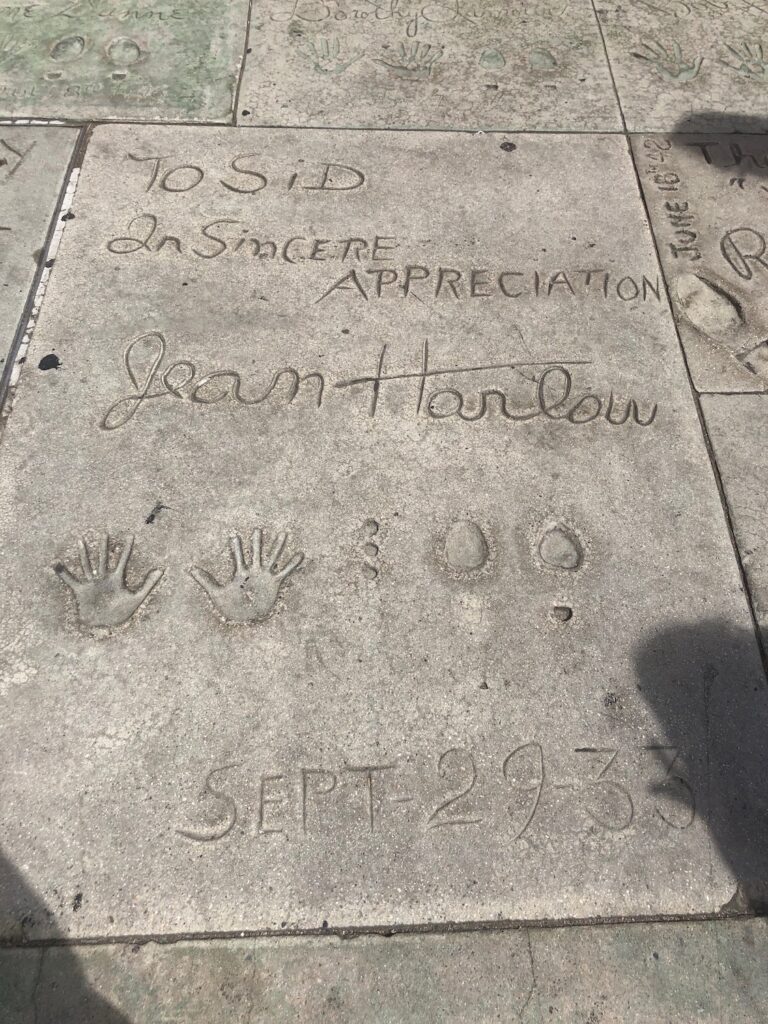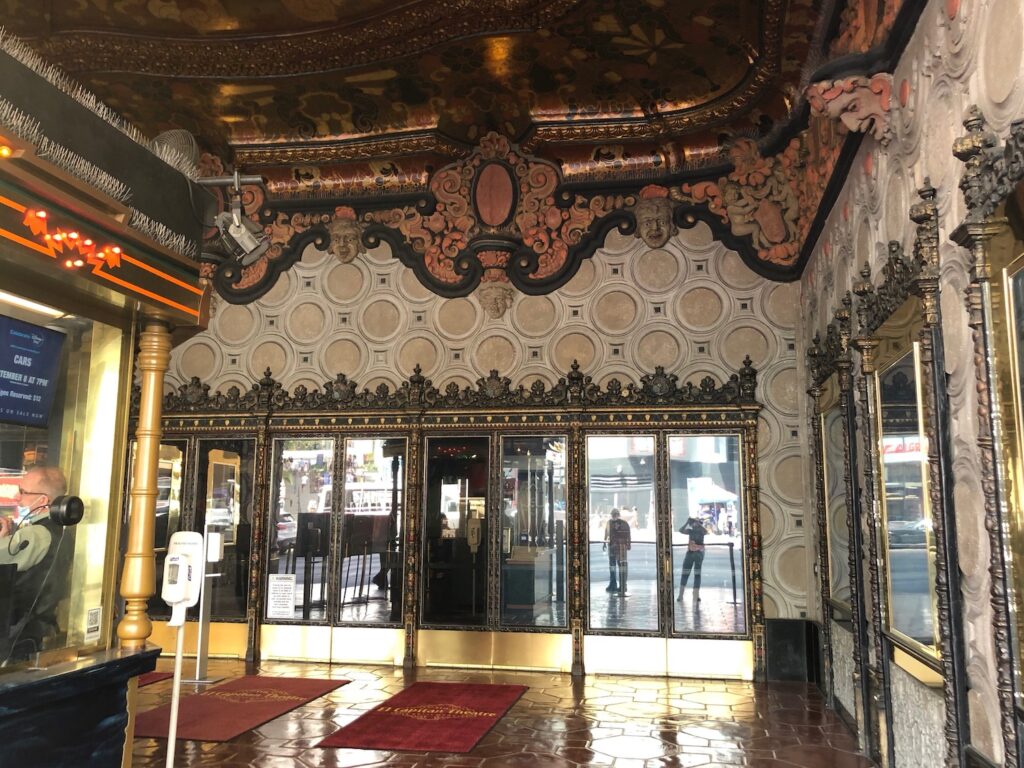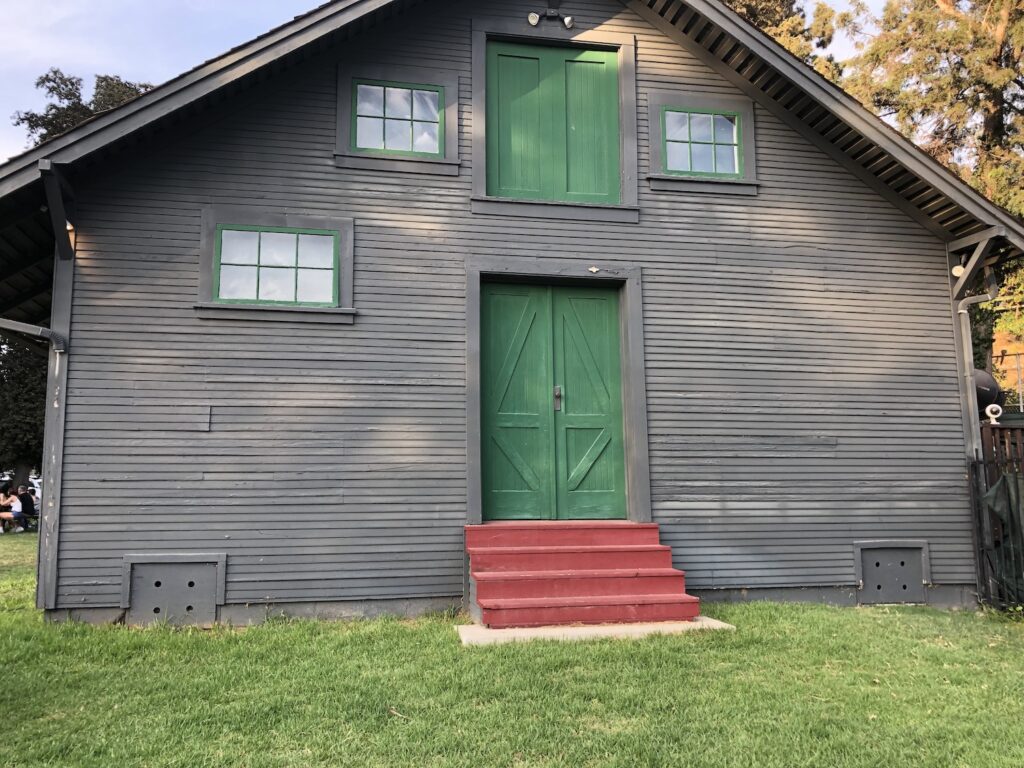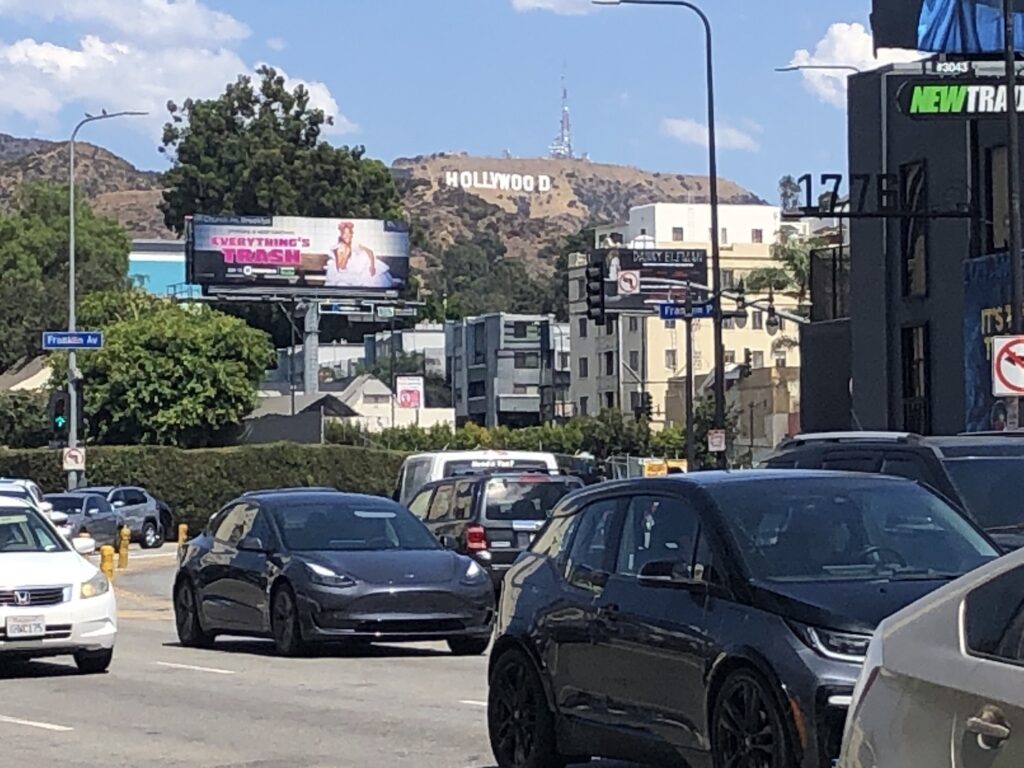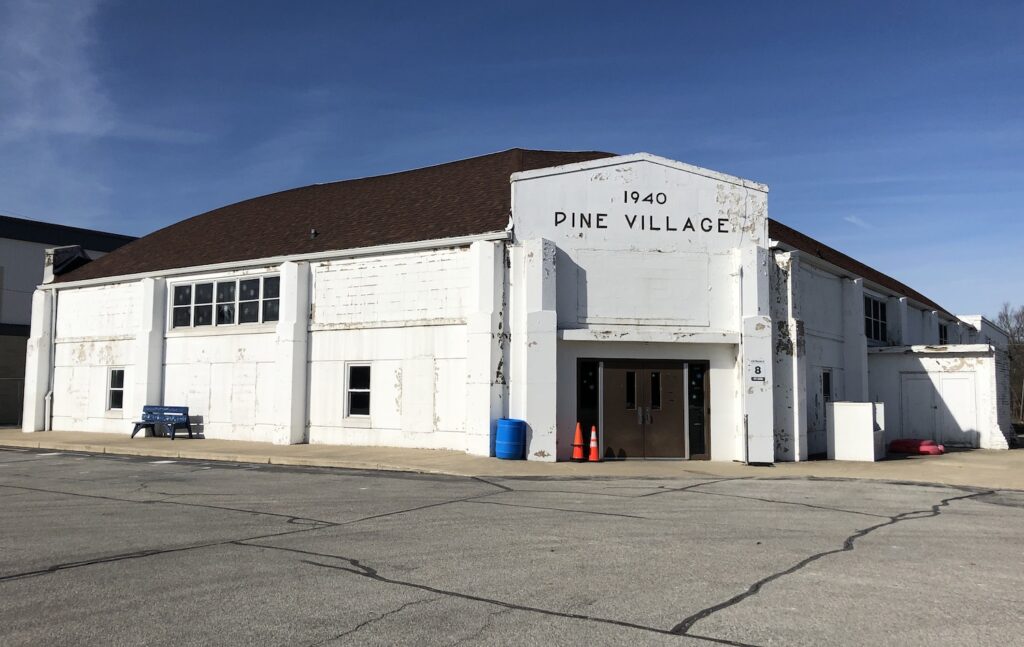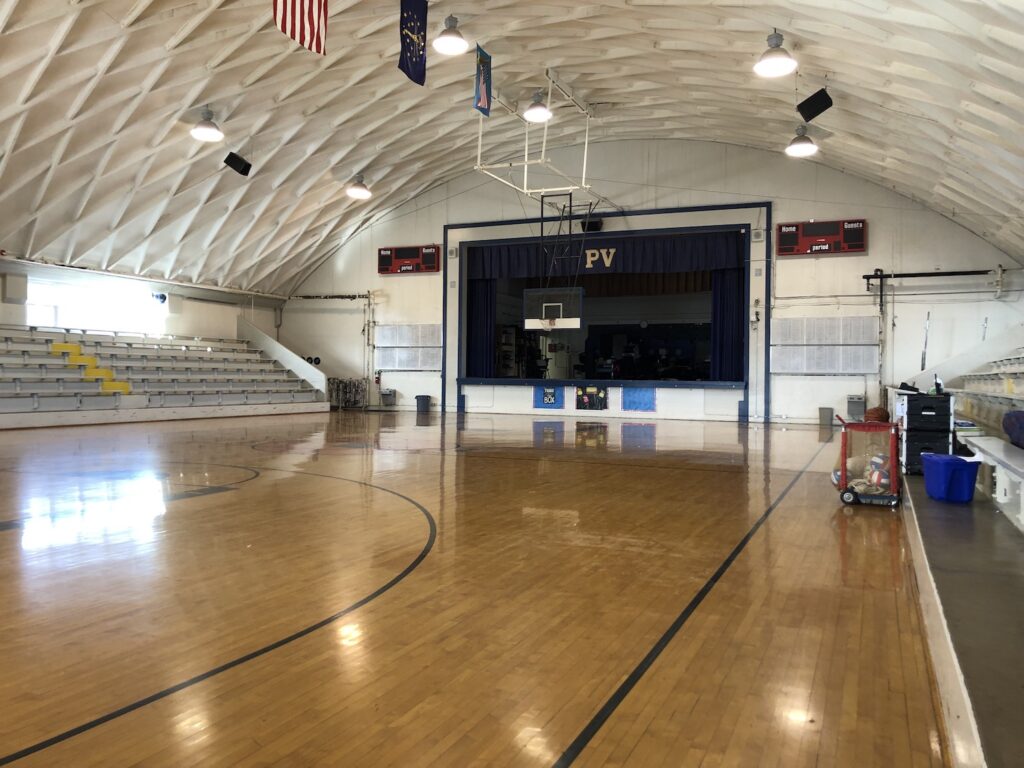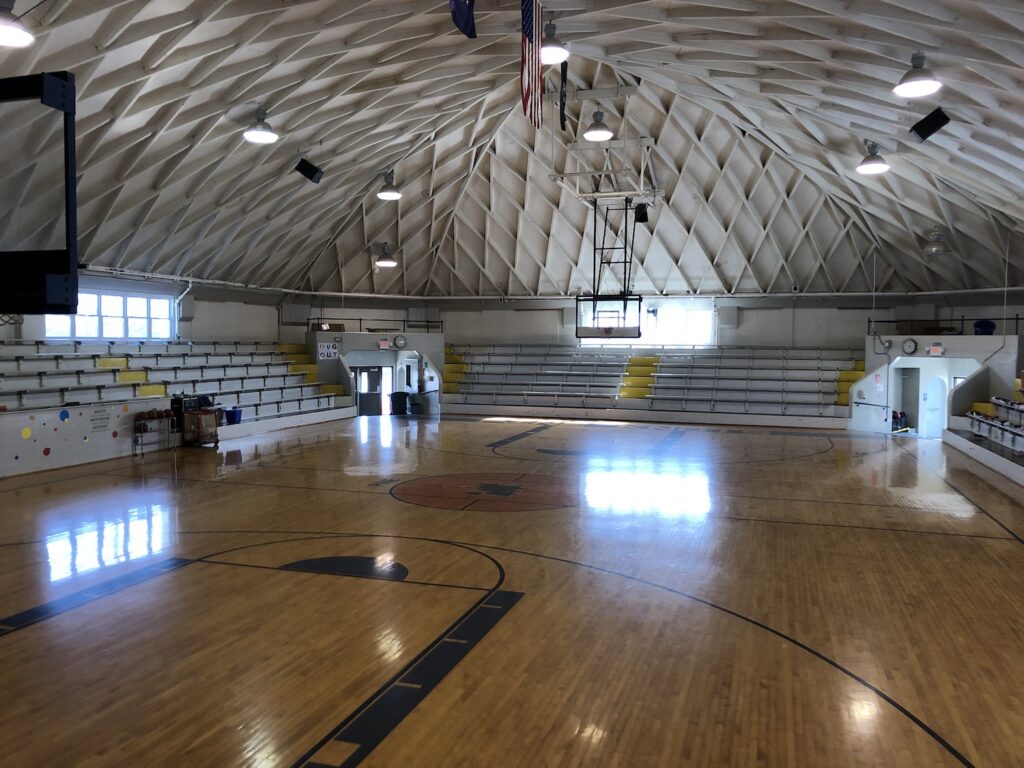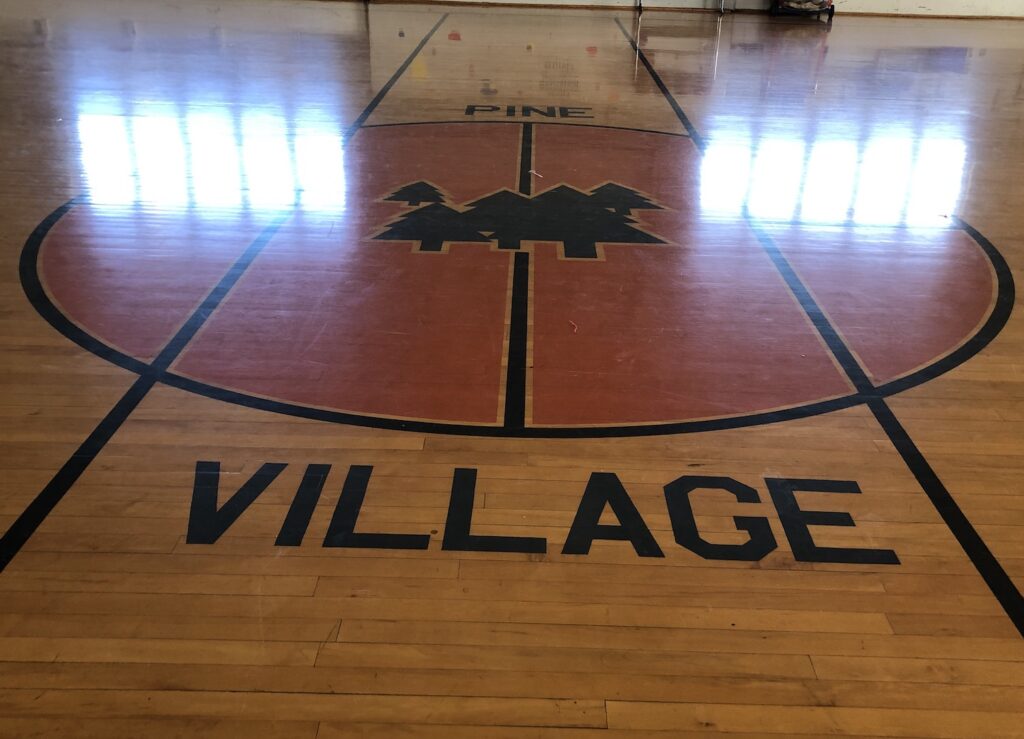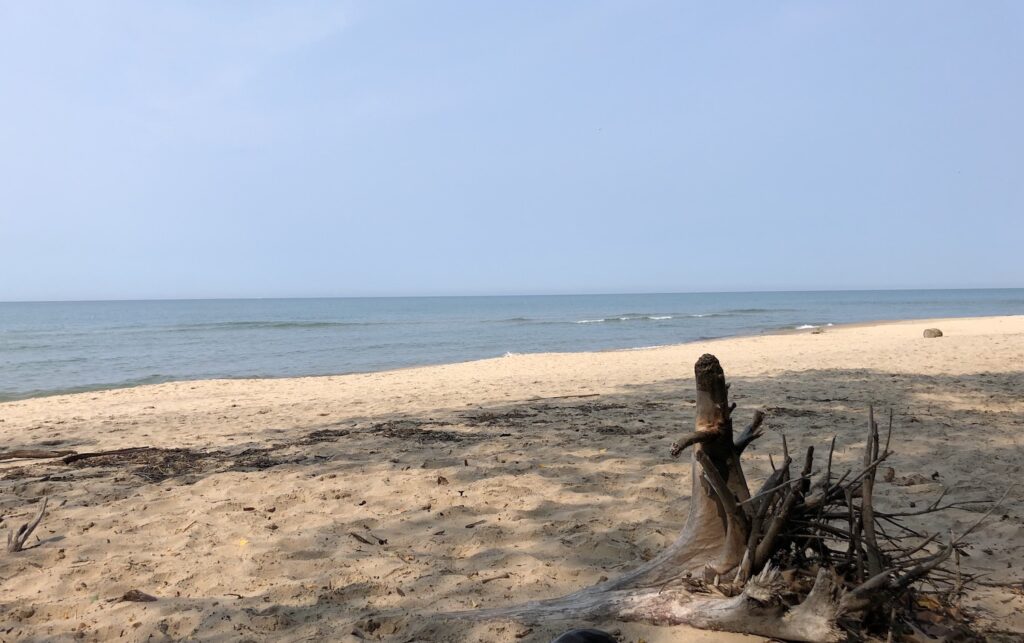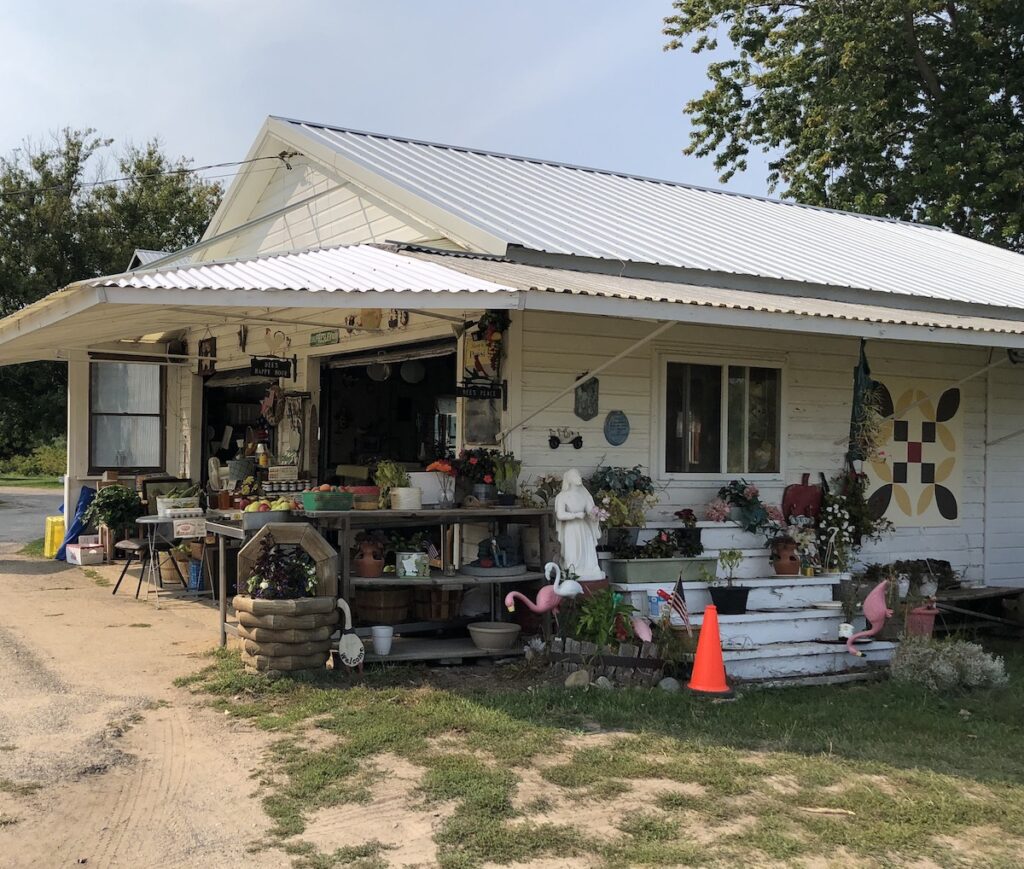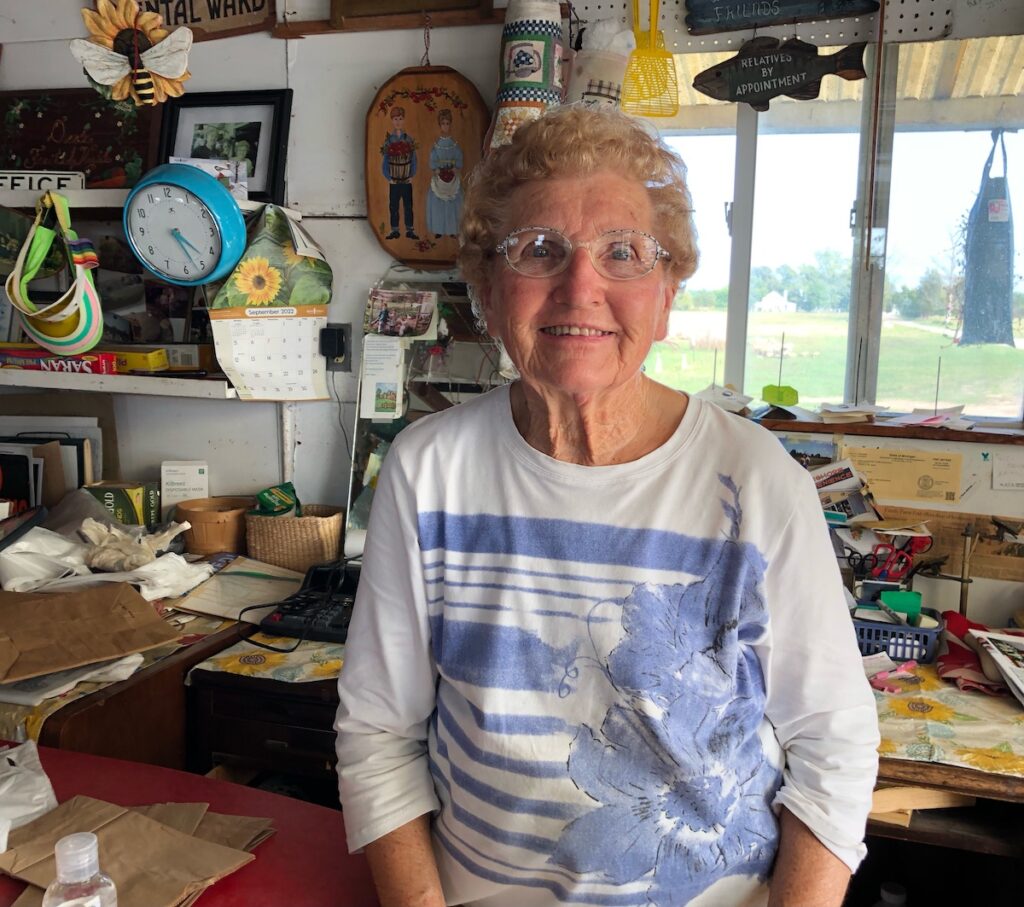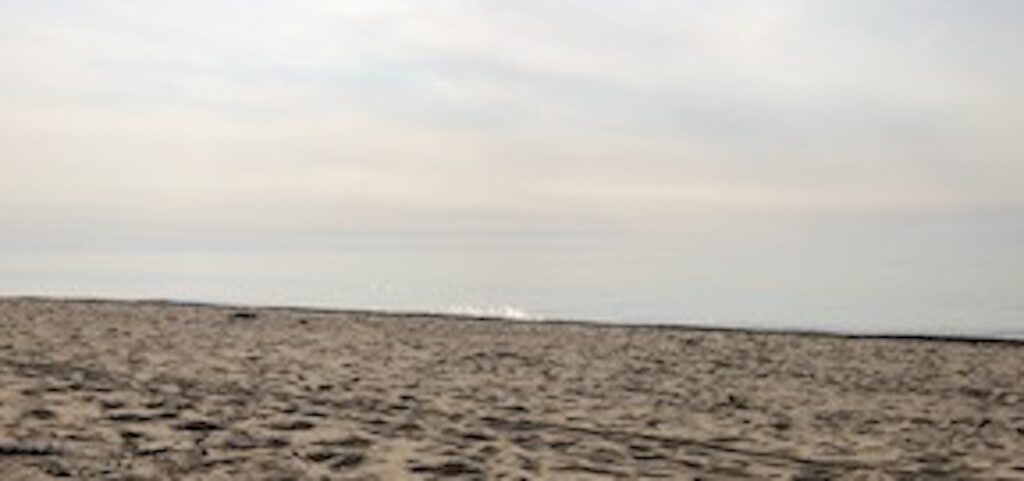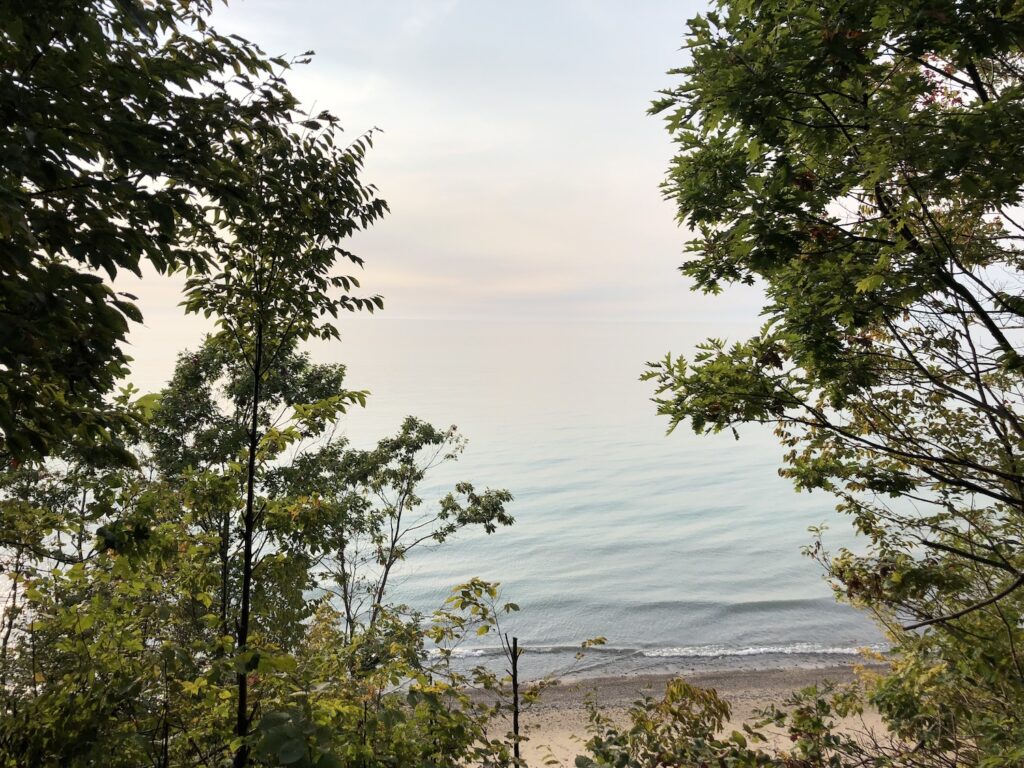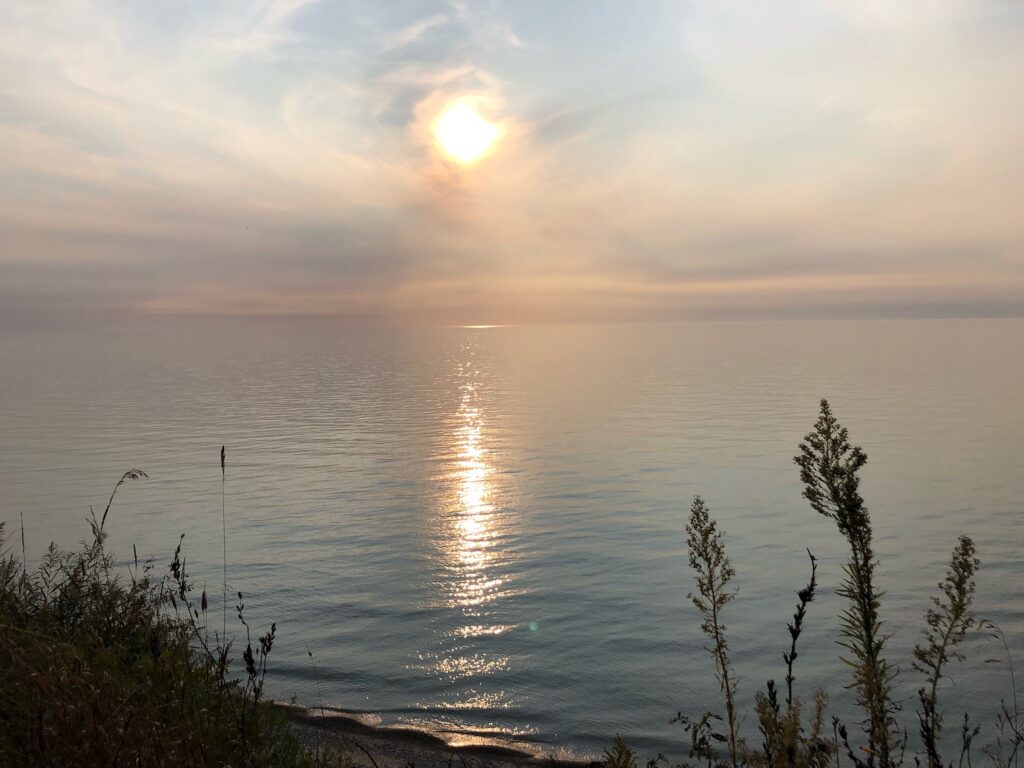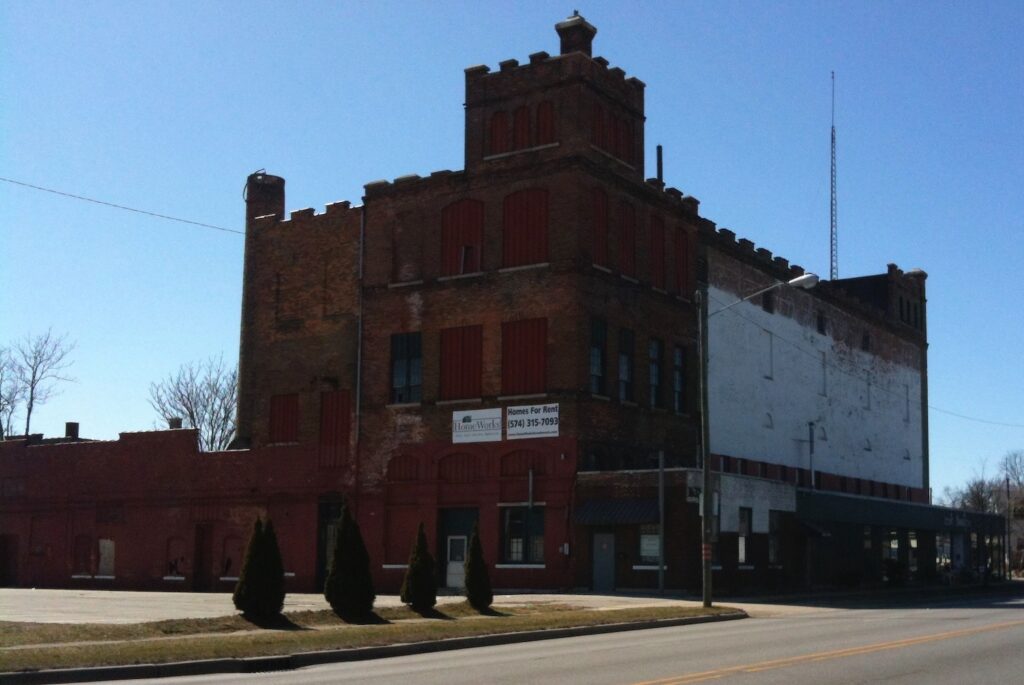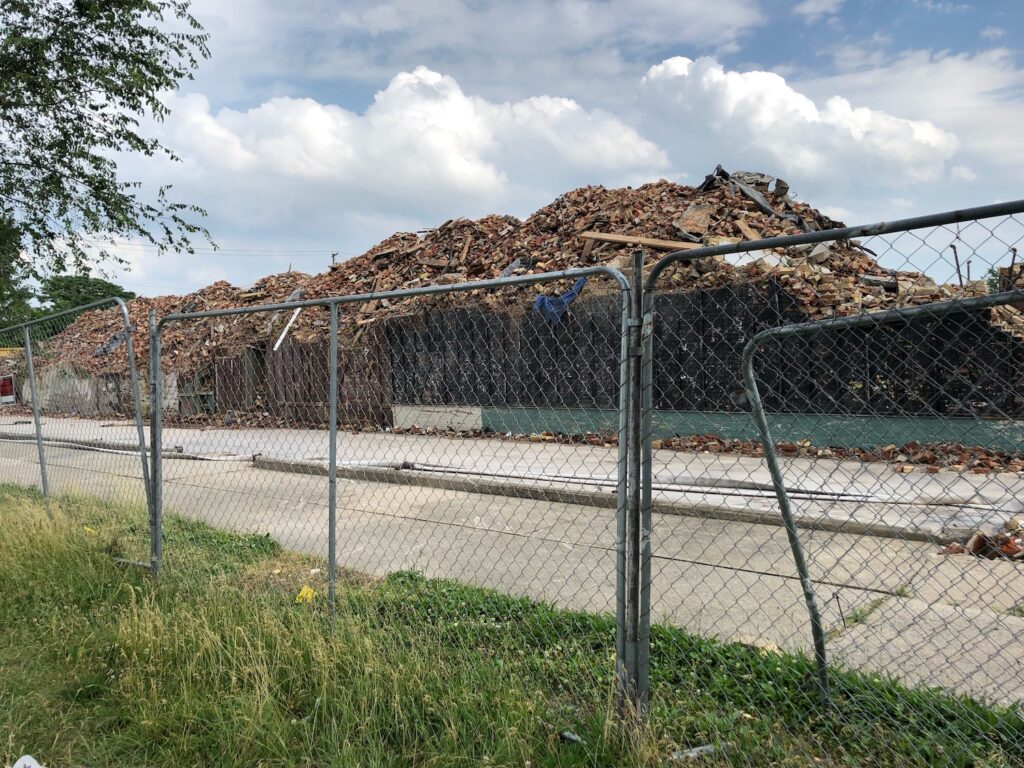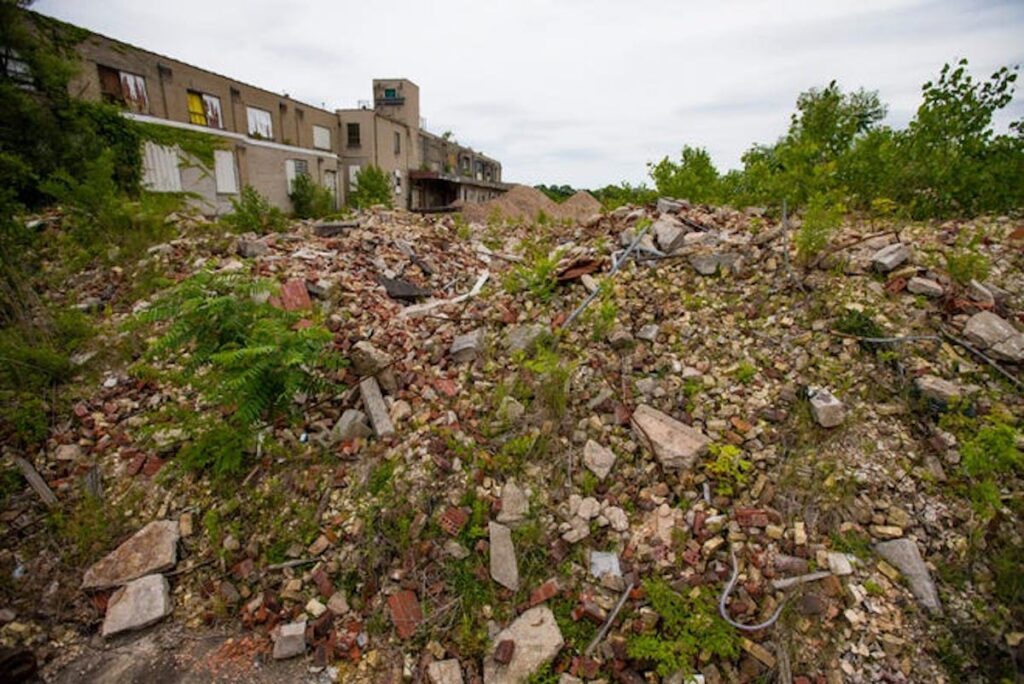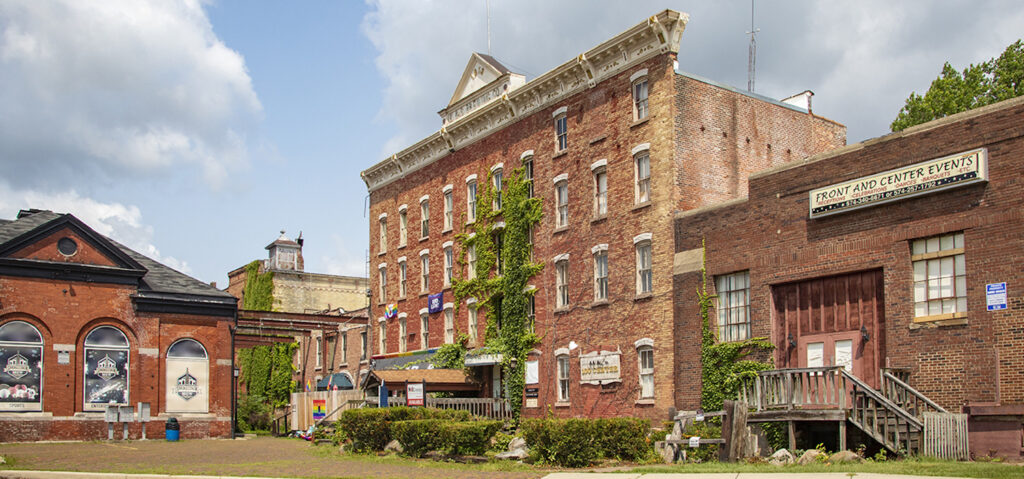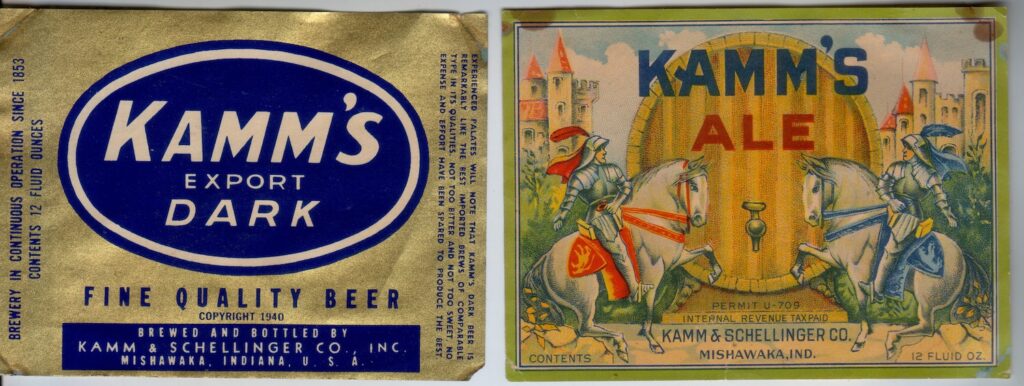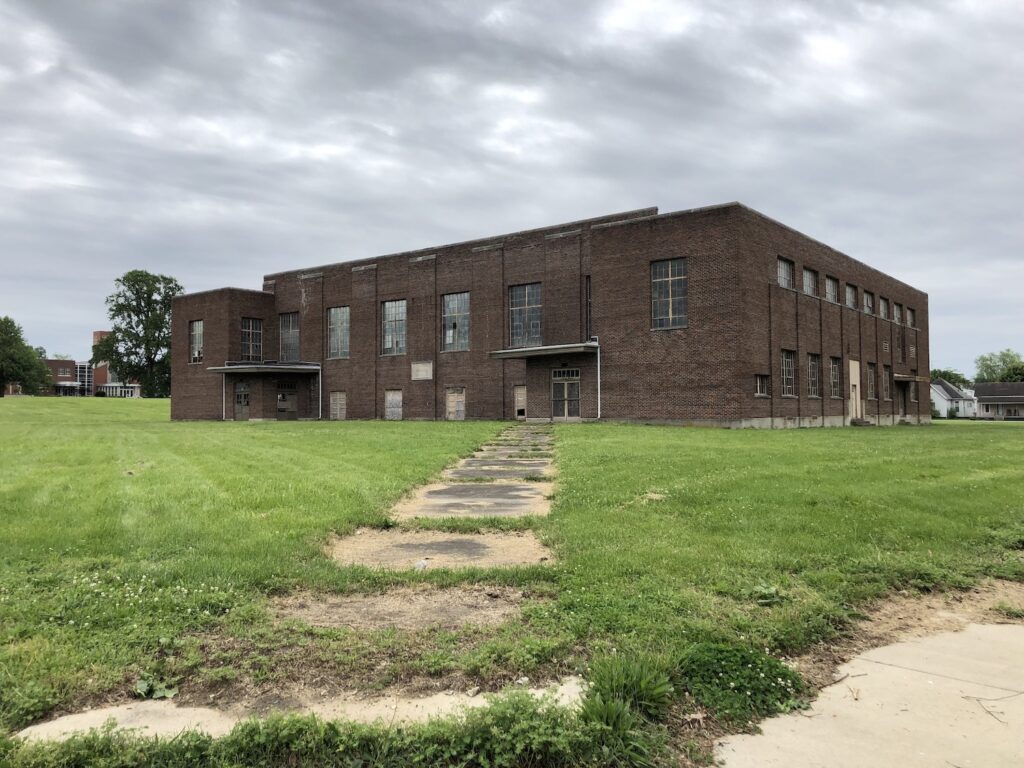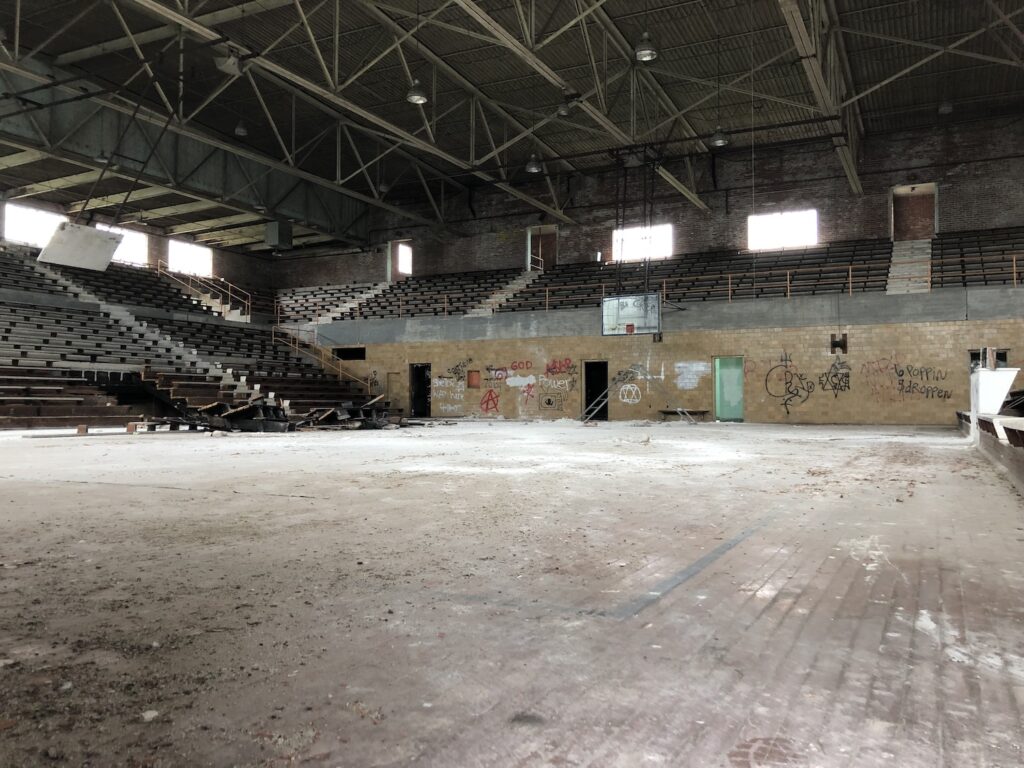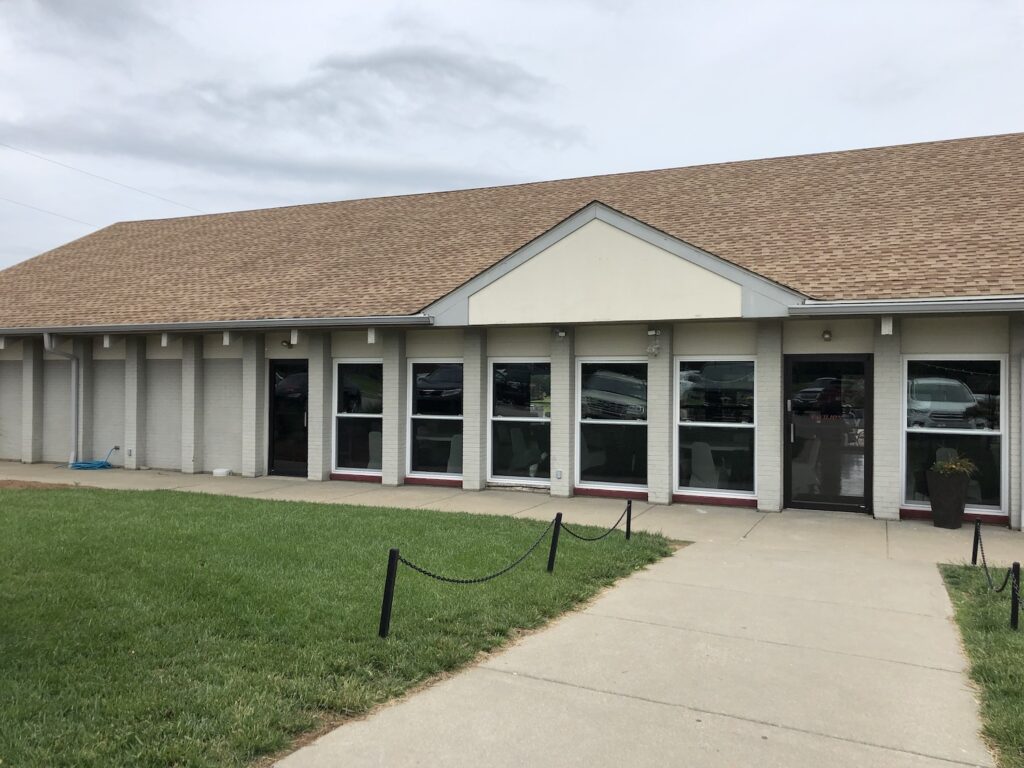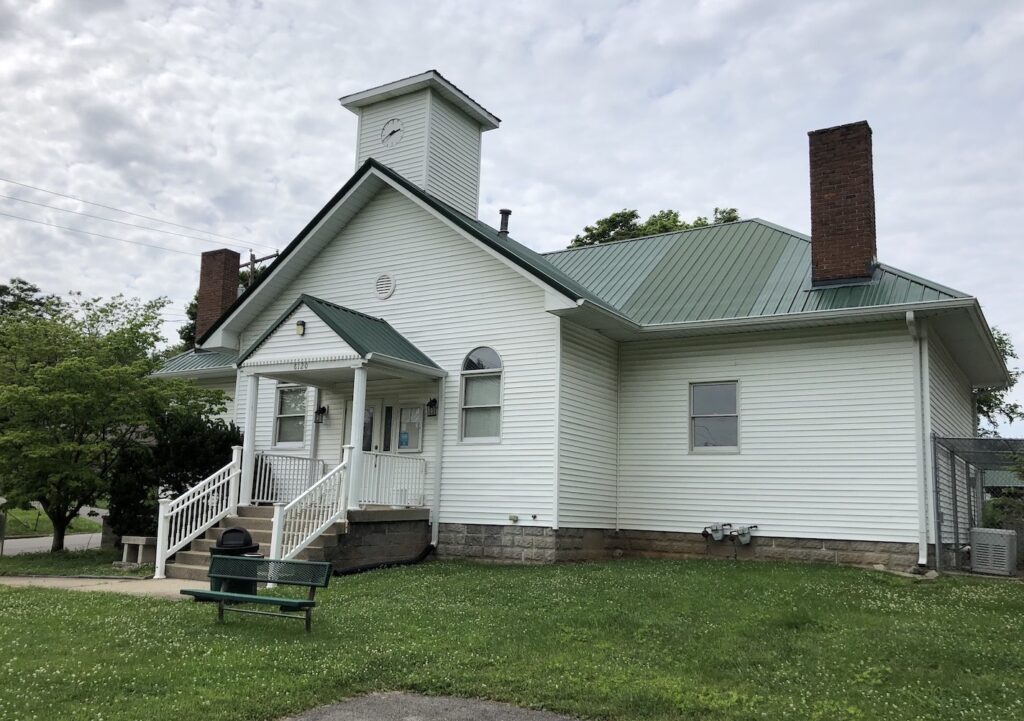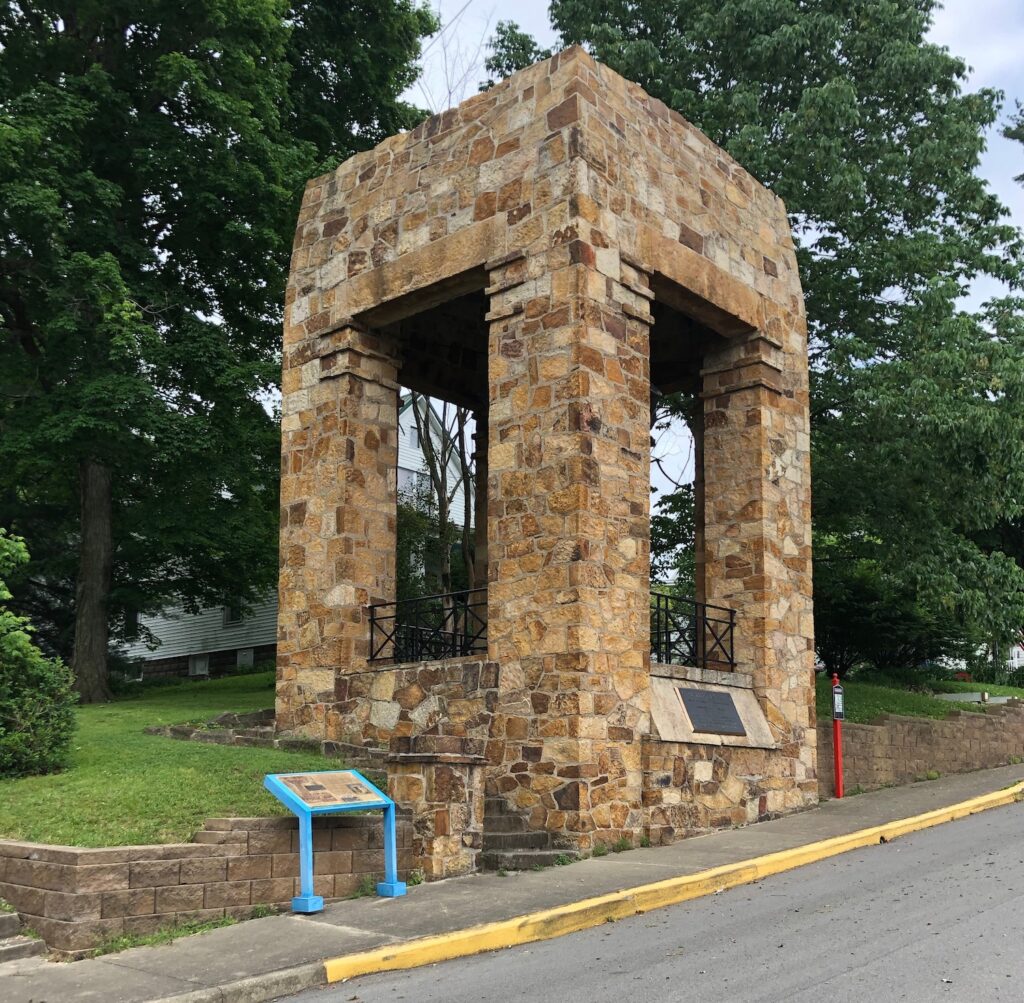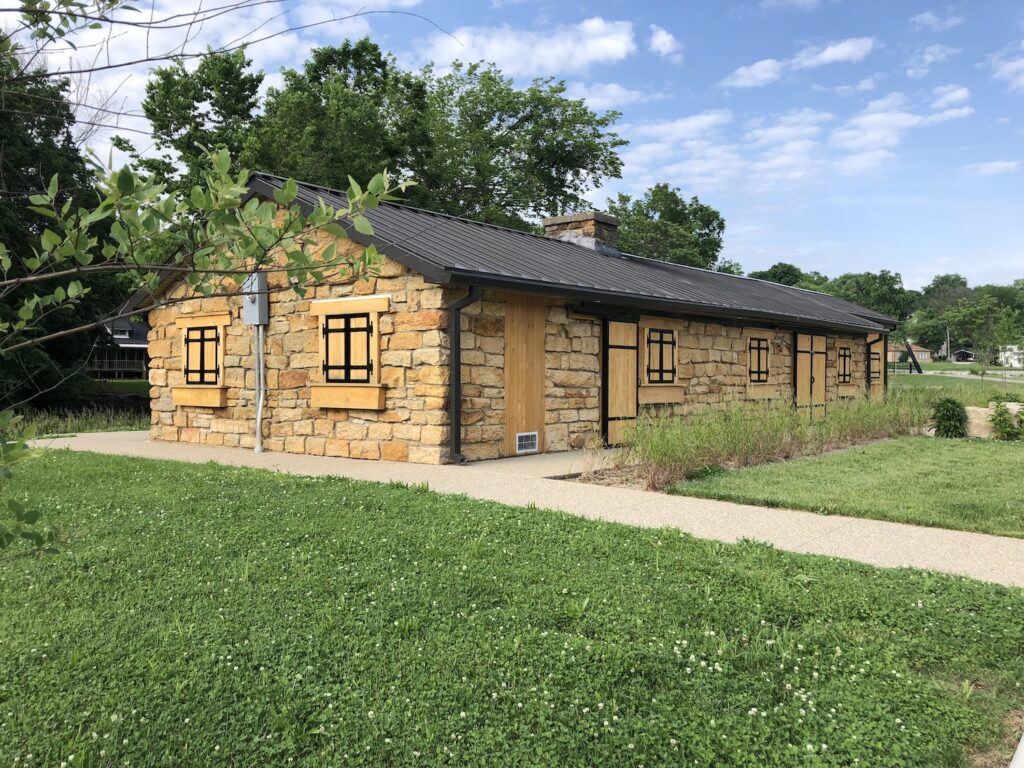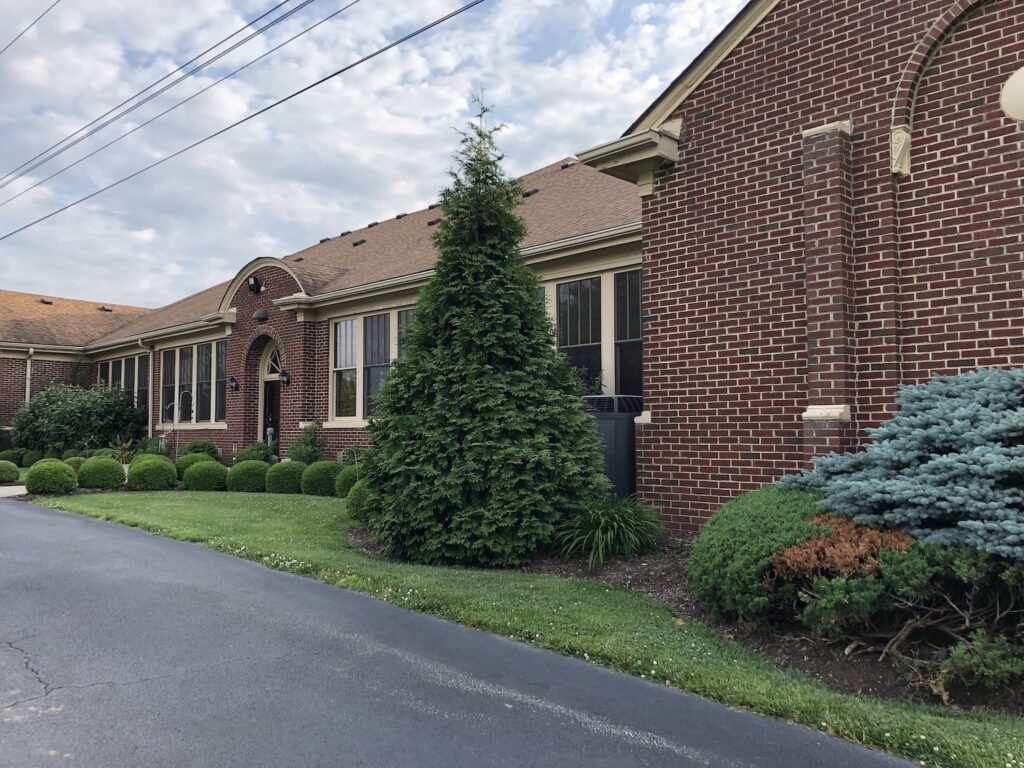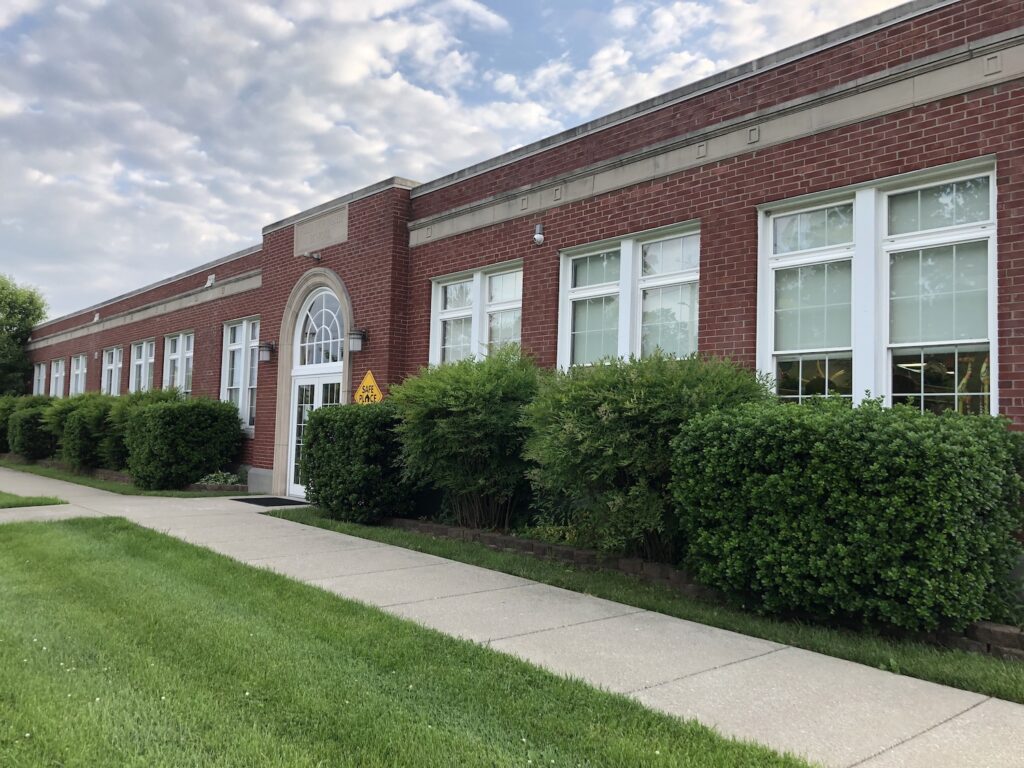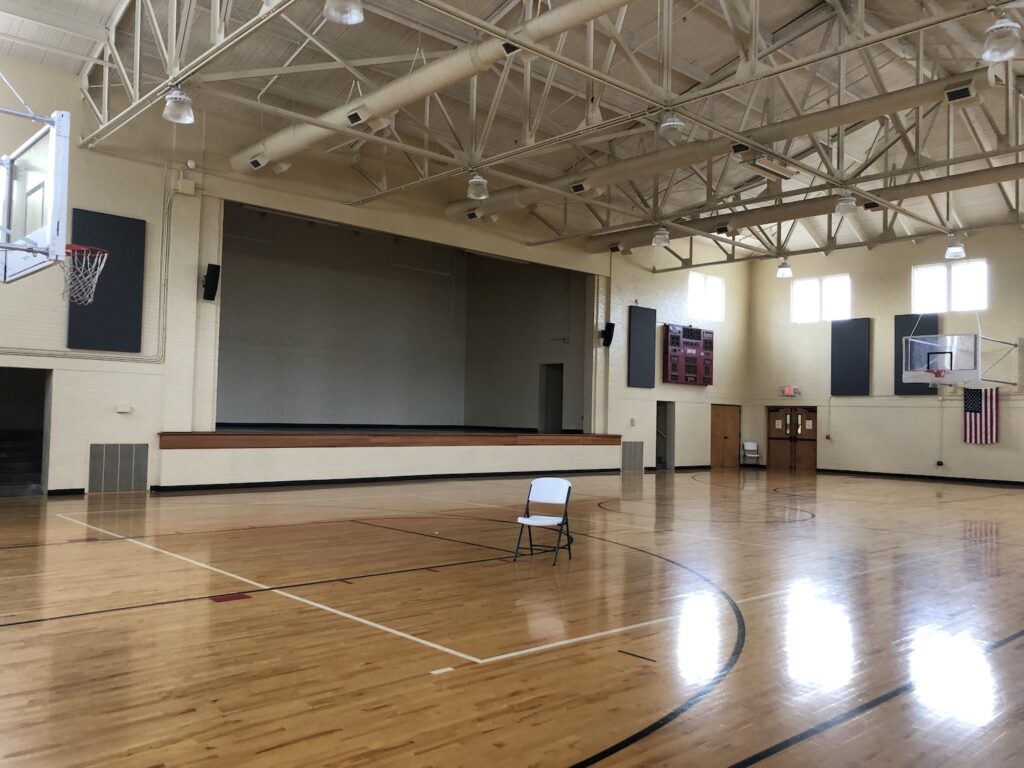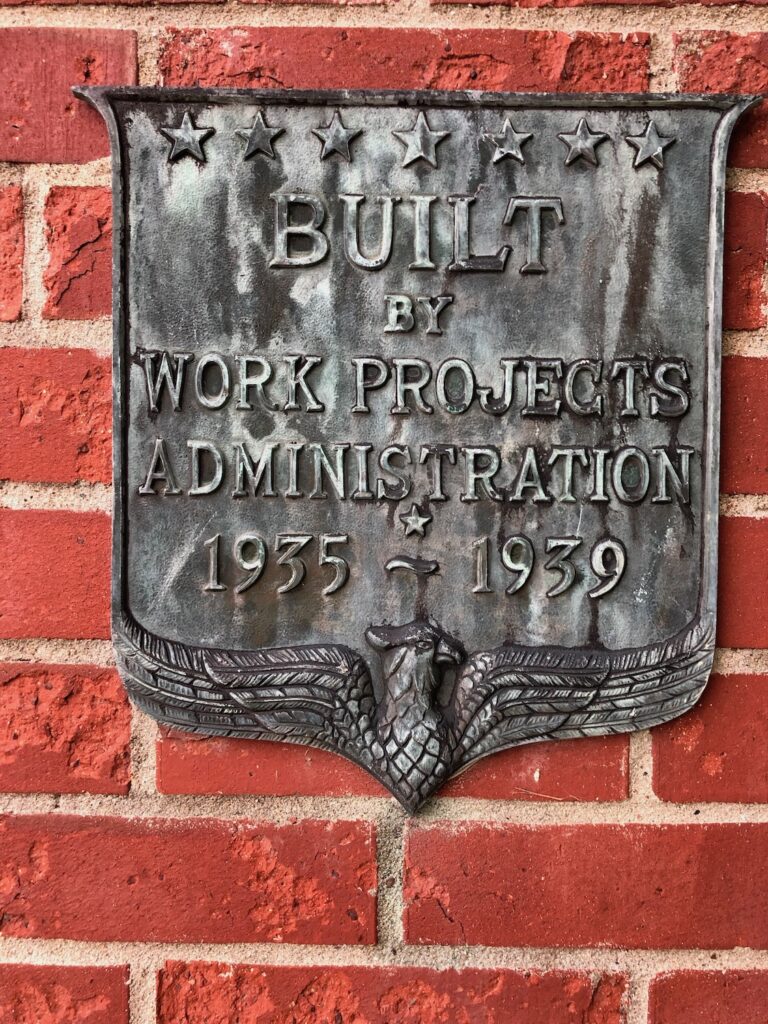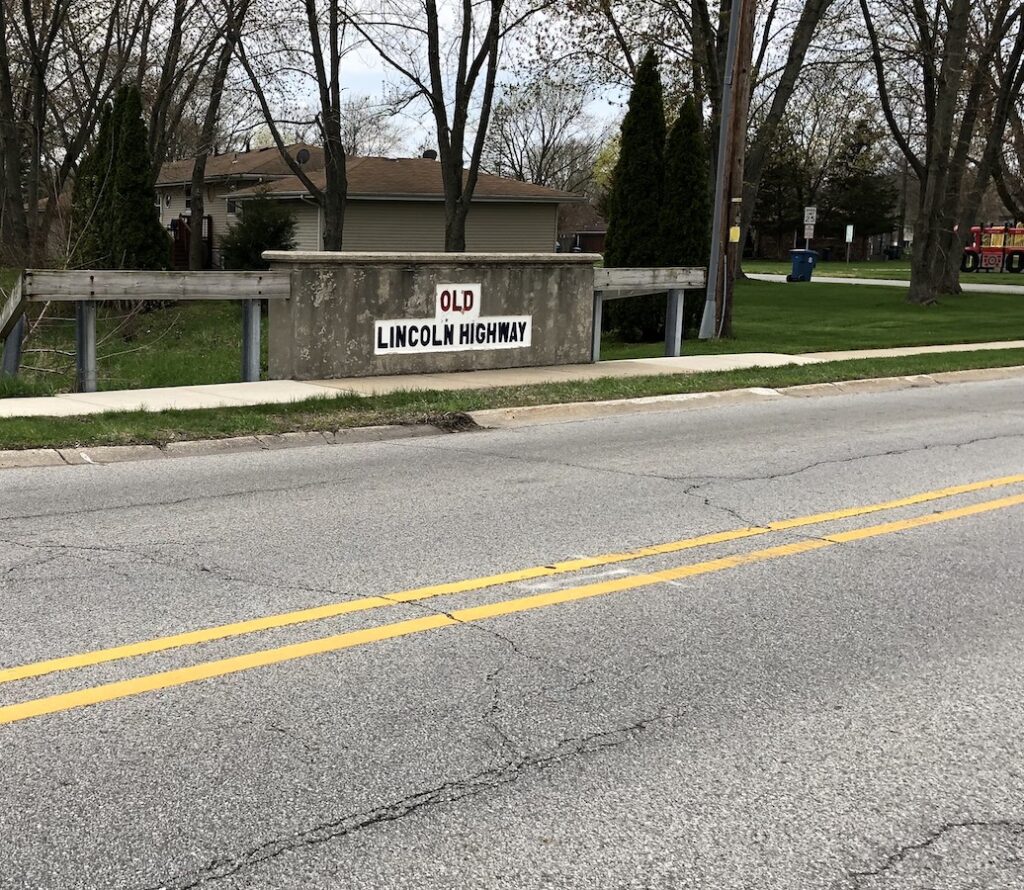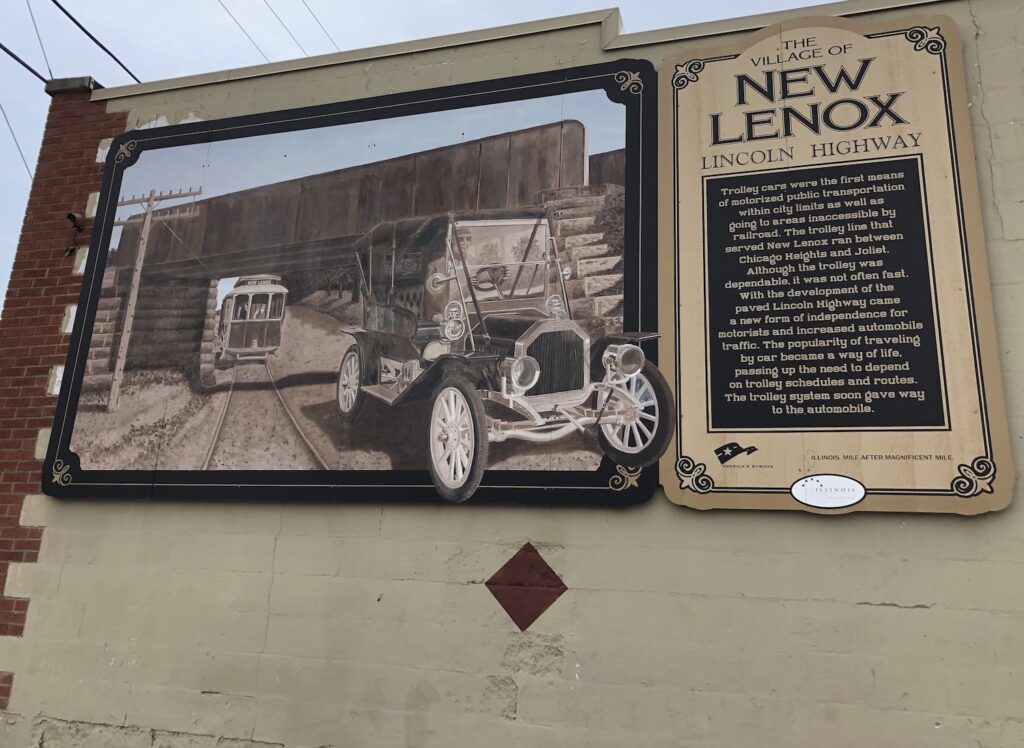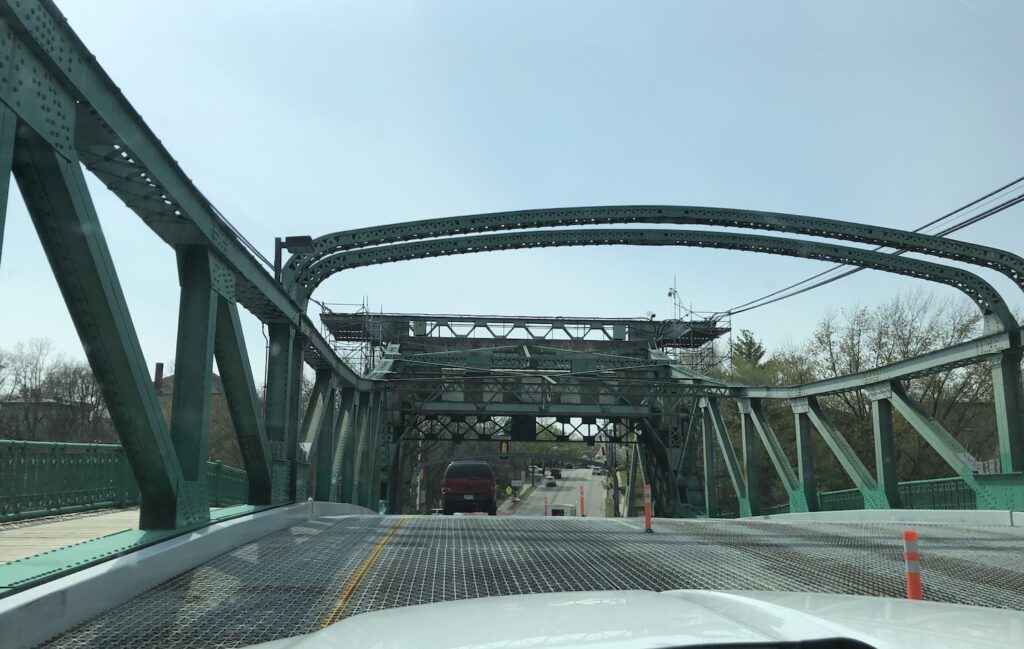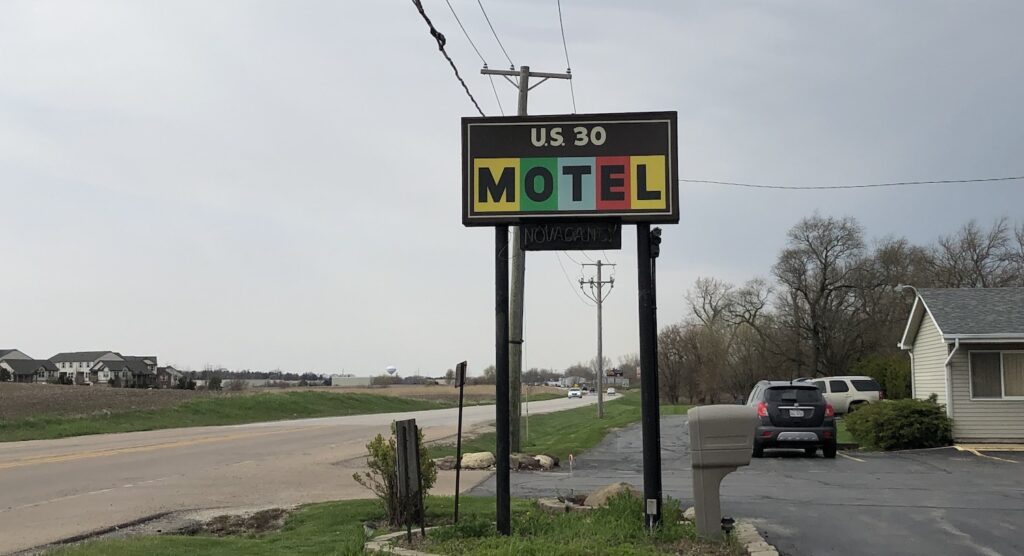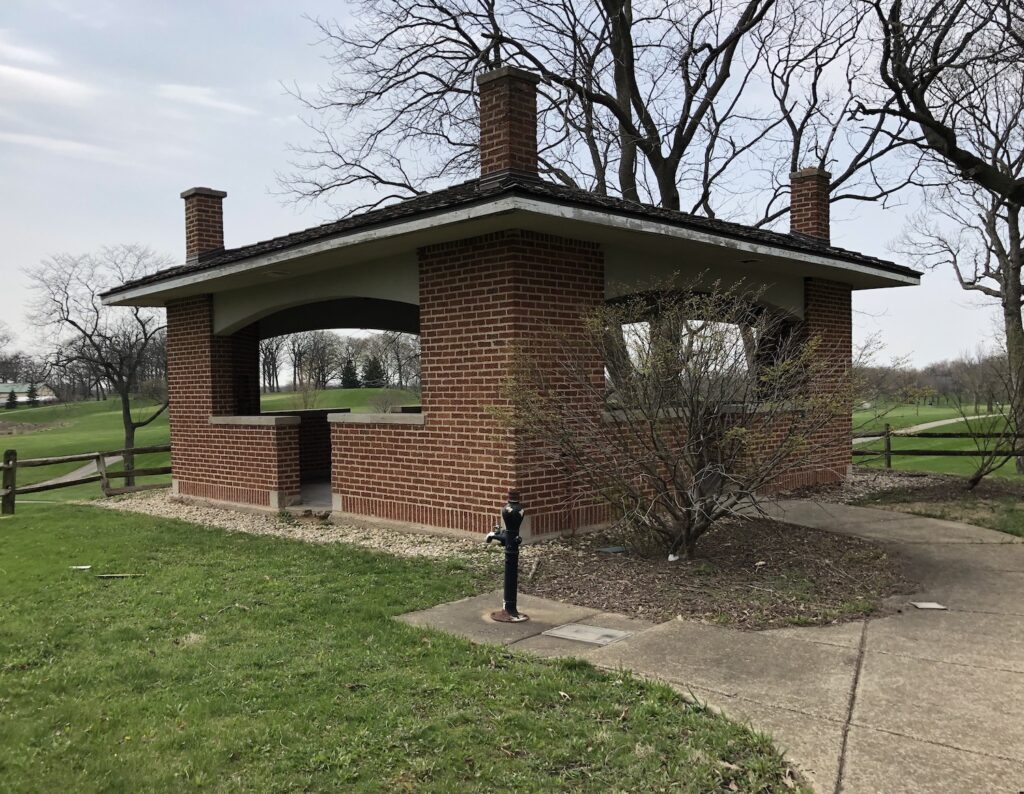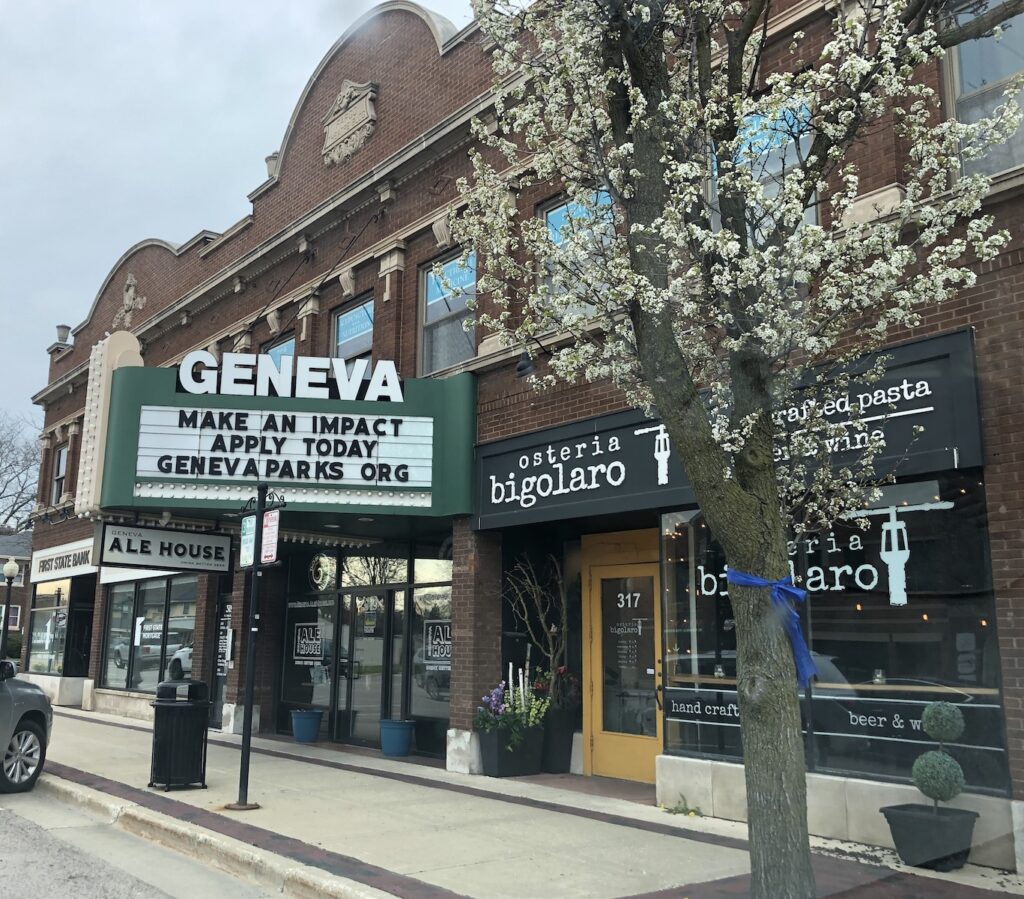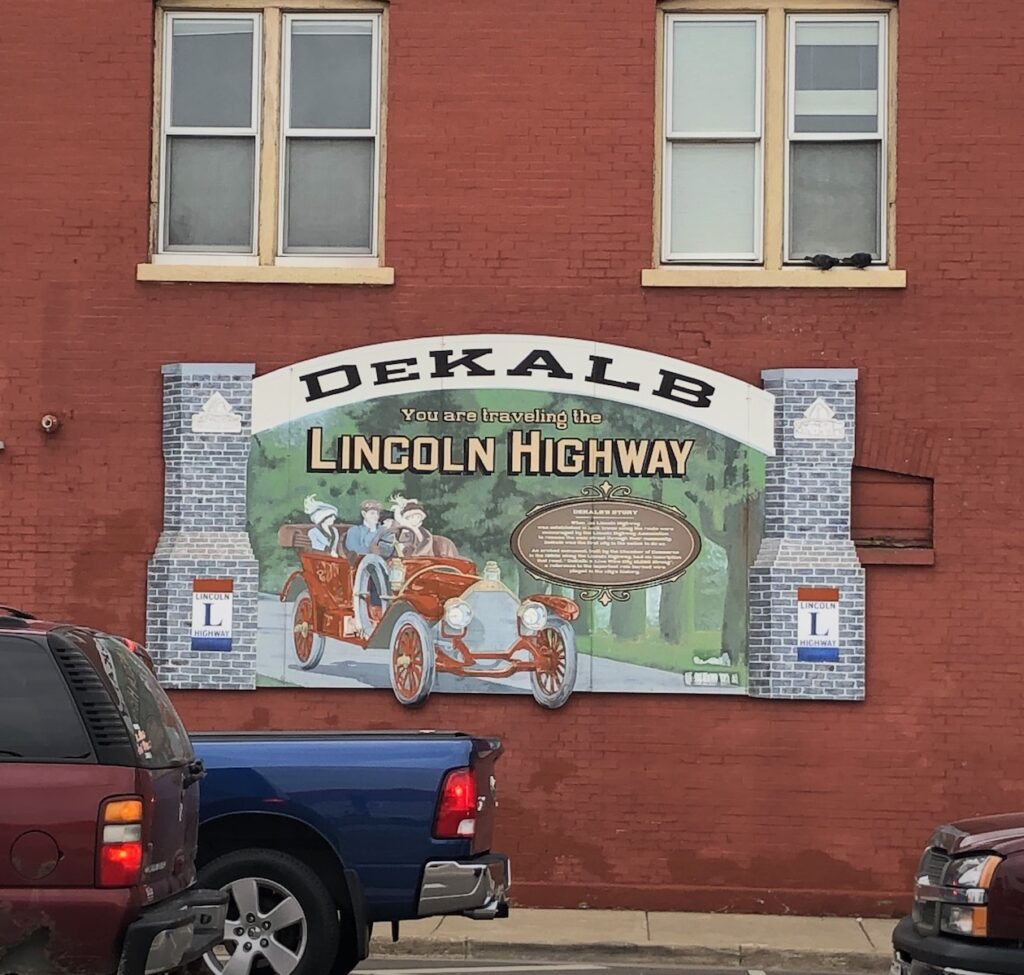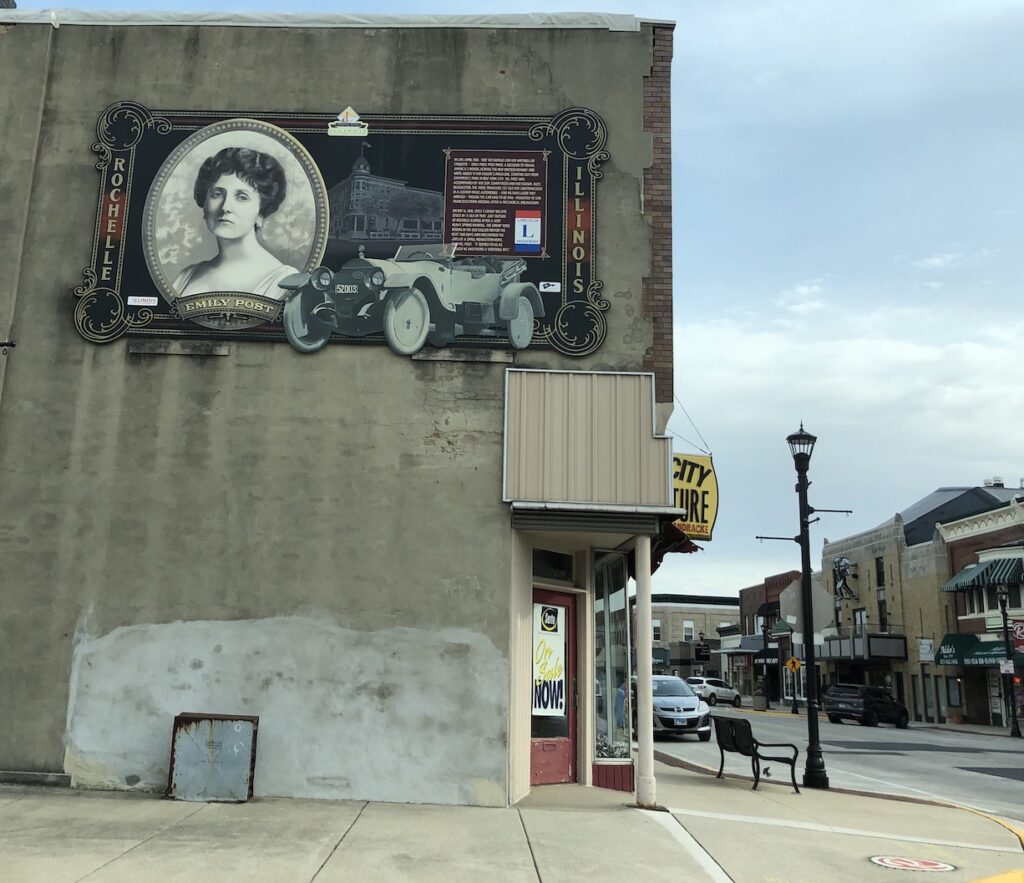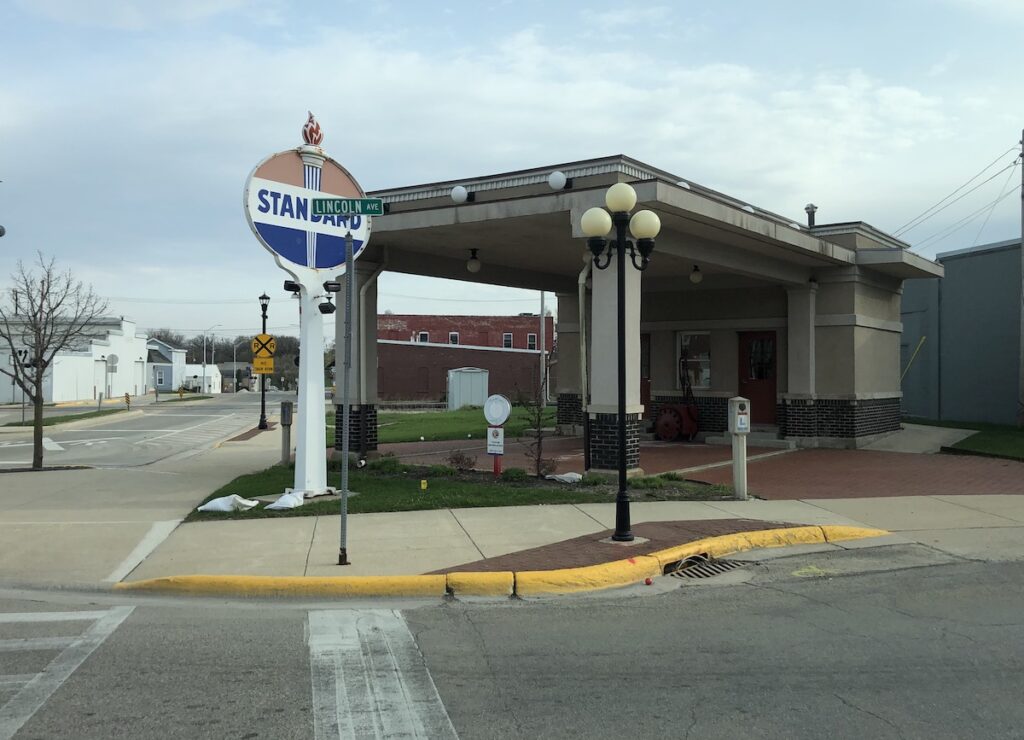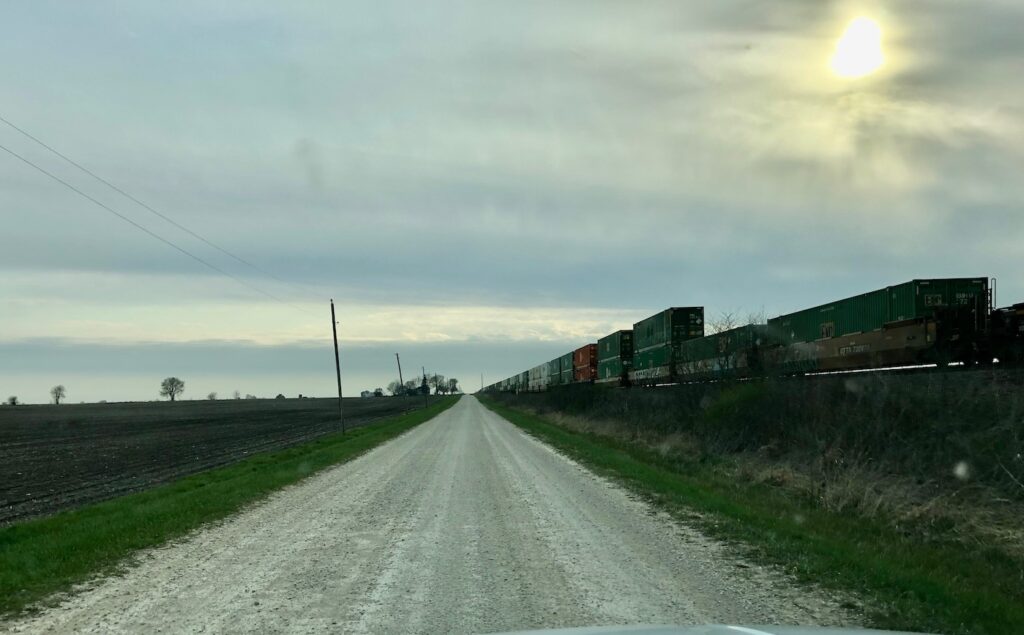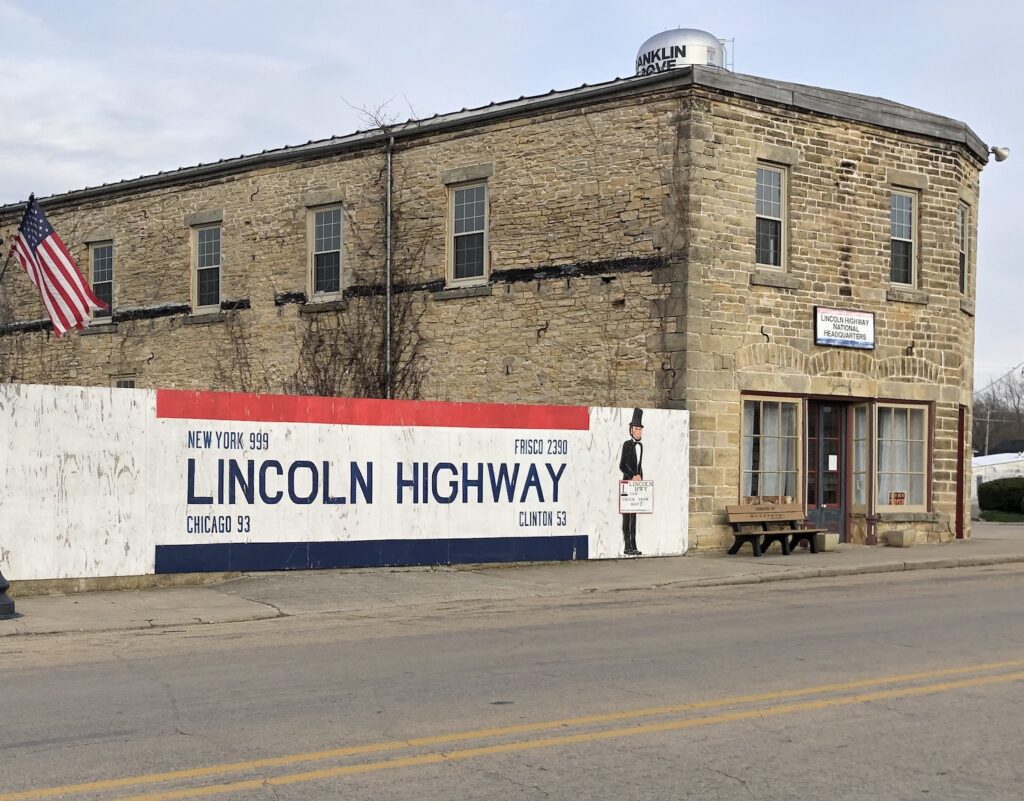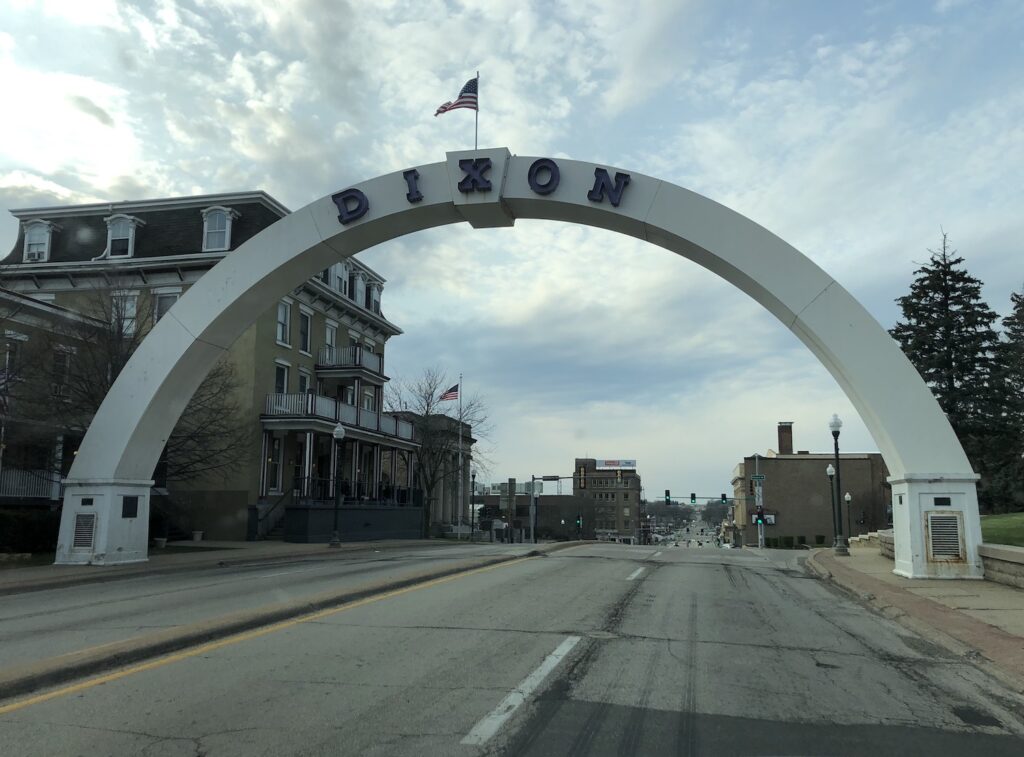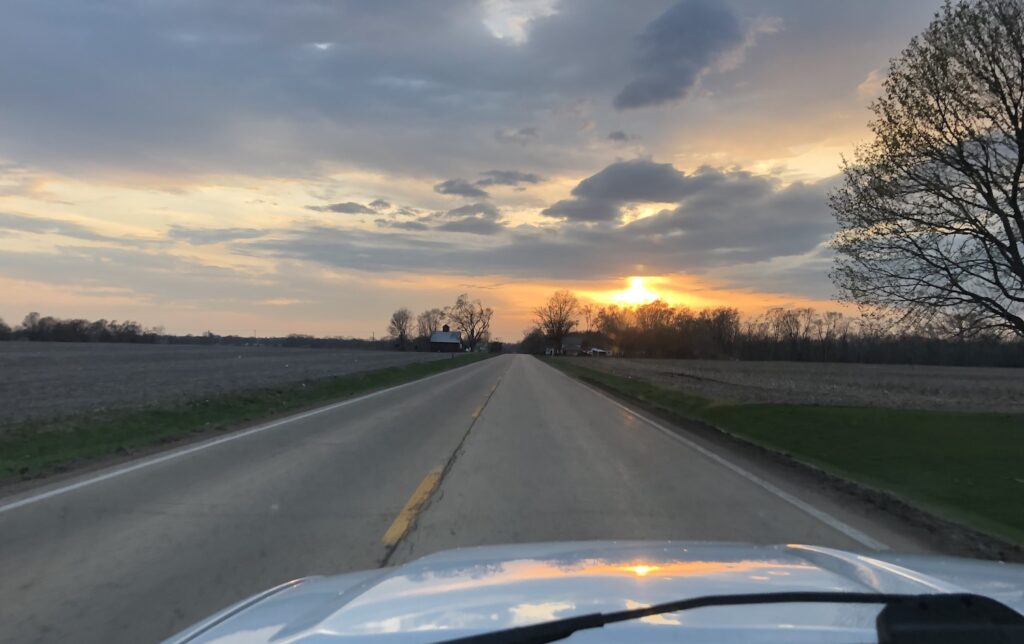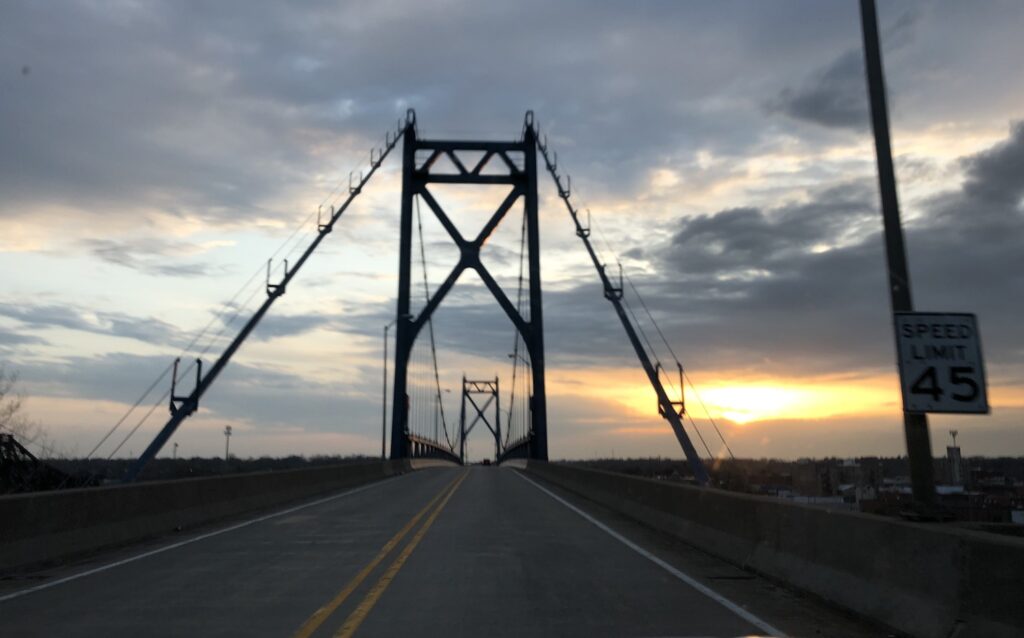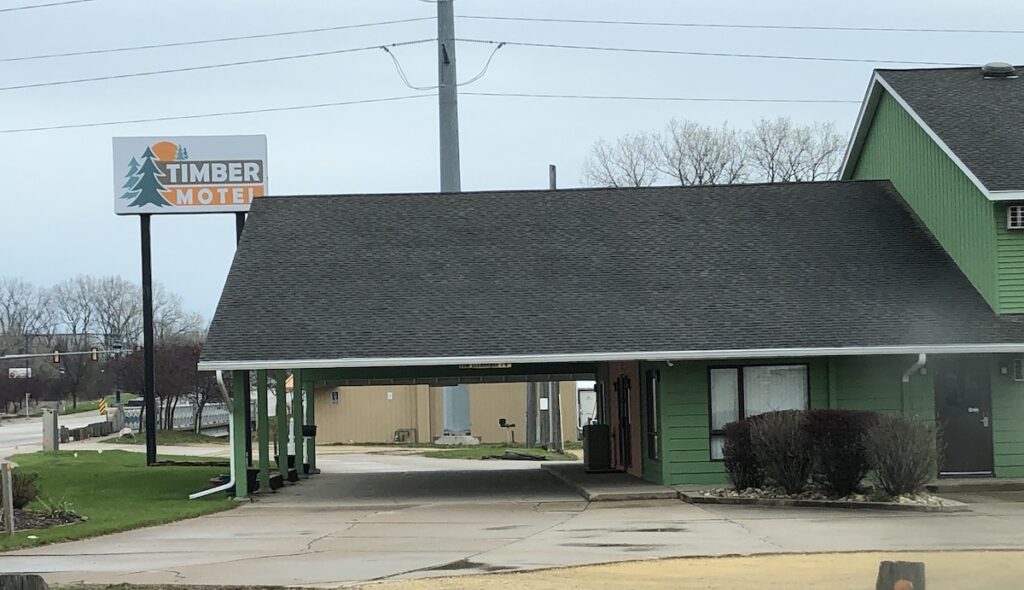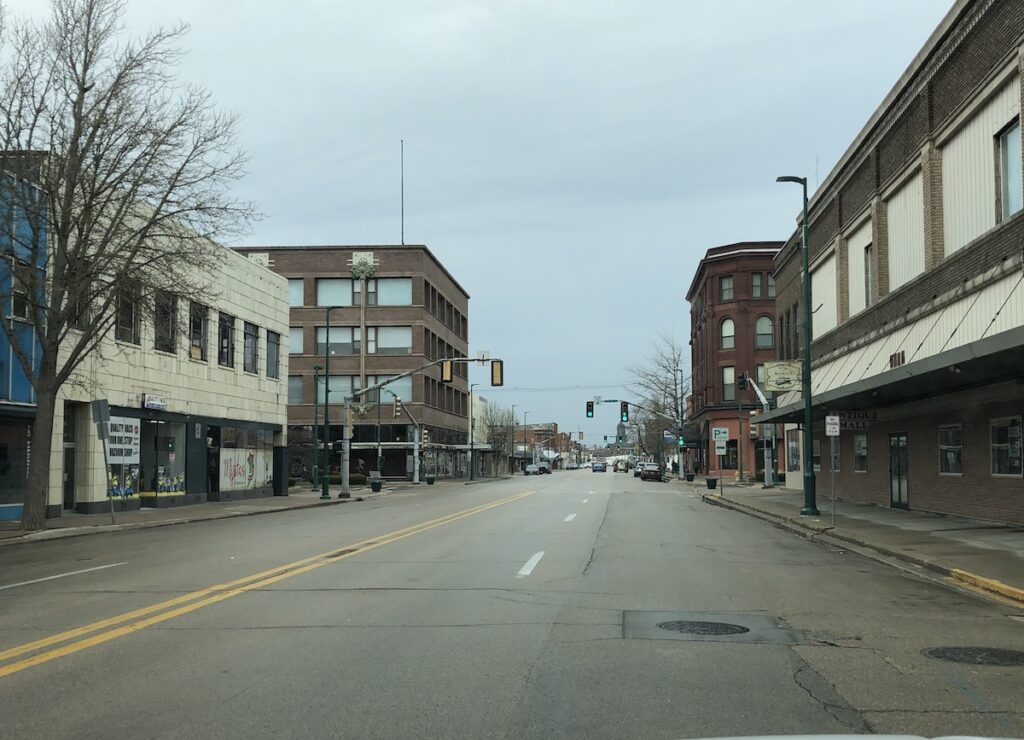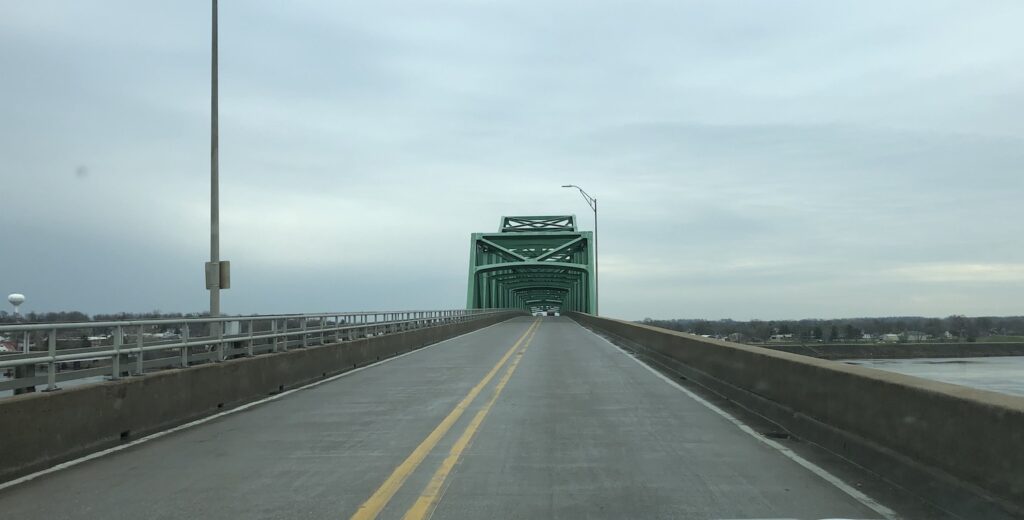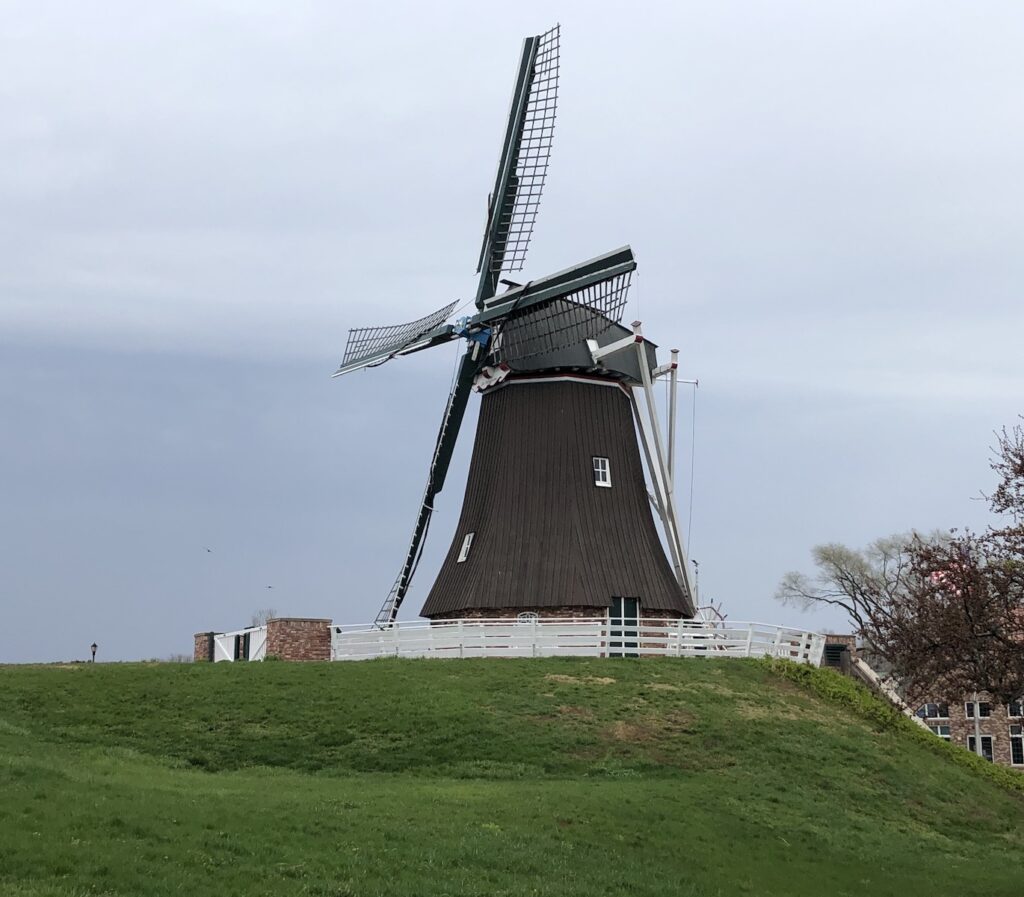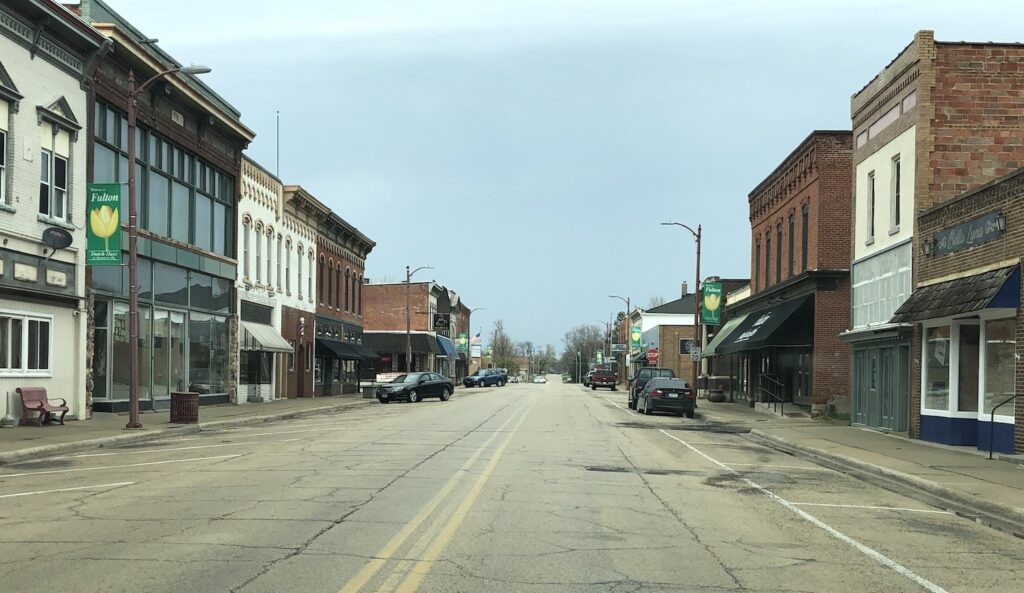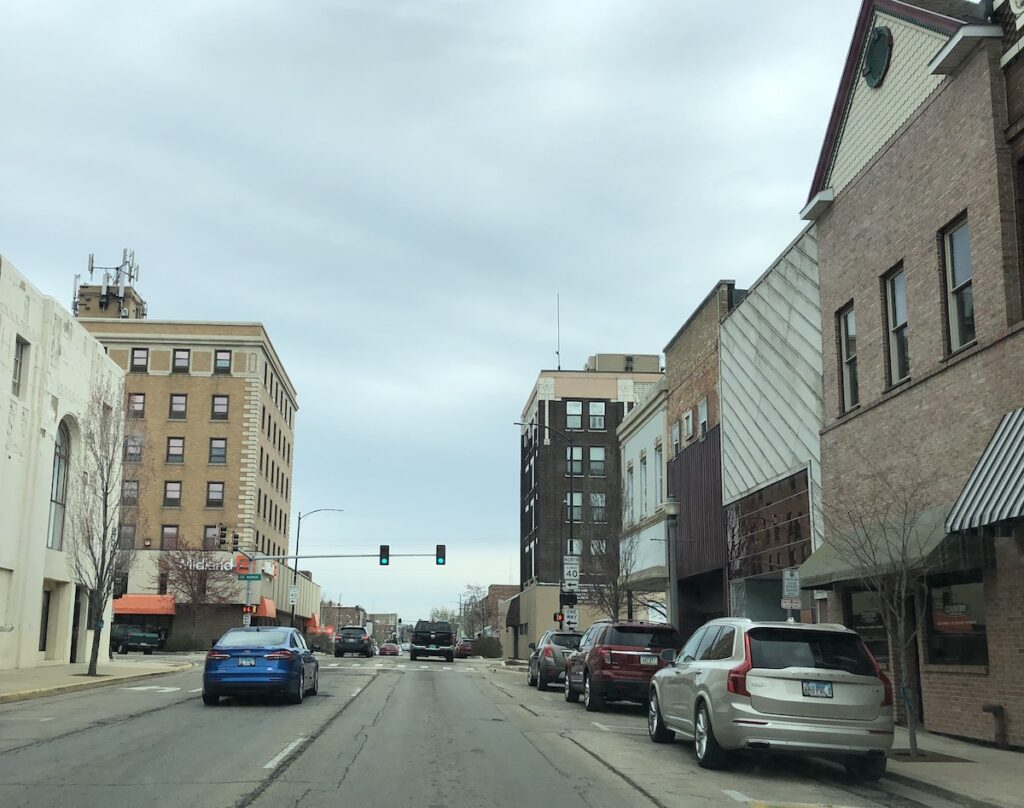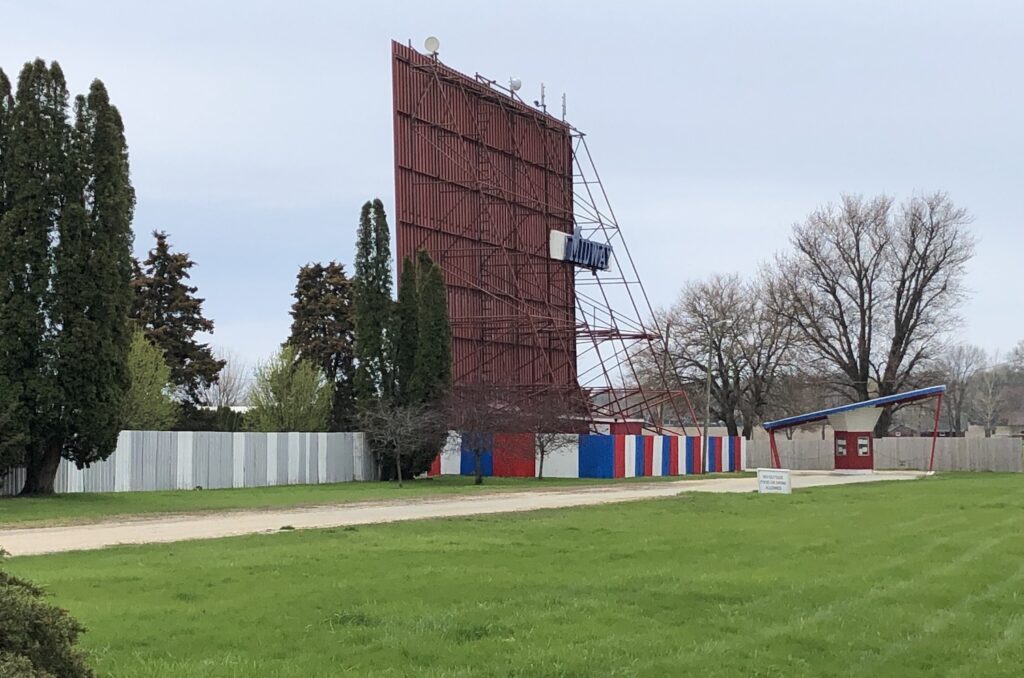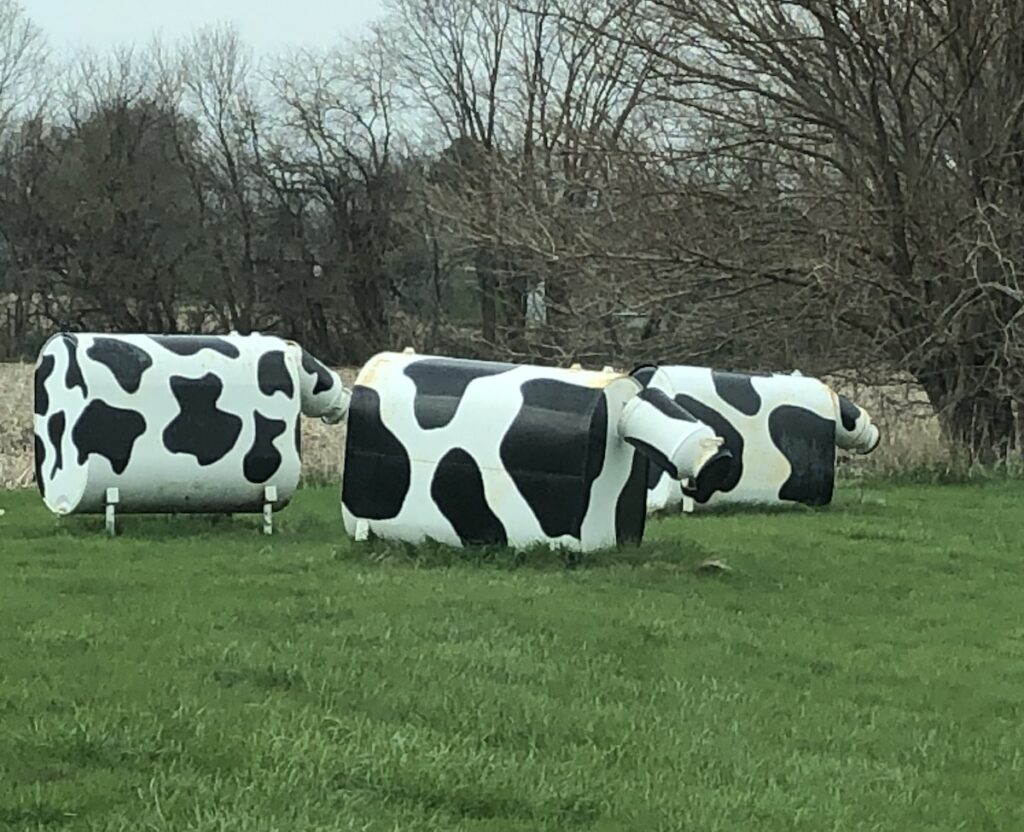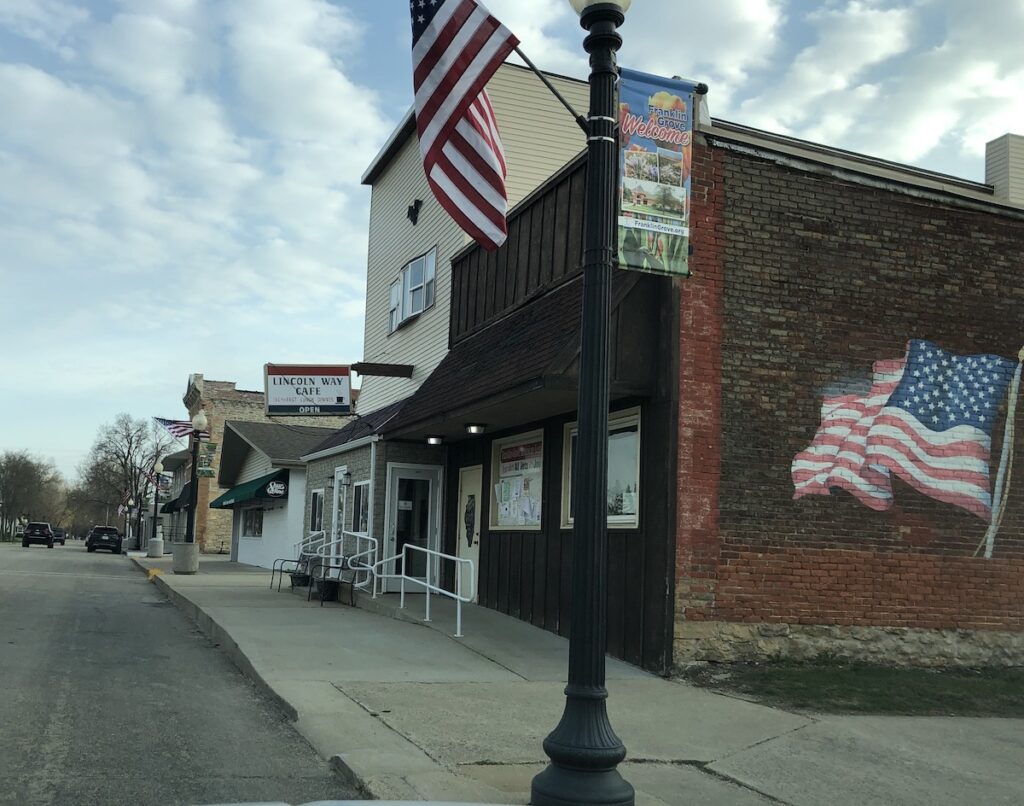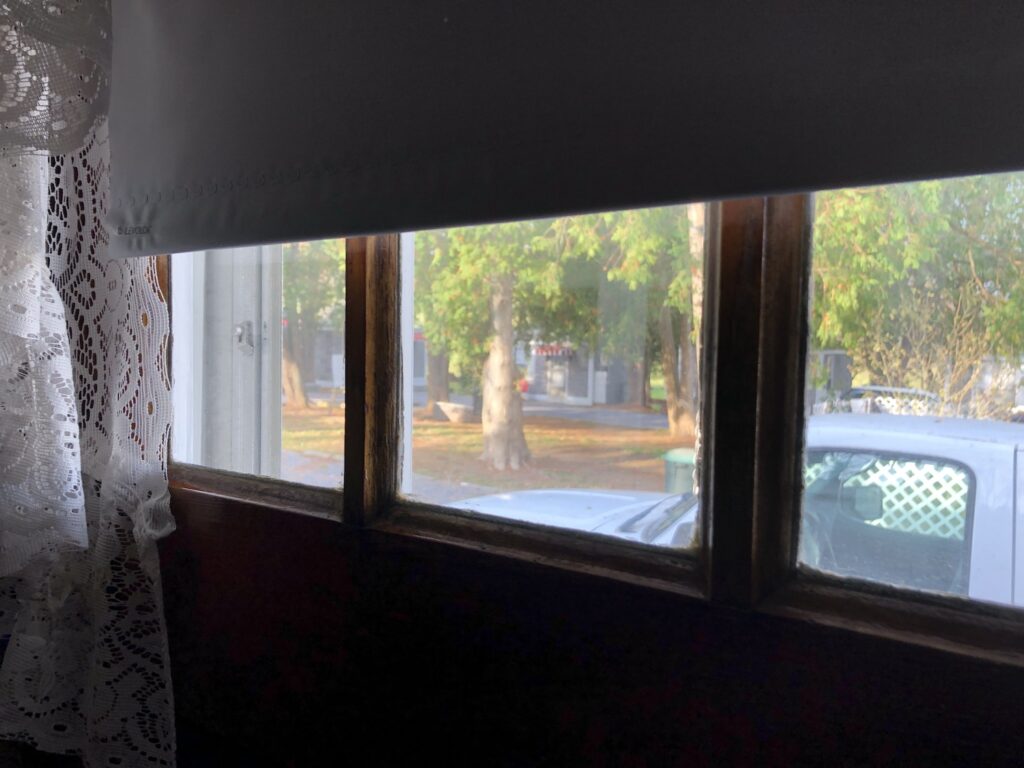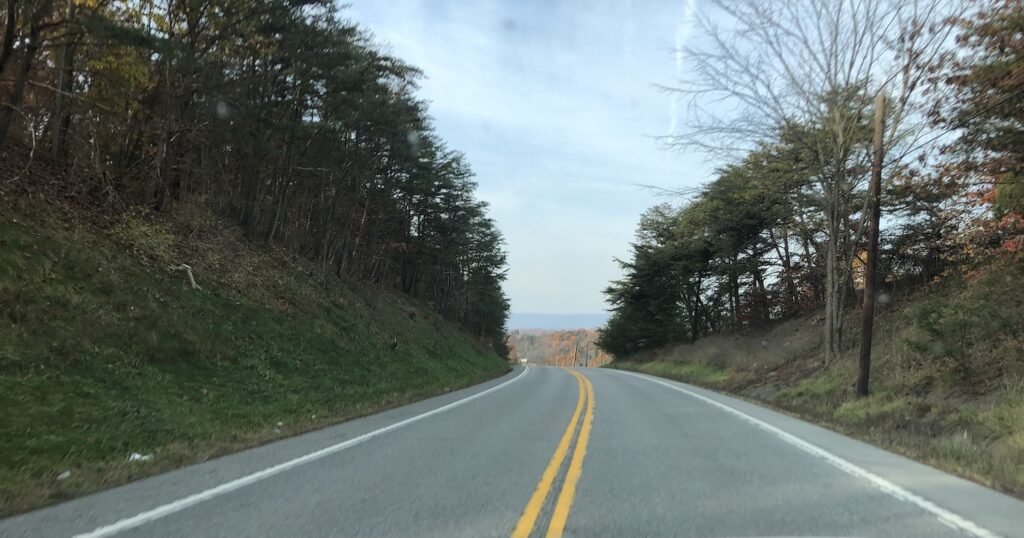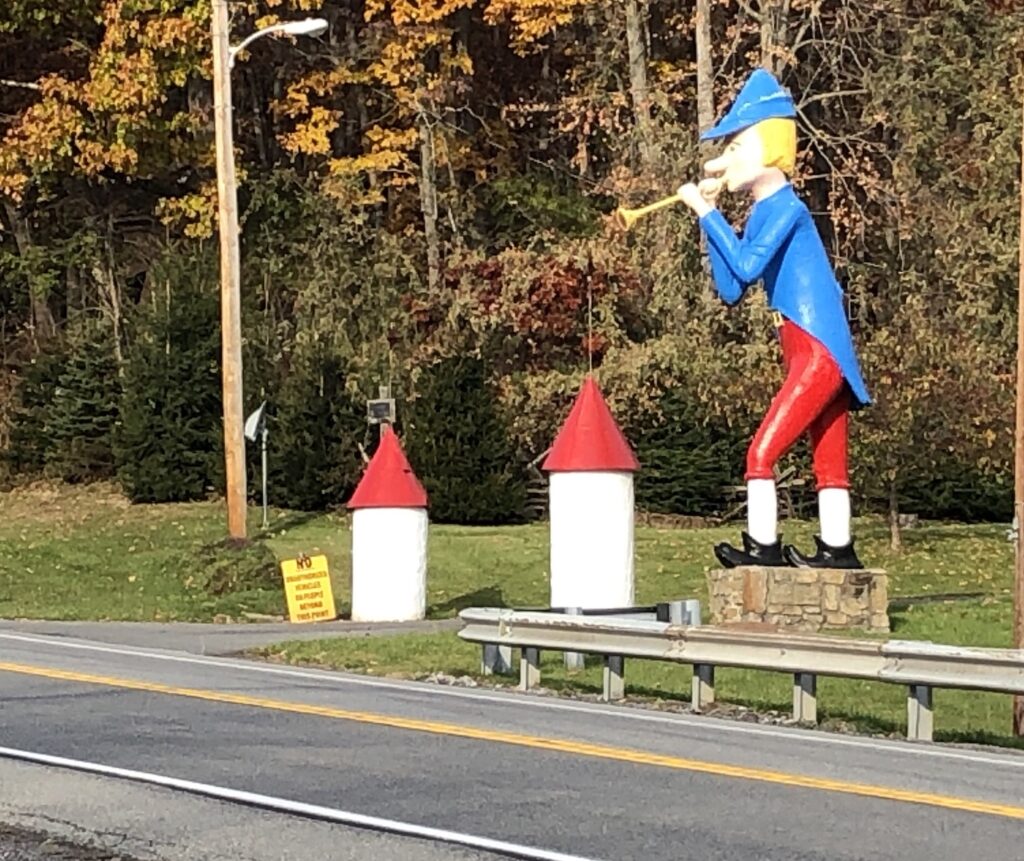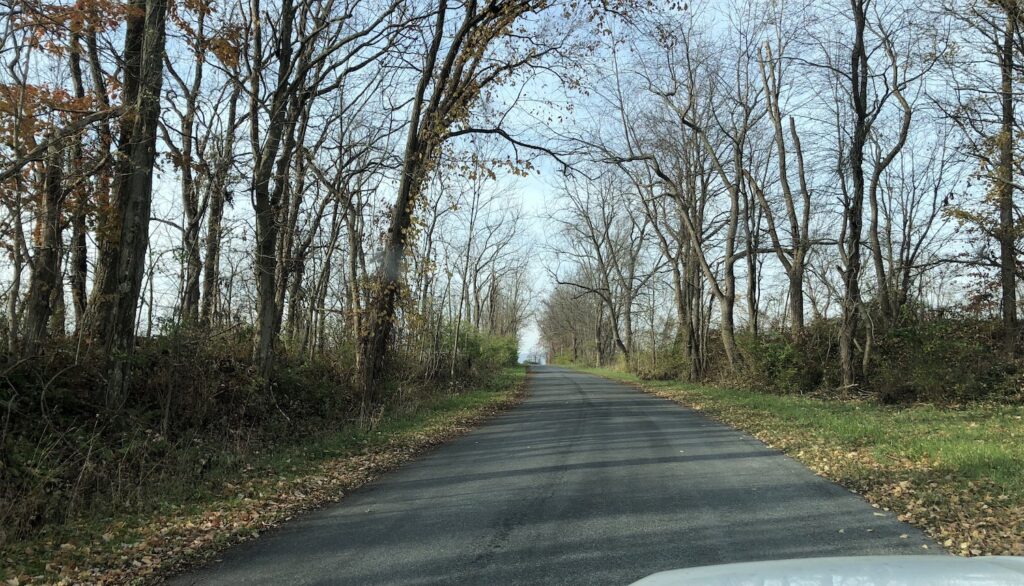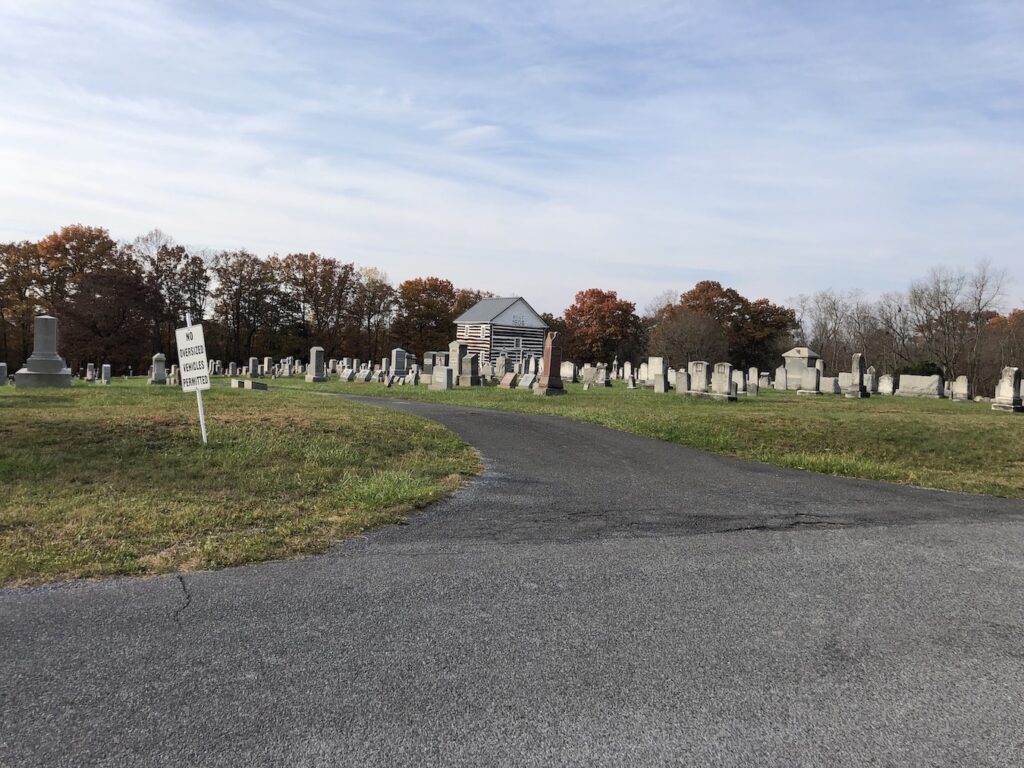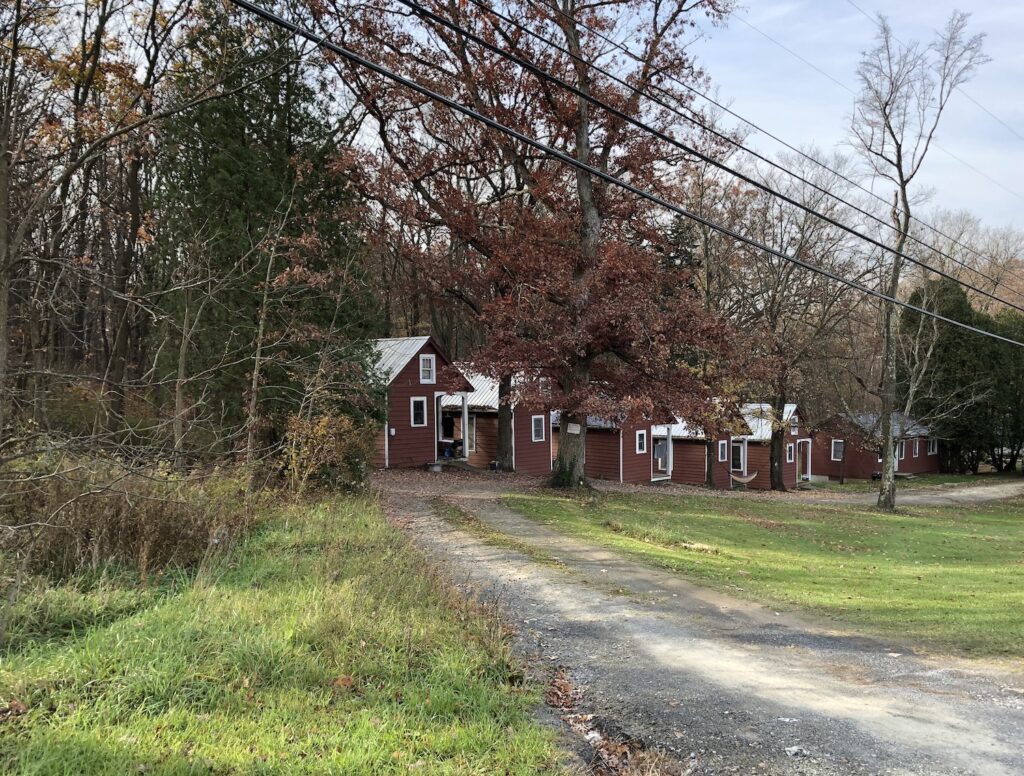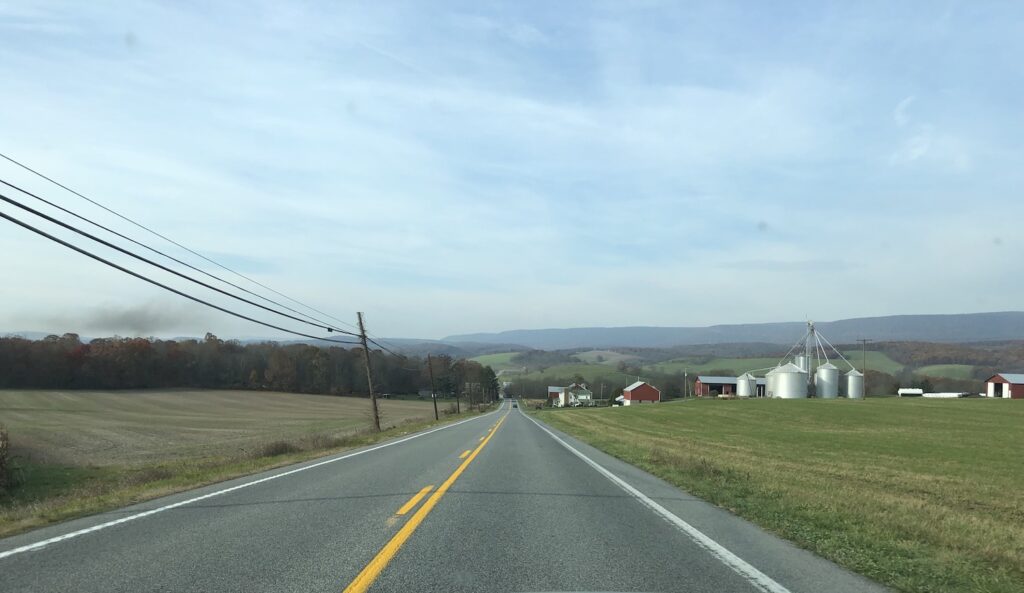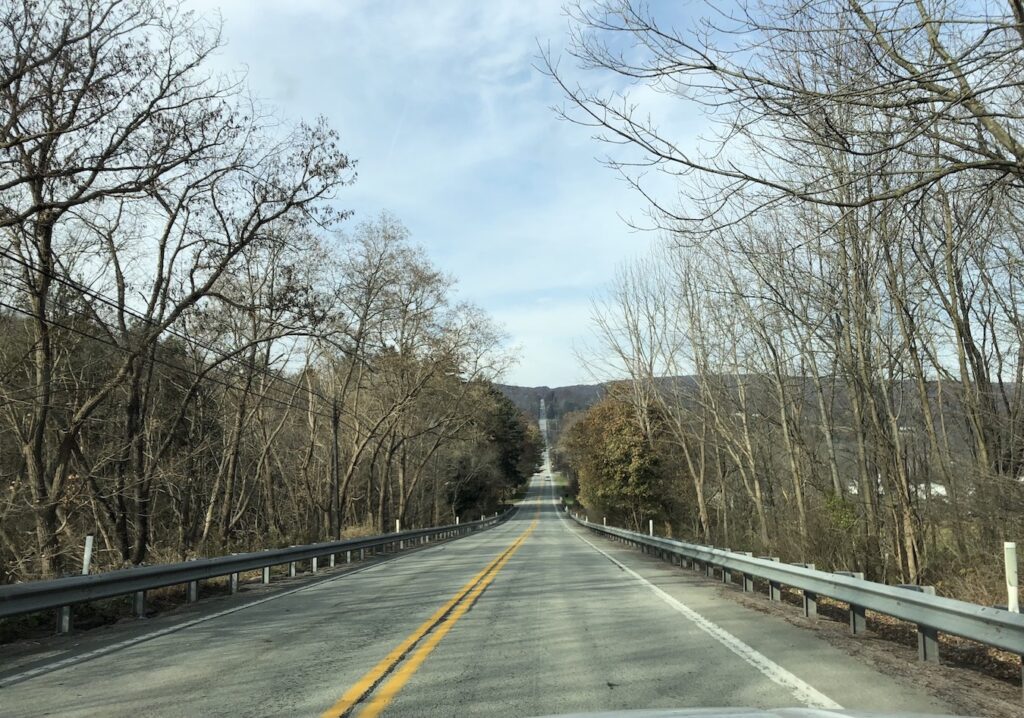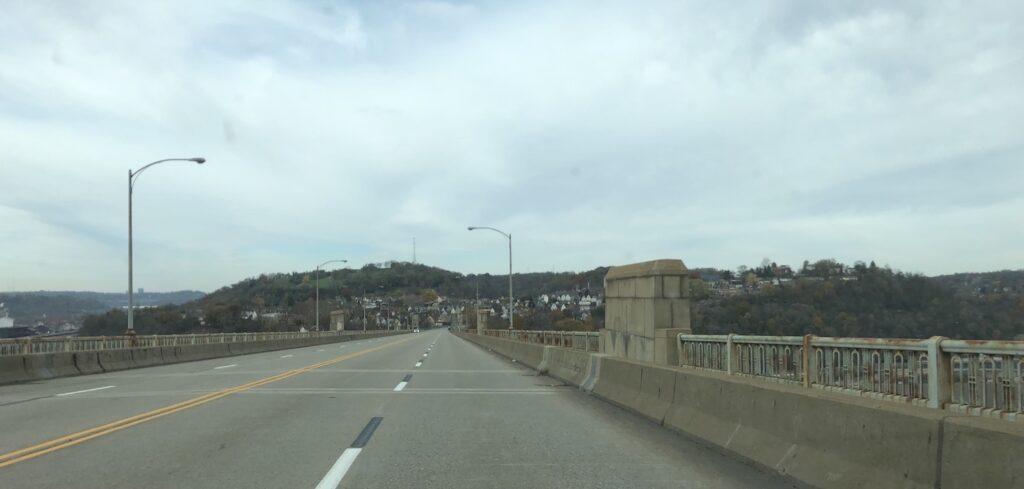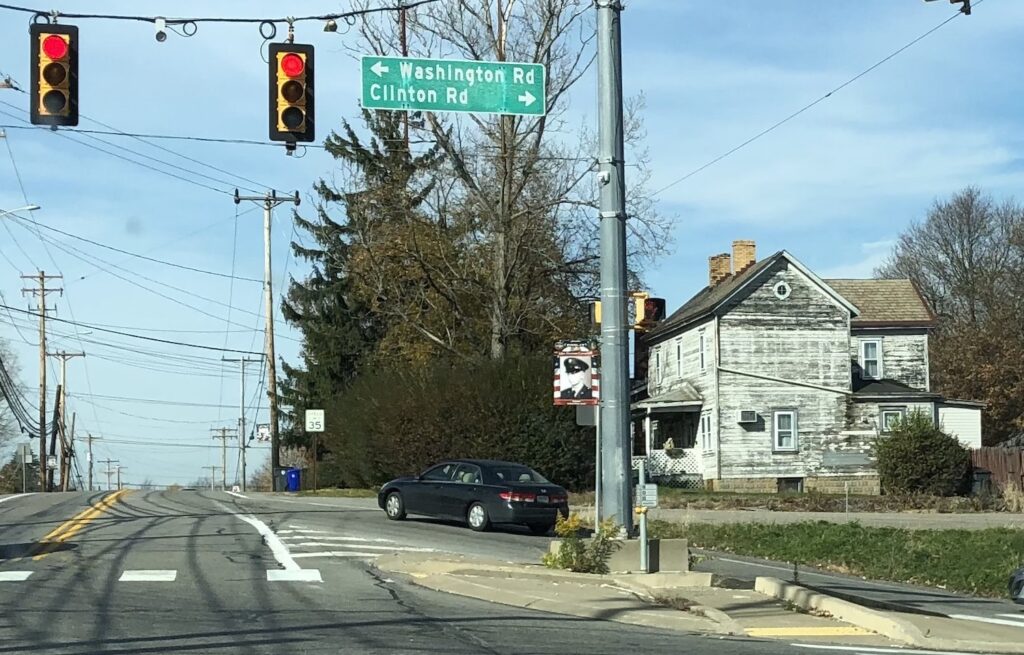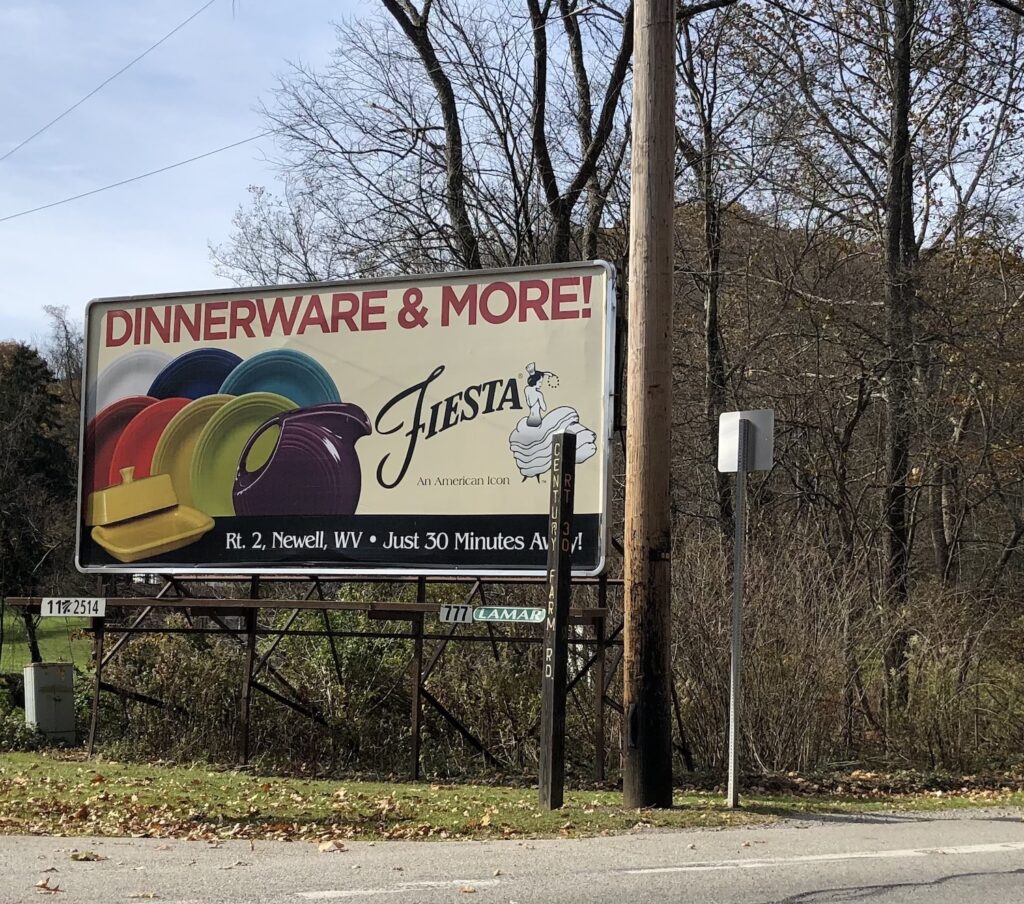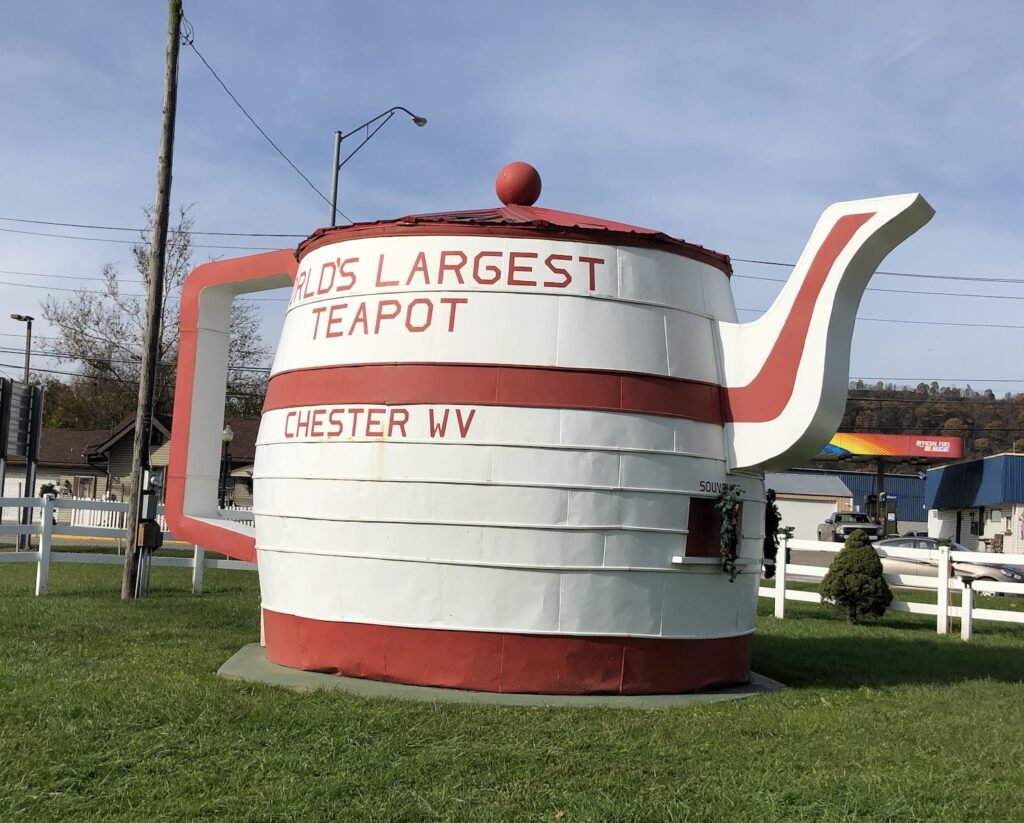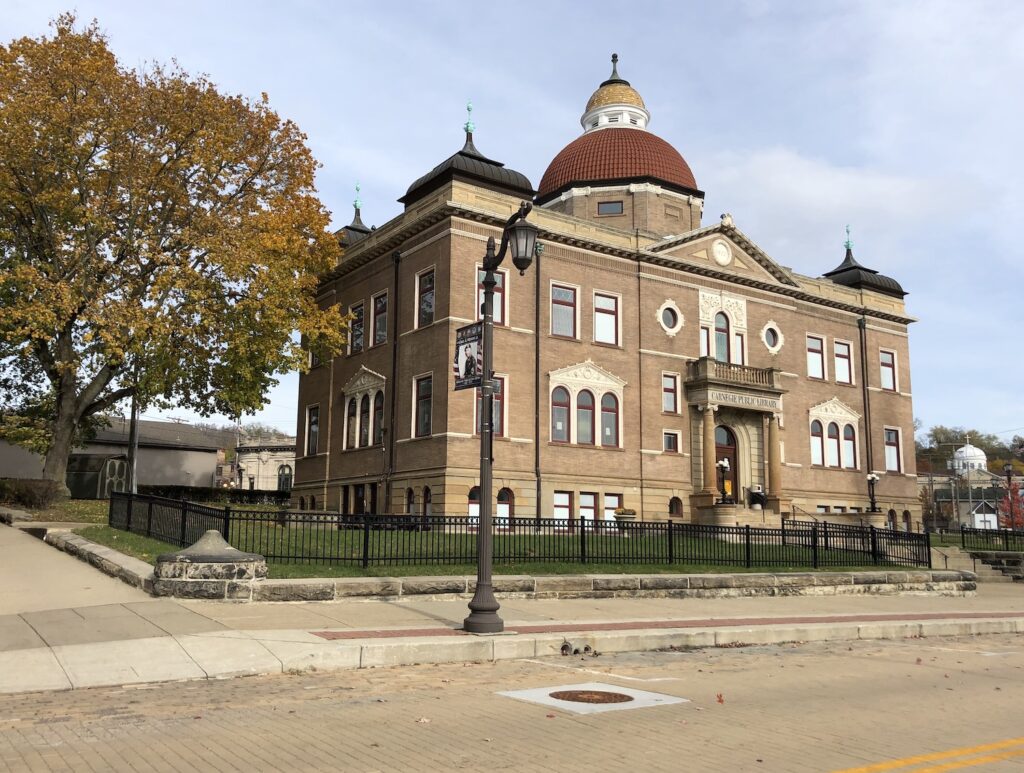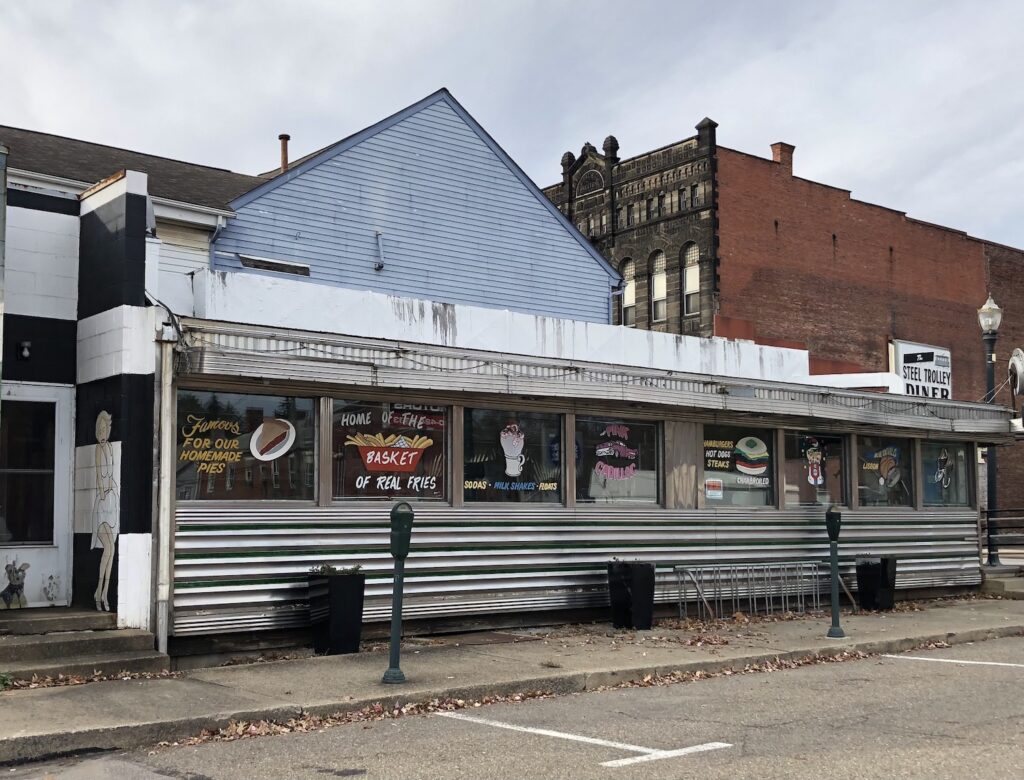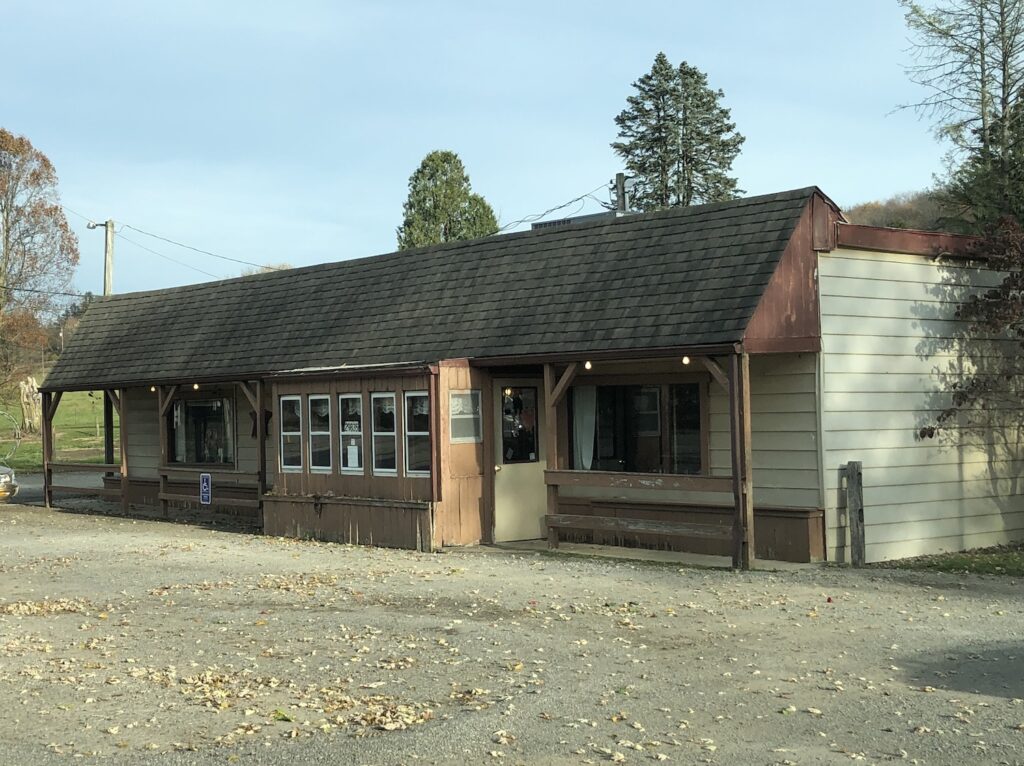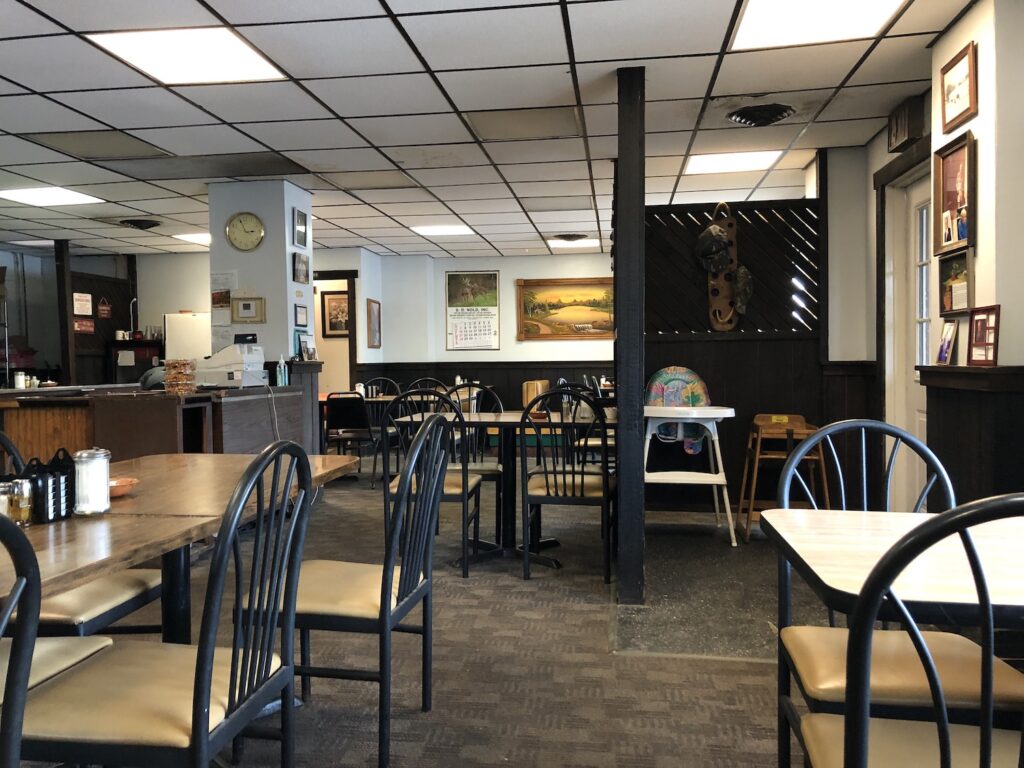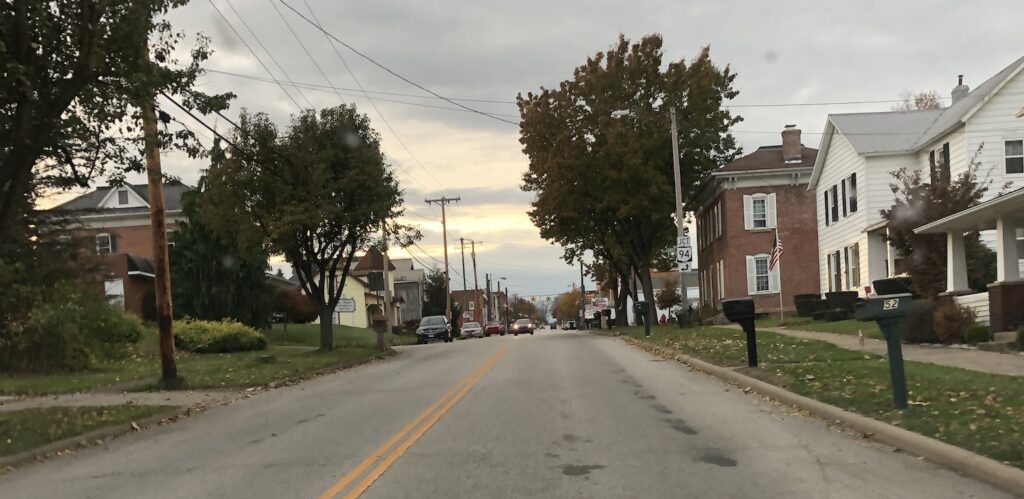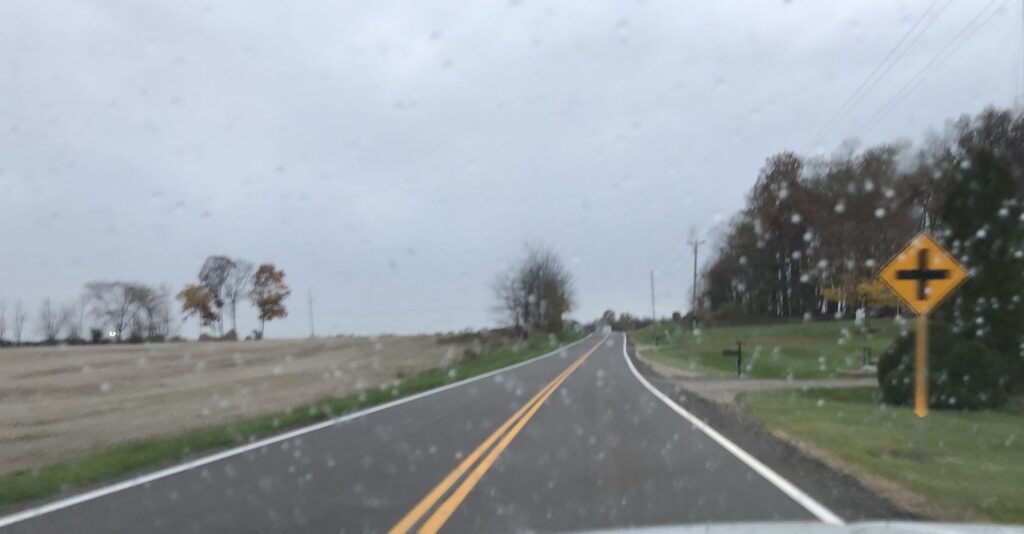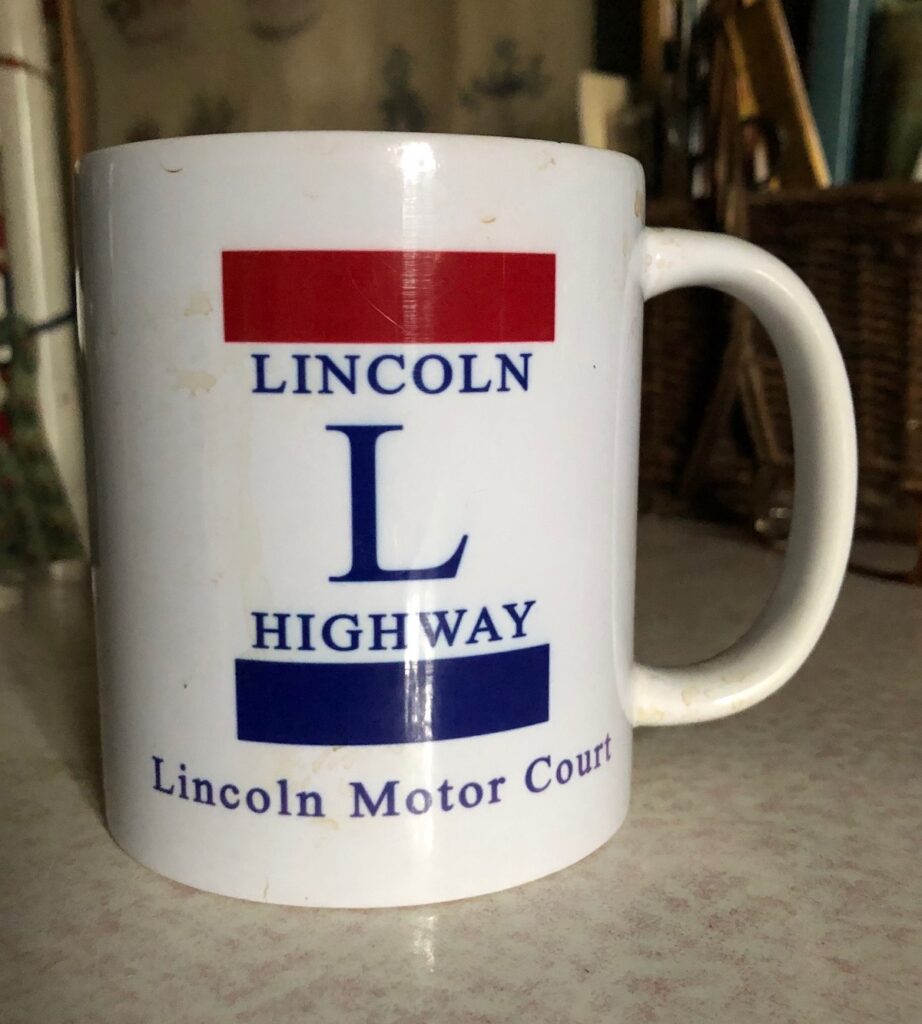I left the edge of Manistee with a supply of muffins and fruit from the continental breakfast provided at the cheapish chain motel. The Lake was calling! It was a beautiful morning; I headed north on M-22, up and down through wooded dunes and beautiful hilly farms and orchards. I had not been in this area for a long time, passed through Onekama on to Arcadia, which did not appear too tourist-tainted, even an old motel or two that I must remember.
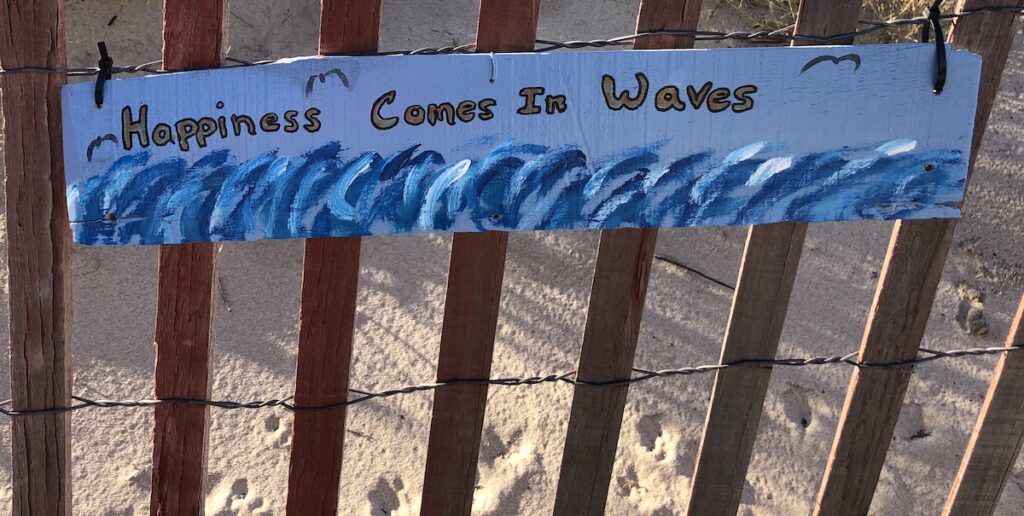
The path to its very nice beach was lined with cheery local art and covered with a layer of mesh over the sand–what a good idea! I reveled in the Lake’s swells, how the morning sun shone through the water, how it continually broke into fluffy foam. The beach was very stony at that moment, good waves but not not overly wild. Yes.
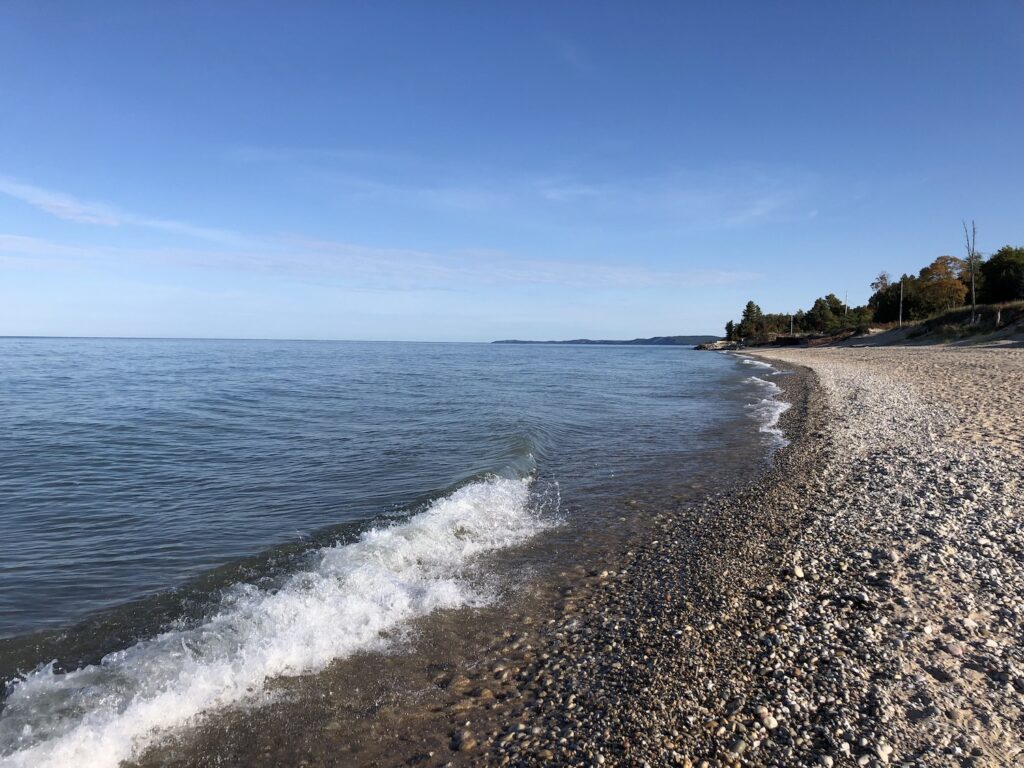
My next stop, apart from a quick peak from an overlook (ahhh!) was the beach at Elberta, where the waves were much wilder and singing lustily, with nary a stone to be seen at the water’s edge. The Lake has many moods.
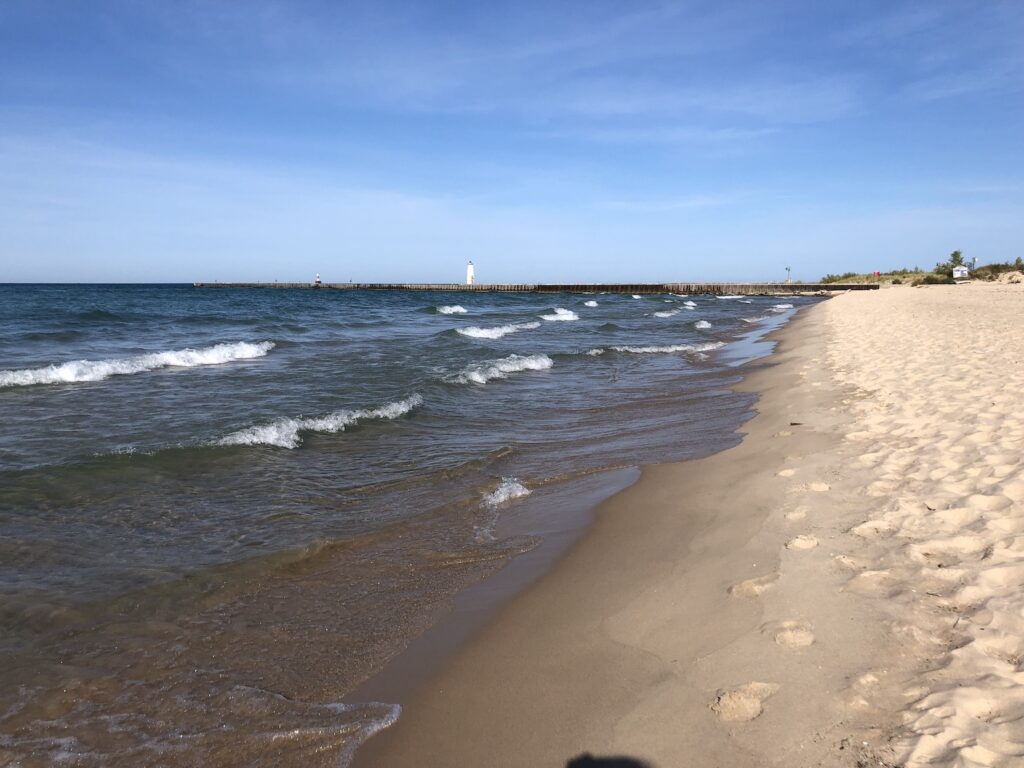
Elberta lies south of the inlet–to the Betsie River, I believe–across from Frankfort. Frankfort, a most charming town with aspirations higher than its station, is a “city,” if you please. Whatever it calls itself, I could stay a long time, sit and write for hours, dance with the waves, or wander the streets. I think I could live here.
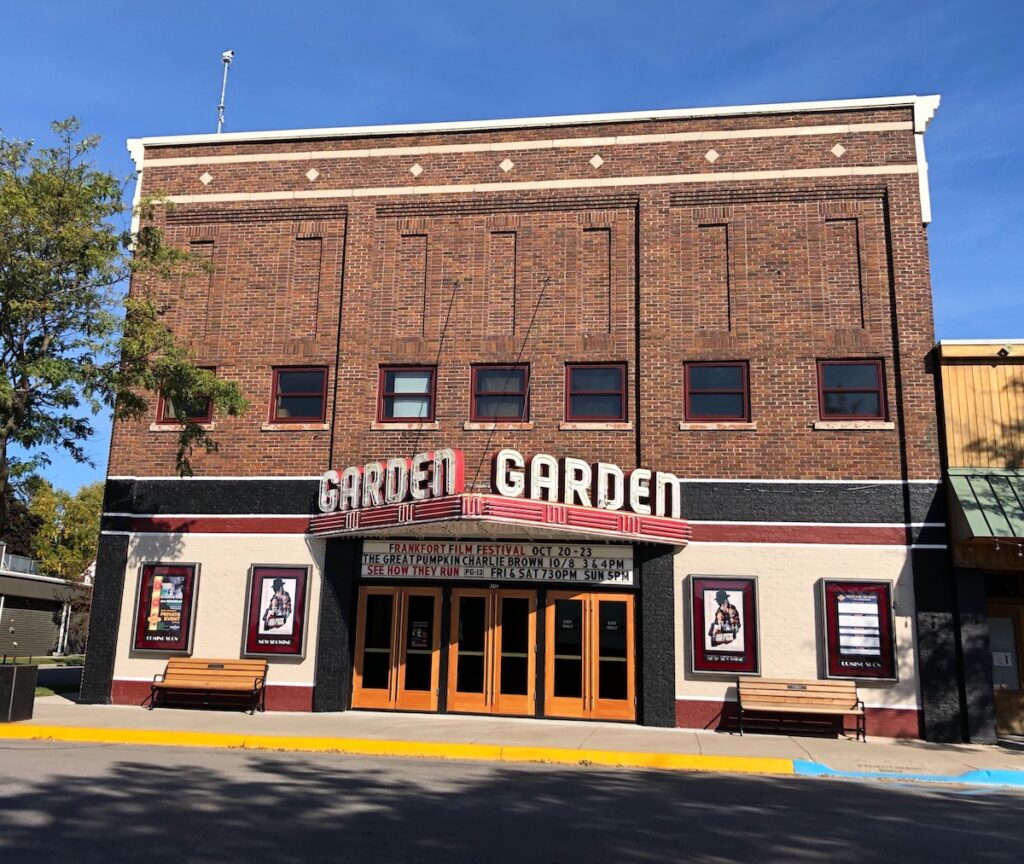
There is a New Deal-era post office and a real movie theater. And charm in spades–and people who walk. Lake people. Of course, I wandered over to Frankfort’s beach as well. The Lake was quiet, peaceful. For now.
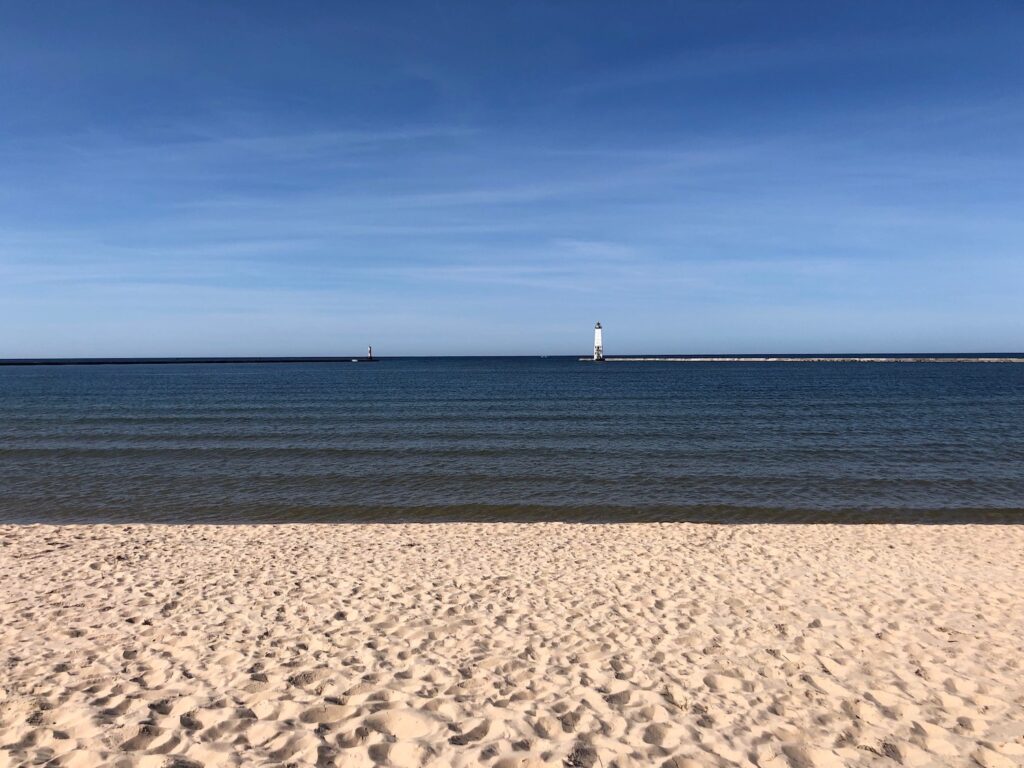
Oh, I love it all, but onward to Glen Haven, Glen Arbor, not to mention Sleeping Bear! First, a stop at Point Betsie Lighthouse, not far north of Frankfort. I think this must be one I had missed.
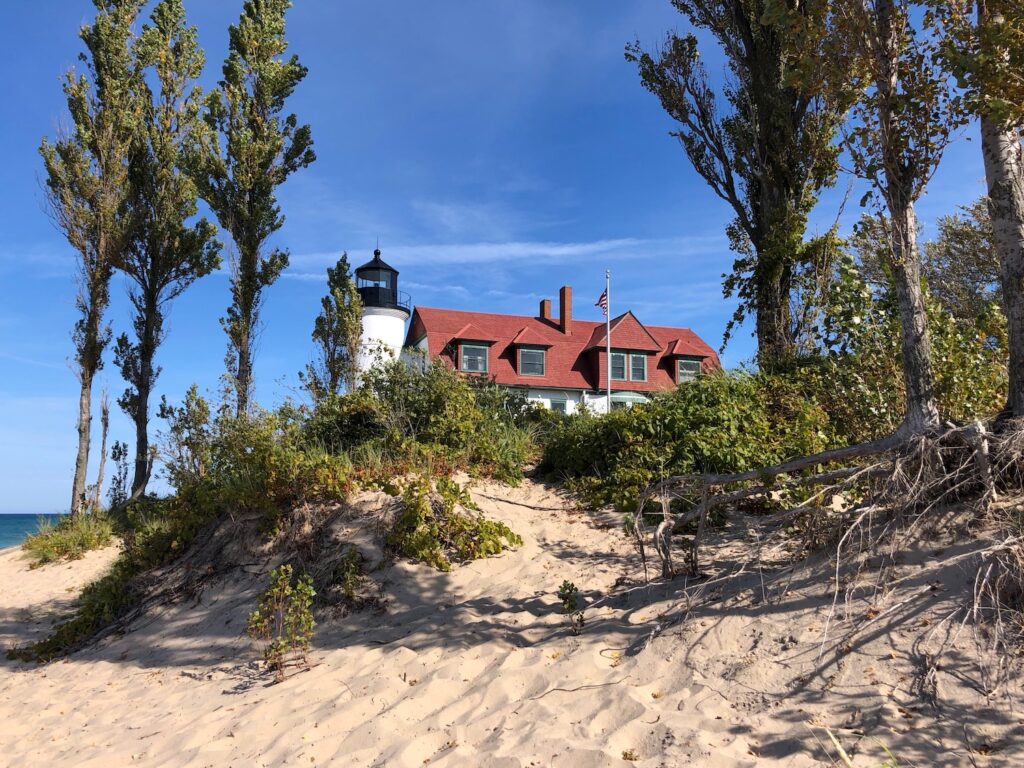
It’s a lovely complex of red-roofed white buildings nestled amidst twisted birches on the windy shore. The museum is closed, alas, which is one of the downsides of traveling in the off season, especially on weekdays. I linger awhile in shady spot amidst those trees buffeted by the wind off the Lake. Sleeping Bear called, so I turned inland, winding through forested dunes until I arrived at the Pere Marquette Drive, which I had not driven in years.
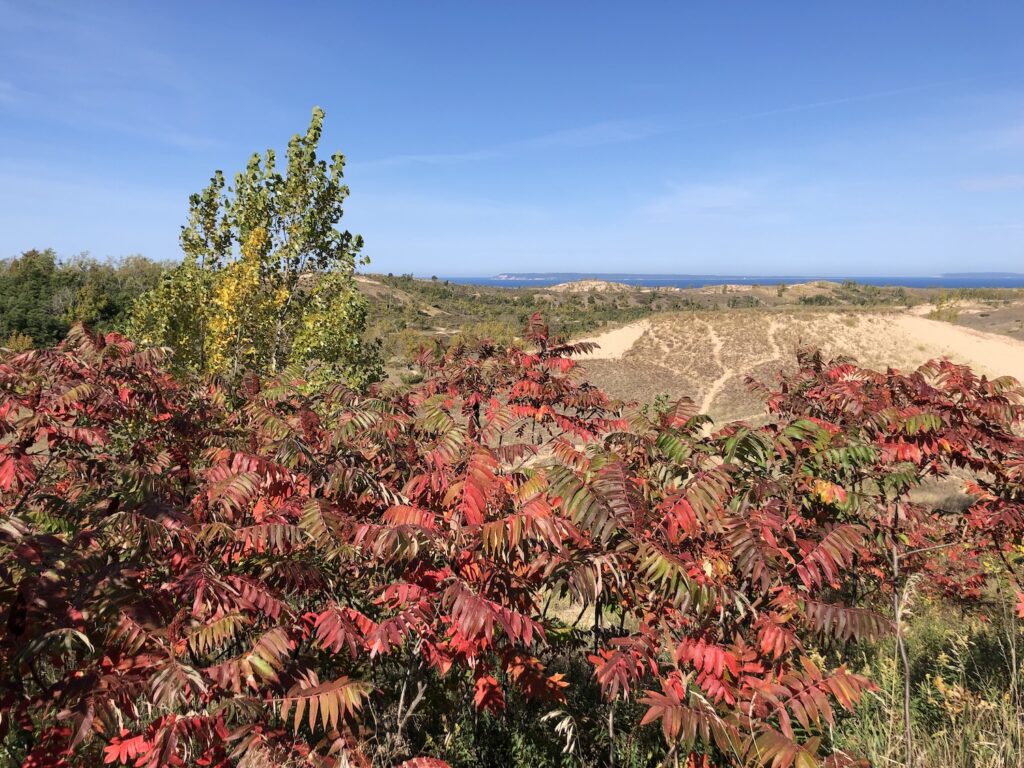
The views were spectacular and I stopped several times to drink it all in on this, yet another glorious day of sun and breezes. After making that circle I headed ever northward to Glen Haven, once a thriving lakeport. It was a ghost town when I first saw it decades ago; the National Park Service brings it to life seasonally. The old cannery is a museum; there is plenty of interpretive signage throughout the site.
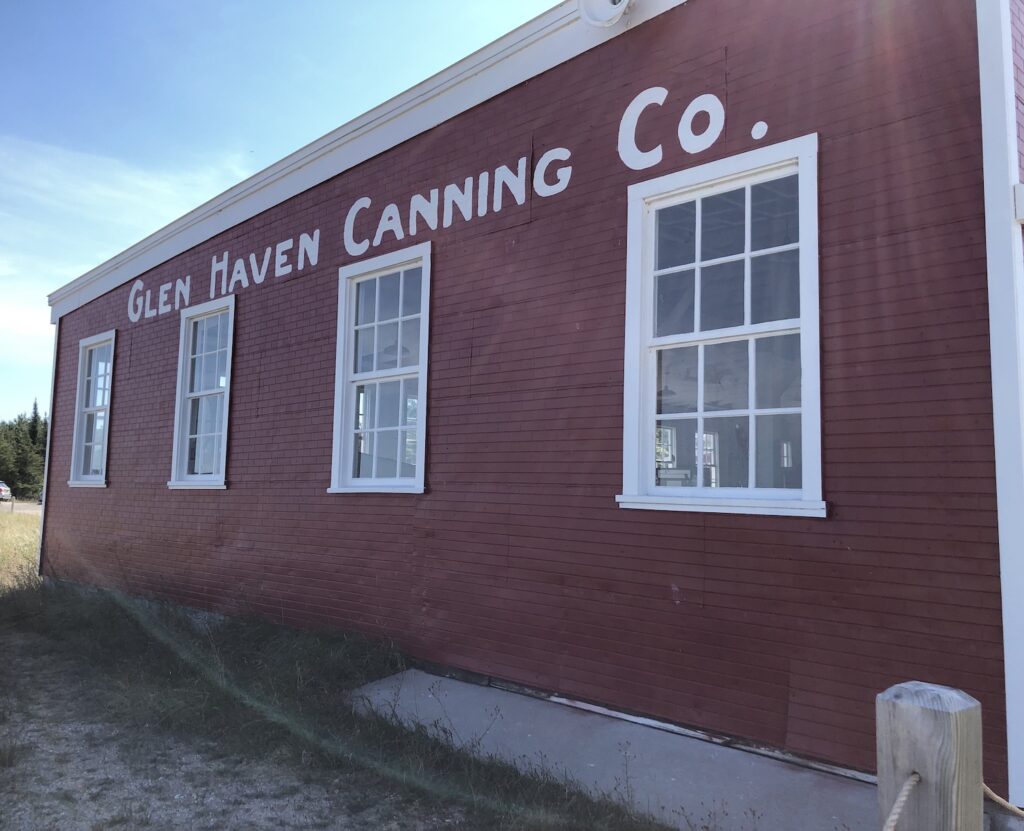
They were working on the old hotel that day; people will soon be able to reserve overnight stays in the tiny village amidst its many ghosts. Glen Arbor, on the other hand, is a small town between Glen Lake and THE Lake (Michigan), and determinedly caters to locals and tourists alike, tipped a little toward the latter, it seemed. I did not stop; I had remembered it with fewer “attractions” and more charm.
I was starting to get awfully hungry but Leland was not far. Alas, a very likely place had just closed and the town seemed too touristy. Onward. I reached Northport and lunch at last, at the funky New Bohemian Cafe. Still too many tourists, but not so bad. I know, what am I? Well, a Lake-wanderer, as I have been all my days. I left the lighthouse for another day and started down the west side of the Grand Traverse Bay, still faithfully following M-22, one of the prettiest “highways” (barely!) in the Midwest. The lake lapped on my left, and I passed through Suttons Bay, which even had an active theater. Michigan folk around here love their arts!
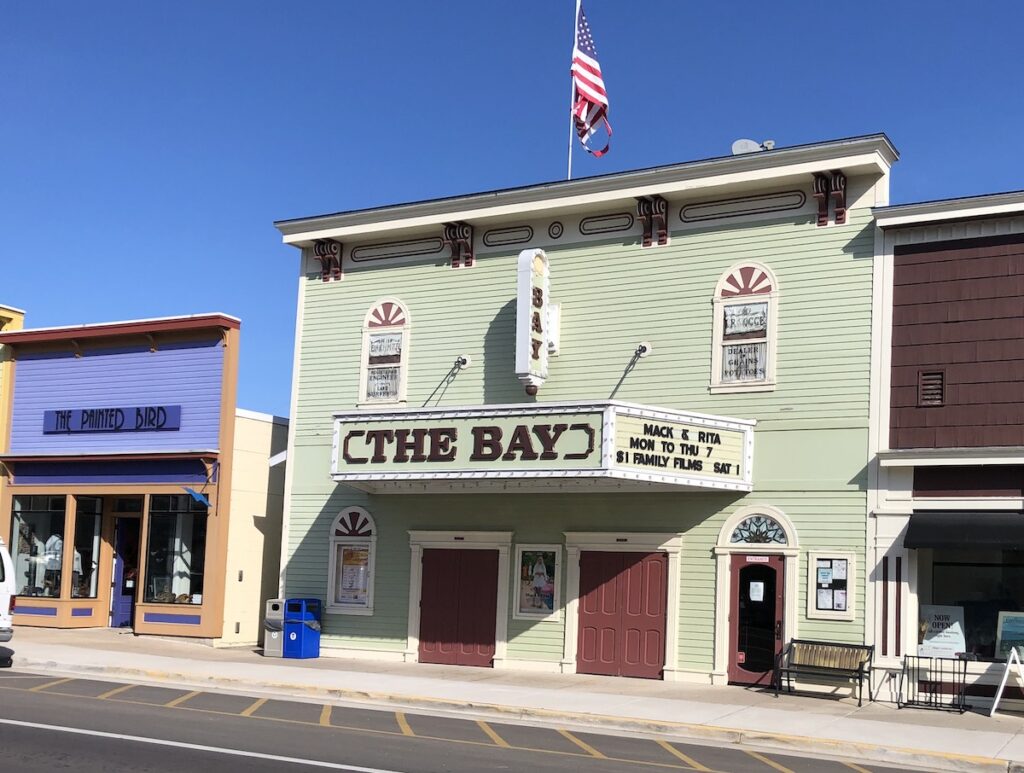
I had hoped to stop for coffee in Charlevoix with a woman from Freshwater Future, an environmental organization I support (who isn’t for clean water?) but I was fast running out of time to make it. I hit Traverse City, which I have enjoyed in the past, but it is losing its funky 50s motels, where I had often stayed years ago. Still, despite the crawling traffic and behemoth hotels and condos, the lakeshore drive retains some of its magic. Perhaps it’s because I can still hear the lake singing. US31 along the east side of the bay is not prettiest drive. In my memory it always has seemed a bit torn up, even as development continues marching northward alongside it. The sun was beginning to sink and I grew frustrated by the traffic. I passed by, but not through, Elk Rapids, where many a time in the past I’d had breakfast after spending the night in one of those funky motels in Traverse City that I mentioned. I was too late for my tentative meeting, so I slowed down and began to enjoy the road again as I reached Charlevoix.
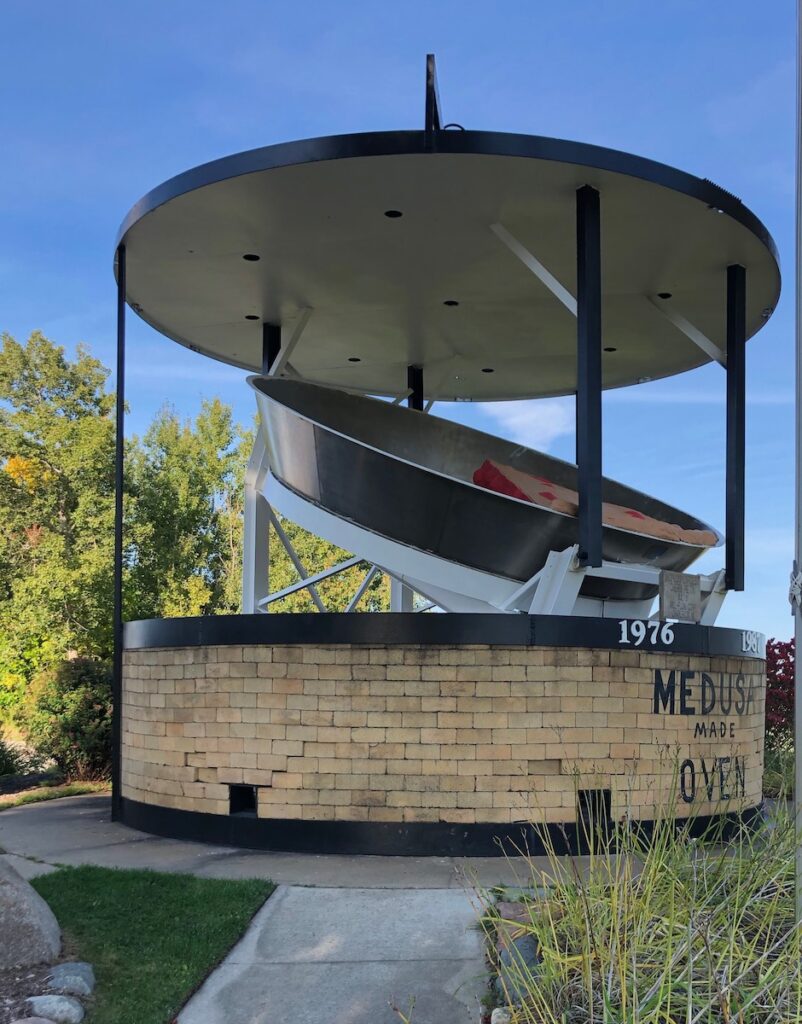
There I stopped to behold the World’s Largest Cherry Pie–or at least the pan in which it had been baked. Yes, this was a “thing”–a stunt for the nation’s Bicentennial in 1976. The pie was fourteen feet in diameter and contained nearly 5000 pounds of Michigan cherries! According to the signage this was one of the Top 20 USA Bicentennial events and is listed in the Guinness Book of Records. Fame is fleeting, however, and the site languished until renovated as an Eagle Scout project in 2009.
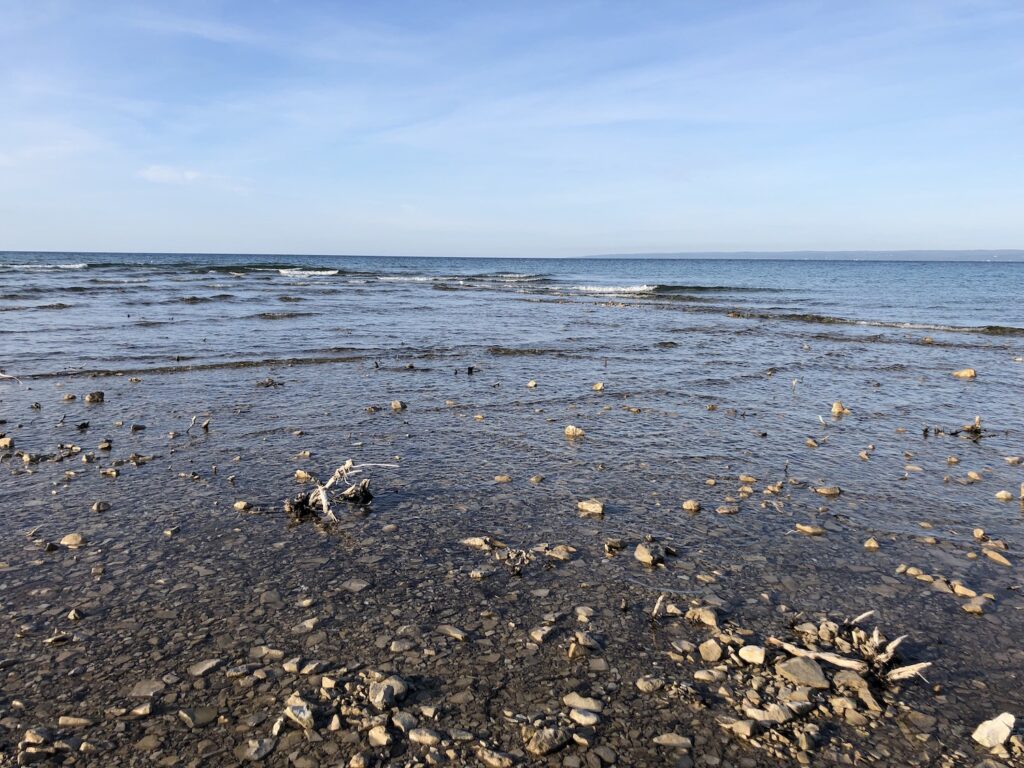
Continuing through Charlevoix now with Lake in view, I stopped in a narrow park at Big Rock Point near the former site of a nuclear plant that closed in 1997 after 35 years, then the longest running nuclear plant in the country. Consumers Energy–owner of the plant–later restored the site. It is named for a landmark that identified an important gathering place for the Odawa (Ottawa) tribes. I lingered awhile; it was so pleasant poking about the rocky shallows with the Lake muttering in the distance. Onward to Petoskey, where I spotted an abandoned or at least underused New Deal (almost certainly) building that I had to stop and admire.
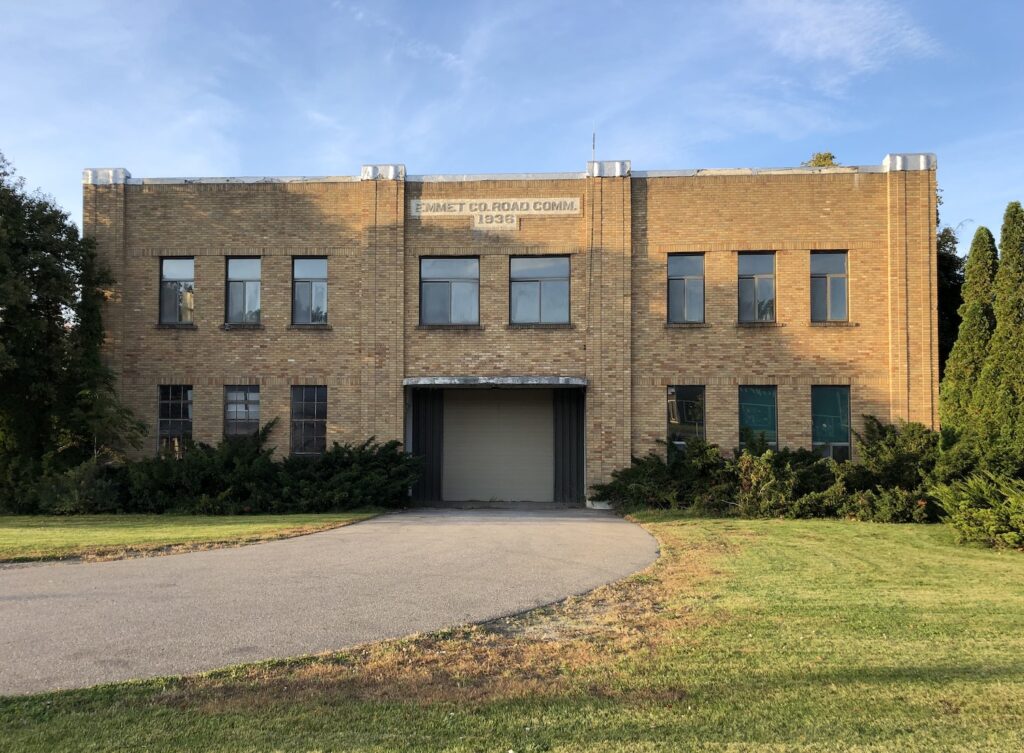
Getting into fudge country, so stopped at Kilwin’s for a disappointing chocolate soda, then elected to head up old 31, a straigher shot to Mackinac than M-22, and the light was fading. It has its own charms, still many old motels and tourist cabins.
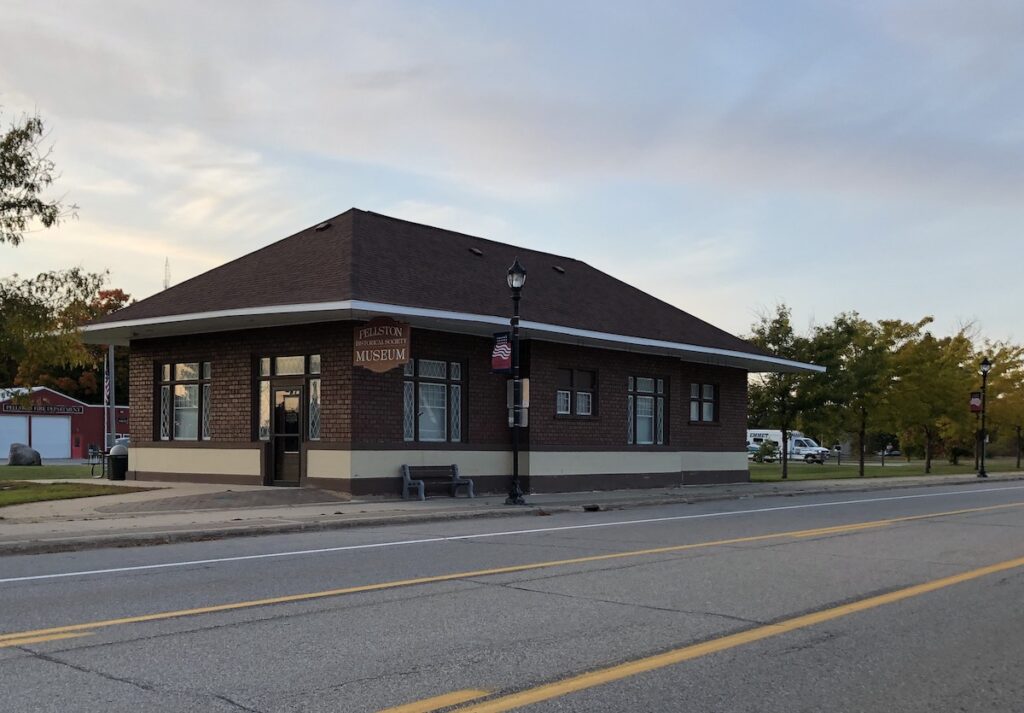
Passed through Pellston, which I remember well from years past–goodness, I remember when the railroad was still there. Happily, the depot remains and is now a museum.
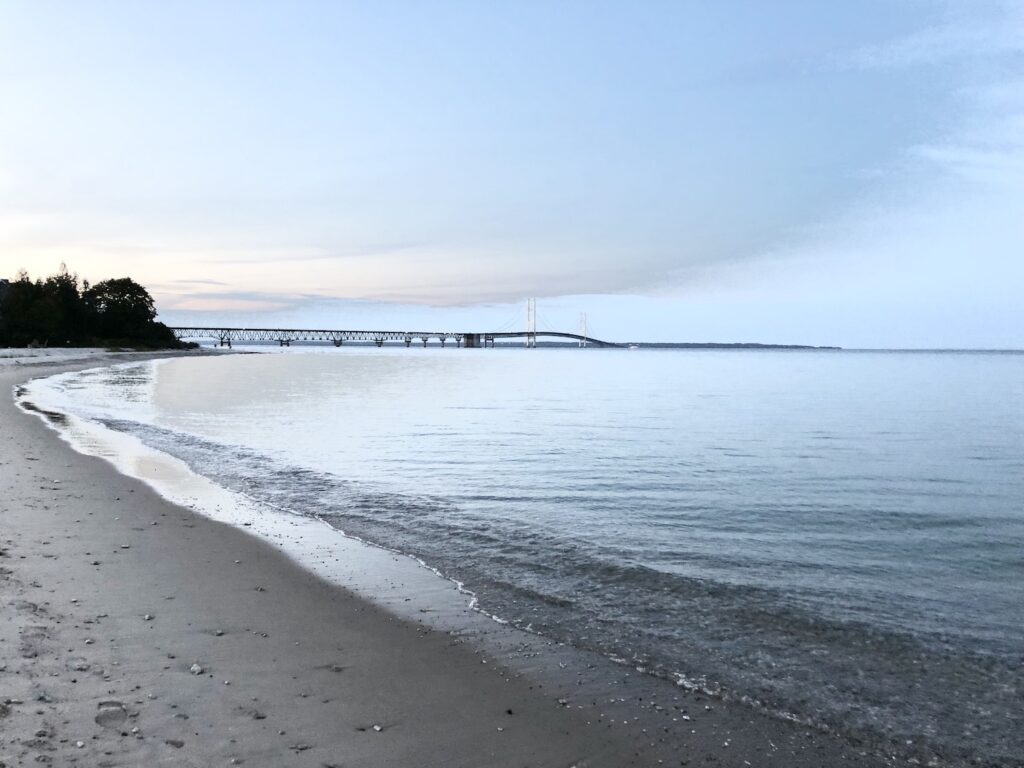
I reached Mackinaw City around sunset and paused again to admire the grandeur of the Bridge, now sporting colored lights, before looping around to cross it, always an adventure.
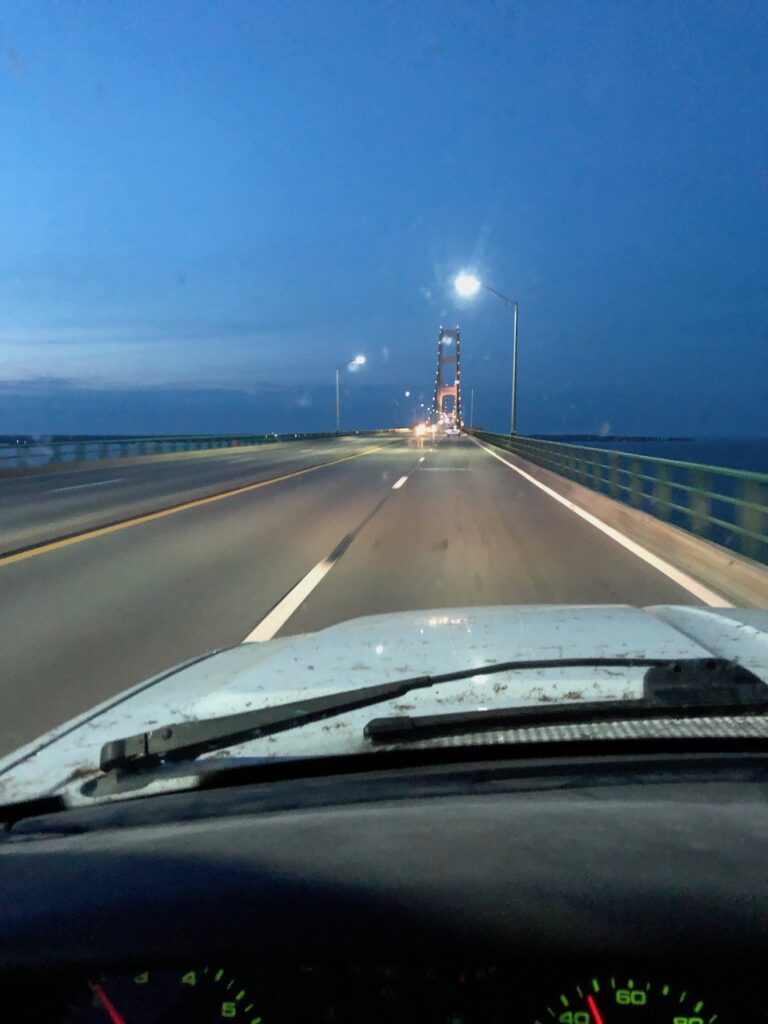
I’d called ahead to make a reservation at the Moran Bay Motel, which proved to be, happily, one of the few remaining funky motels in St. Ignace (it used to be full of them!), overlooking the bay.
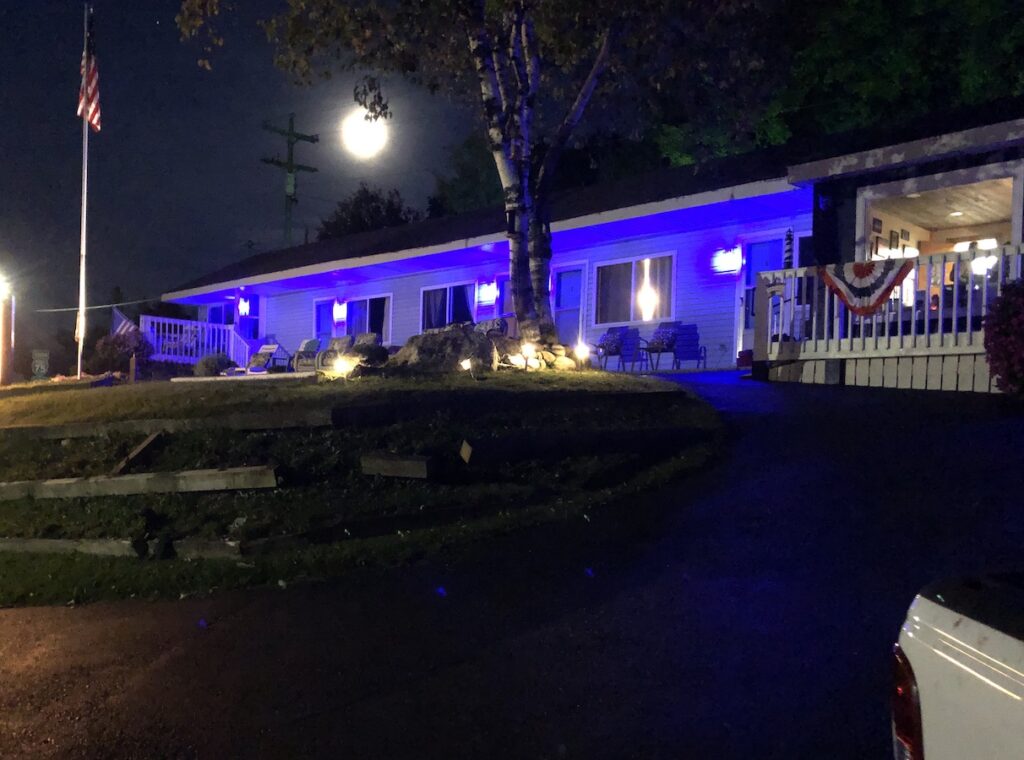
It was a tiny 50s room into which the owners had squeezed two queen beds, so it was actually difficult to maneuver within the space. No matter. It was cozy and I saw there was a pot for coffee in the morning. I took a look at it and could not figure out how to turn it on! I’d never seen anything like it. Gave up but just before I headed to Dreamland amidst the snuggly flowered sheets I picked it up again and spotted a button on the handle. I was stunned when it glowed a beautiful cobalt blue! Psychedelic dreams of the many Lake encounters that day.
